When Dave and I were planning our 2022 European travel, we decided to try a long stay in the Puglia region of Italy, an area we had never visited. Our plan was to find a town with good train access, and use it as a base to explore the region over the course of a month. We used Airbnb to search the entire region for the ideal apartment, and we found our Puglia home in Lecce, which we were very happy with. Lecce is absolutely beautiful, flush with baroque churches (22!) in one of the most charming old towns in Italy. Our apartment was in the “residential” area (which we also grew to love), and was a lovely one-mile stroll through parks and piazzas to the train station, which we used a lot. We didn’t have a rental car the duration of our stay, but did rent a car for two weekend getaways. We visited the following towns (in order):
- Lecce
- Brindisi (2x)
- Monopoli
- Ostuni
- Polignano a Mare
- Matera
- Alberobello
- Galatina
- Nardo
- Otranto
- Gallipoli

I can’t emphasize enough how much we enjoyed the pace of a long-term stay. It was really great to “live” in the neighborhood and find our favorite spots, cooking “at home” regularly, and completely unpacking and getting settled. Some Airbnb hosts have monthly pricing that can be discounted up to 50% the nightly rate, which can make a month-long stay a bargain. On the few rainy days, we relaxed on the couch with Netflix and caught up on our shows. We watched from afar as Hurricane Ian battered our town in the US. It was nerve wracking! As mentioned, we saw a lot of towns and really got a feel for Puglia. It was great not dragging luggage everywhere; even on our overnight road trips, we just had one shoulder bag each.
We felt having a home base for 30-days was ideal, but obviously that’s not an option for most people. If you only have a week or ten days, I recommend Lecce, Otranto, and Matera for multi-day exploration; the other towns on our route would make great day trips!
Lecce
Of all the towns we visited in Puglia, Lecce was our favorite so we were thrilled it was also our home base. We arrived one day later than originally planned; our flight from Heraklion to Bari was cancelled, so we rebooked to Rome and took a train to Lecce. We stopped midway for the night in Foggia (was not a highlight), and continued to Lecce the following morning. Arriving at the Lecce station, we found plenty of cabs, and were at our apartment within 10 minutes for about $10. Our flat was in a quiet area, and our terrace windows were open as much as possible.

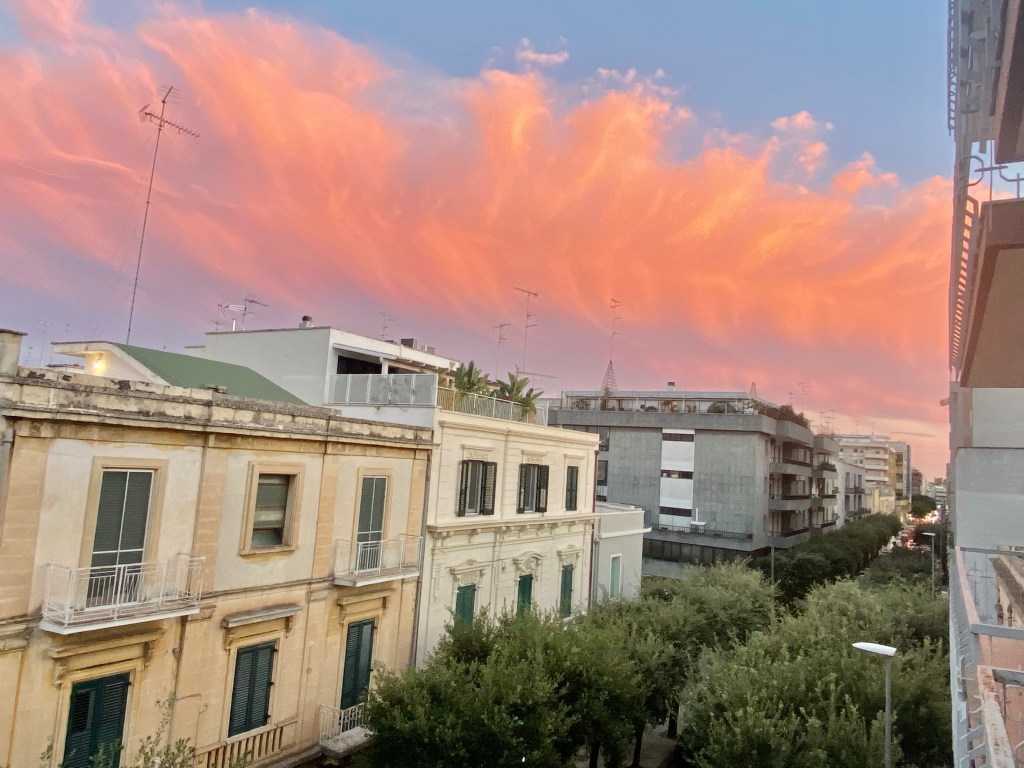
One of the requirements of our apartment search was a good kitchen, and a washer/dryer. The kitchen in our place was excellent and I cooked a ton. As much as we loved Lecce, cuisine diversity isn’t a strength, so it was nice to eat something other than Italian food on occasion.
Exploring Lecce was an ongoing – and delightful – project during our stay. Its old town is compact, but there is an endless maze of cobbled lanes to occupy many hours. Lecce is often called the Florence of the South, but it reminded us of Rome more than Florence. Our regular route to the old town led us through the regal Giardini Pubblici Giuseppe Garibaldi and Palazzo dei Celestini, to the via Umberto I, which pops you out at the dazzling Basilica di Santa Croce (c. 1695). The façade is eyepopping, and there is always a cluster of tour groups admiring its beauty. Even after seeing it almost daily for a month, we never stopped marveling at it.
We proceeded through a shady lane, lined with café tables and restaurants, and found ourselves in the piazza Sant’Oronzo. Sant’Oronzo’s column is the first thing you see, but this piazza also contains a Roman Amphitheatre from 2AD. This is the main piazza of Lecce and we found ourselves here at the beginning and end of every day we were out and about. The waiter at our favorite café started bringing our usual drink order as soon as he saw us, which makes you feel a little like a local.
All our time in Lecce was spent wandering both the old and new towns, trying new restaurants (and revisiting new favorites), and planning day trips. Many of the more interesting churches in Lecce require a ticket to enter unless you are a resident. One afternoon we purchased the LeccEcclesiae ticket and made an afternoon of viewing the inside of some of the more beautiful churches, including the most popular: Basilica di Santa Croce and the Duomo. The pass also includes some museum entrances; tickets are purchased at the Basilica di Santa Croce. One of the joys of our train trips was walking back to our apartment from the train station at dark. Lecce was lit beautifully and there is always a lively buzz of people filling up the tables in the alley restaurants, the piazzas, and the area around the Castello Carlo V, a 12th century castle.
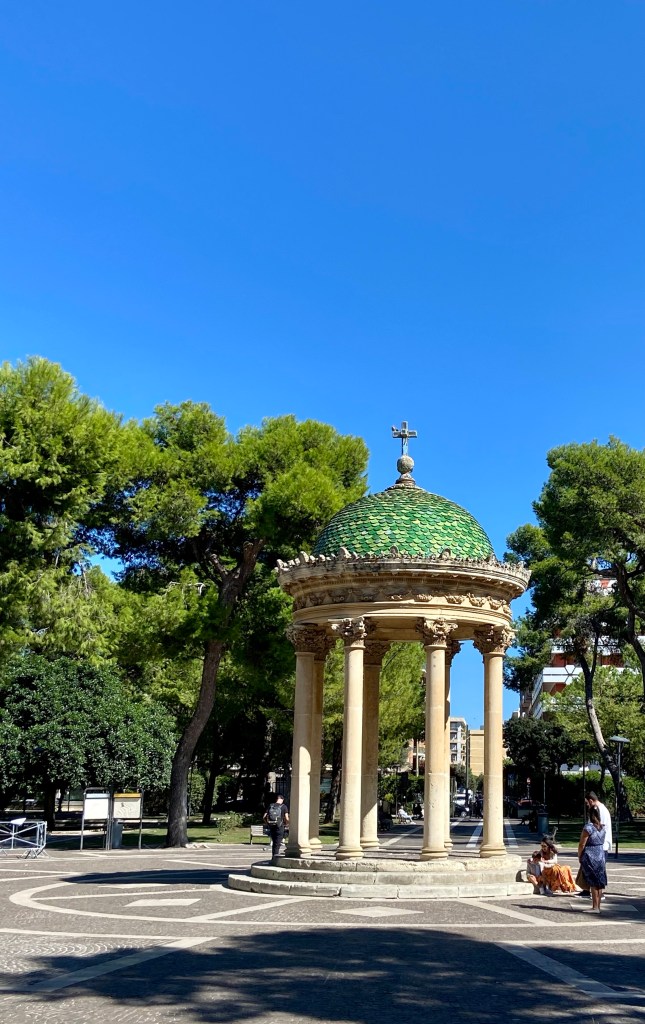


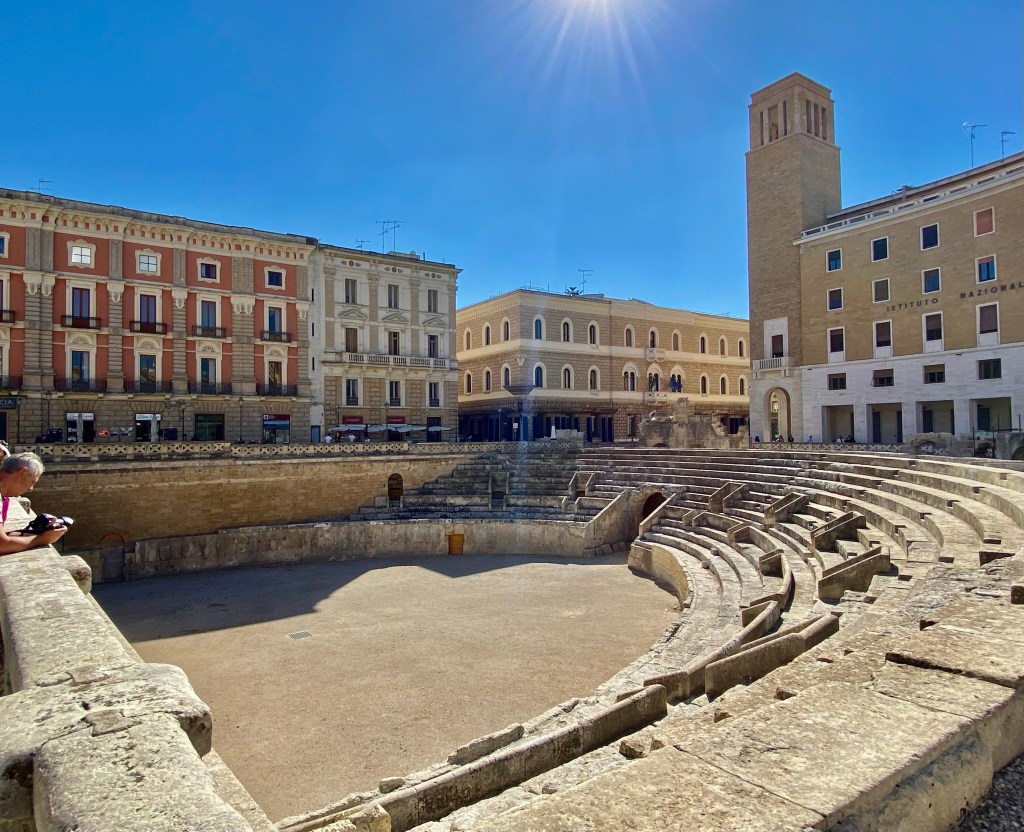



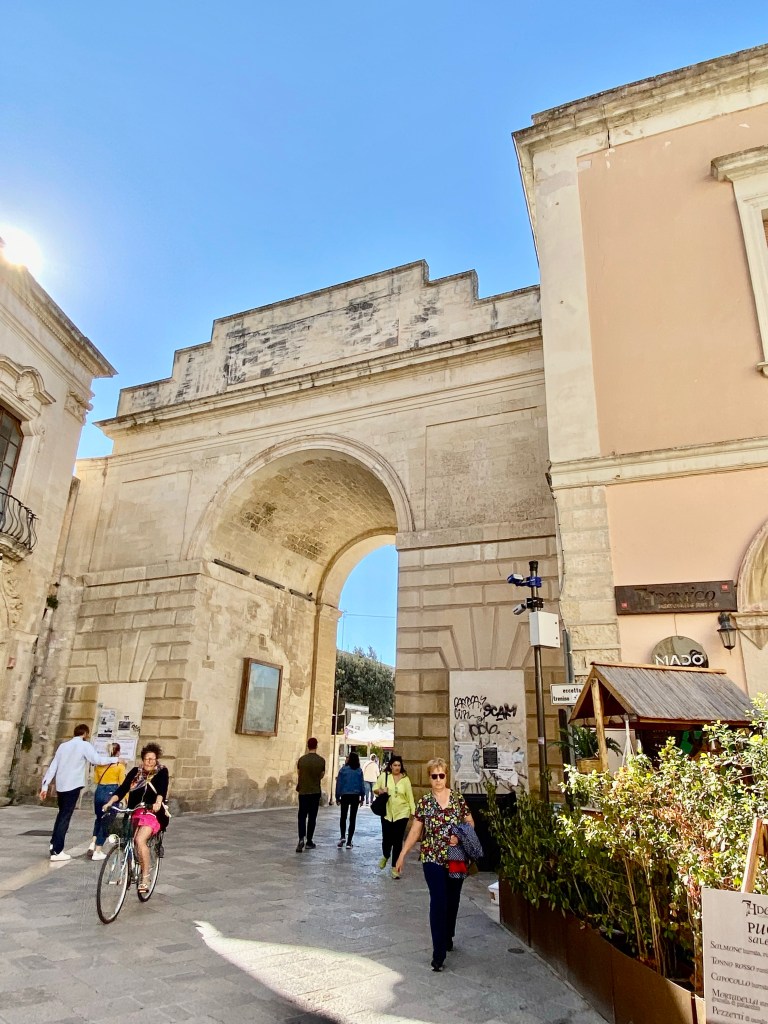
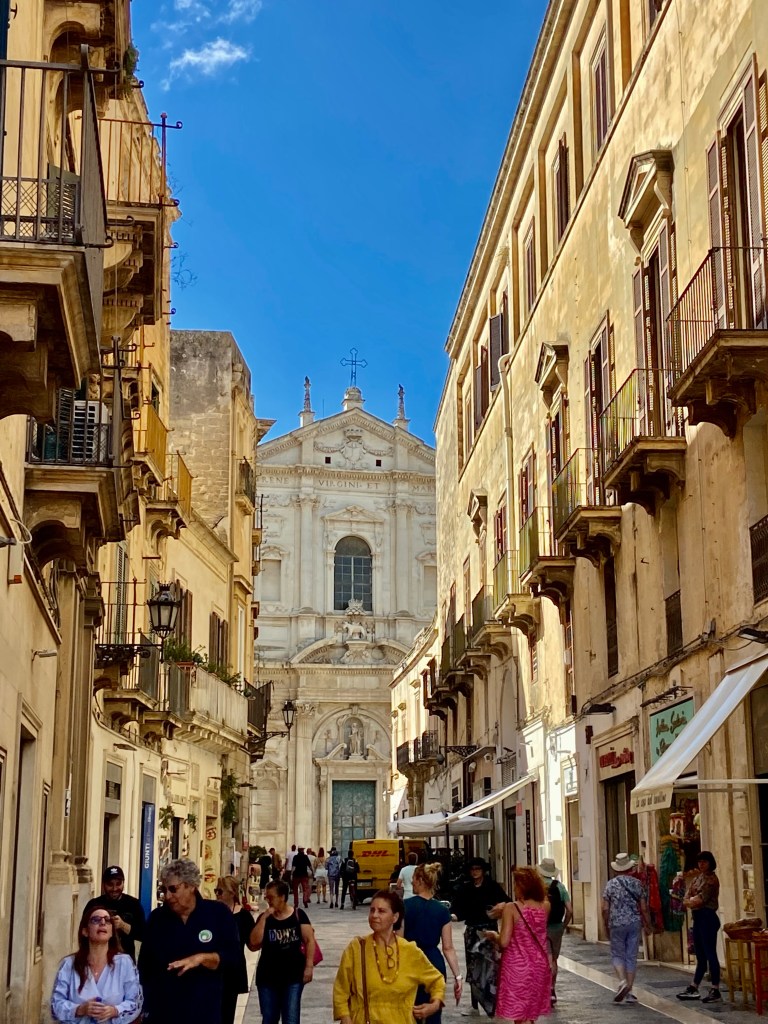


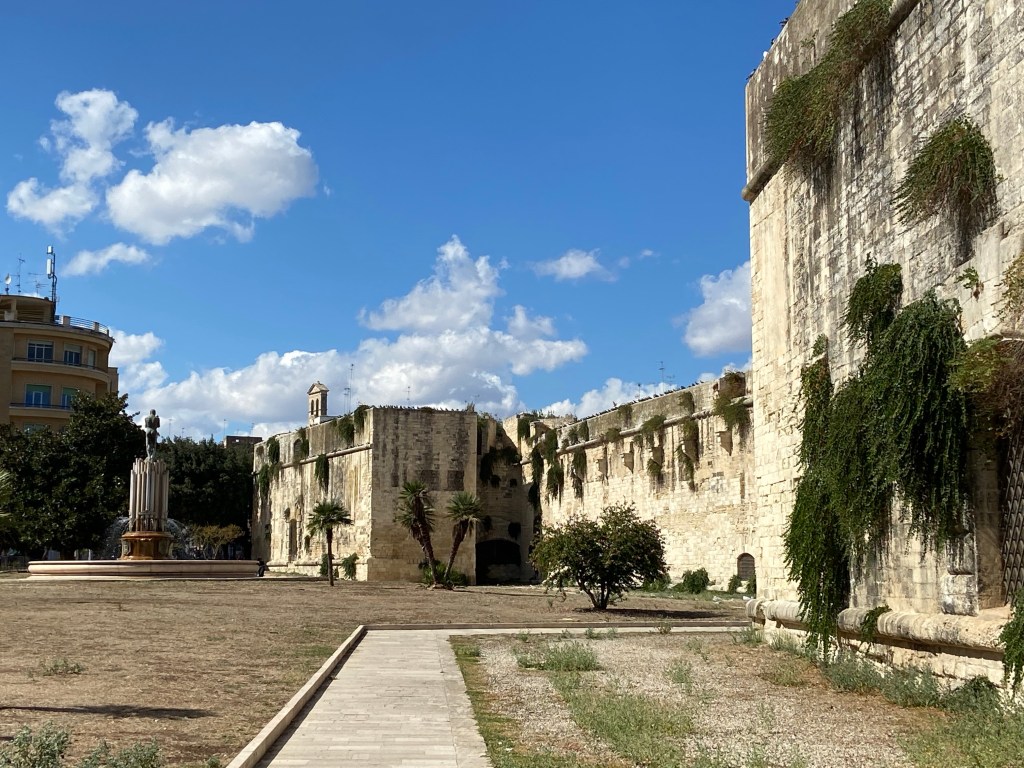




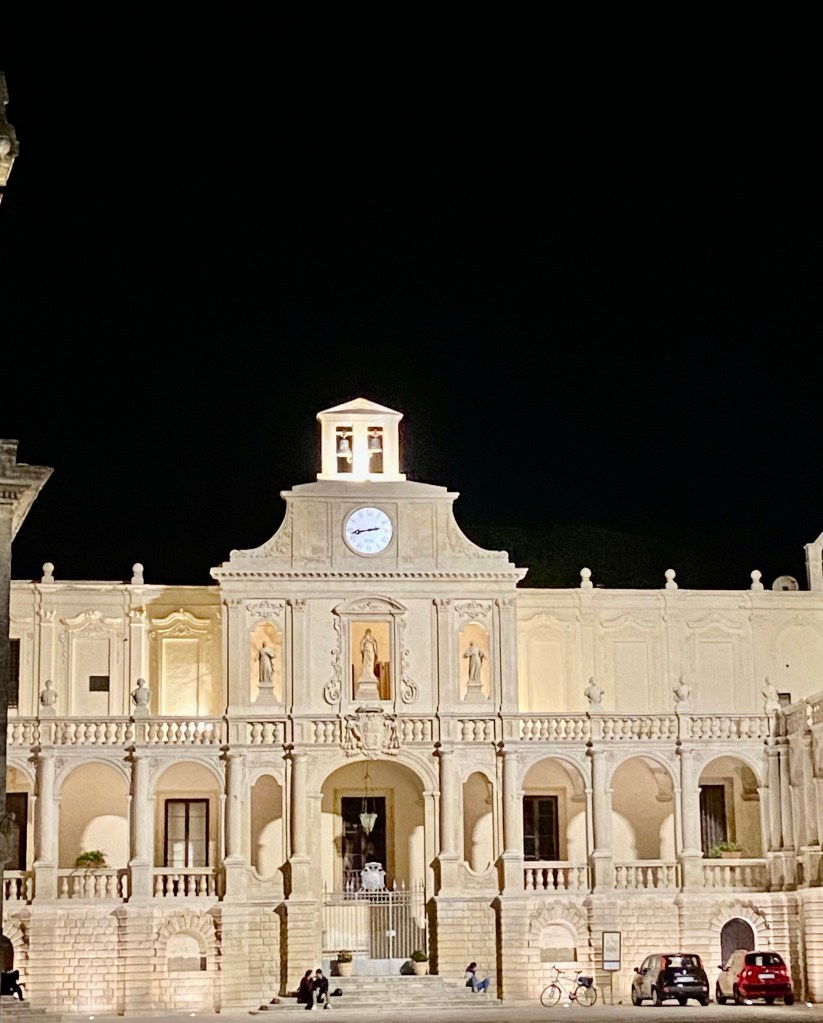
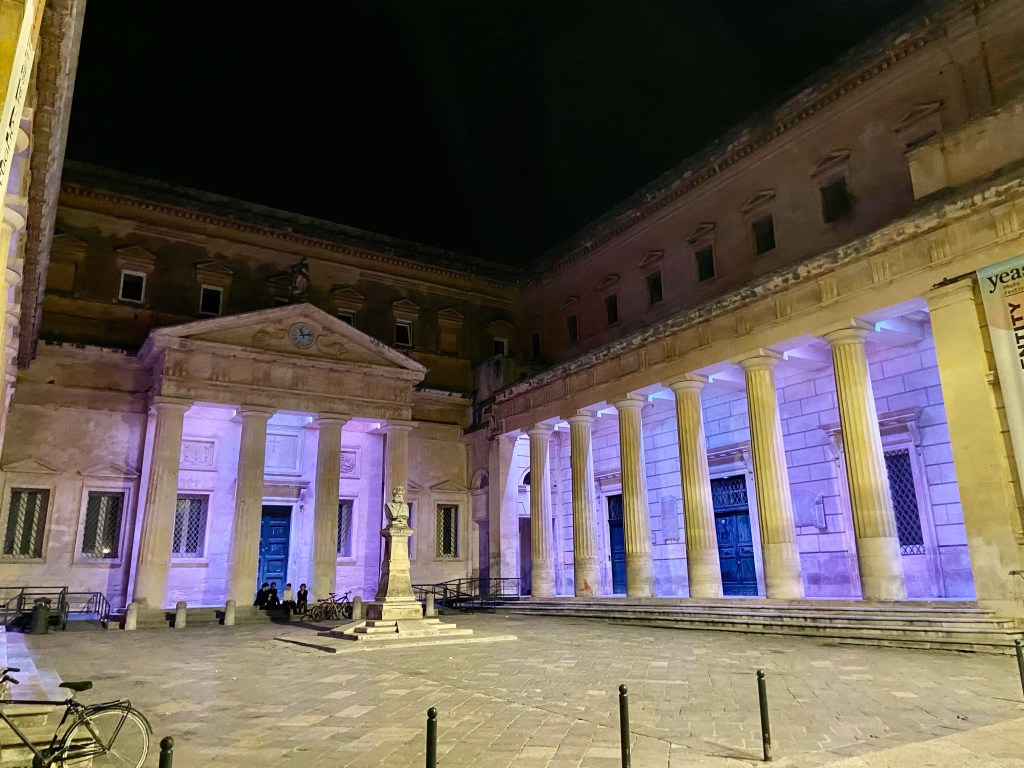
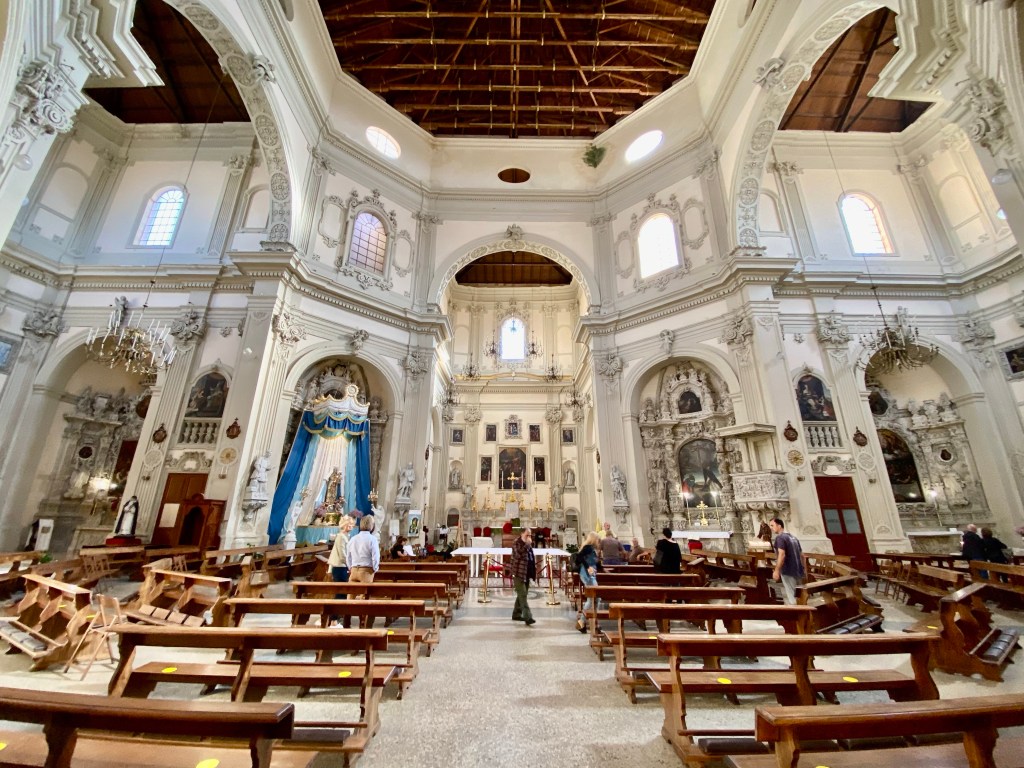

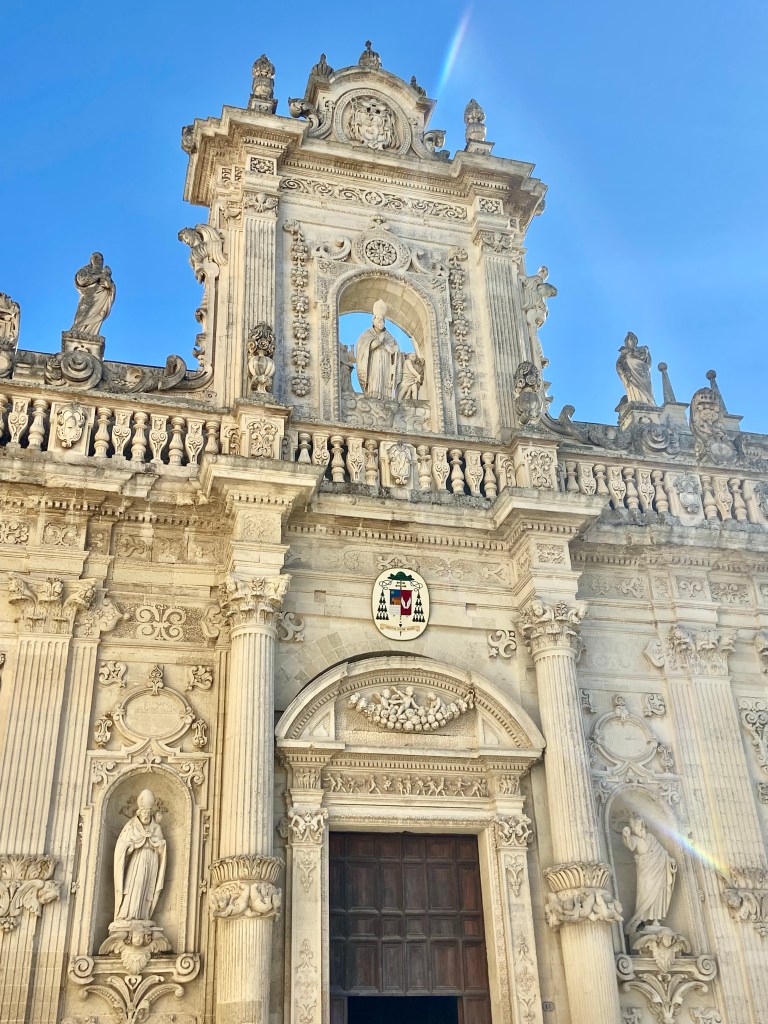
Brindisi
Our first day trip was to the ancient city of Brindisi, which was about 30 min. by train, and the tickets were $4 each way (per person). Brindisi was originally a Messapian settlement, but was conquered in 267 BC by the Romans. We met a barkeep who was very knowledgeable of American basketball and he and Dave had a great talk. Nearby was the Saint Pietro of Schiavoni Archeologica Area. We made friends with the servers at Betty’s as it was always open for a beer, gelato or a slice. The lasagna was pretty good too! We wandered the harbor and climbed steps leading us to (and from) the old(er) town, and as always, there was no shortage of pretty churches. The waterfront has some lively eating spots both by the ferry port and harbor. We stumbled in to an adorable place called Trattoria la Braciola for a memorable meal. There was a language barrier, but we were all smiles.
We spent an unexpected night in Brindisi on our last night in Italy. Our flight from Bari to Bordeaux was canceled (we were never meant to see Bari apparently), so we took a flight the next day from Brindisi. It was nice to see the crew at Betty’s again!
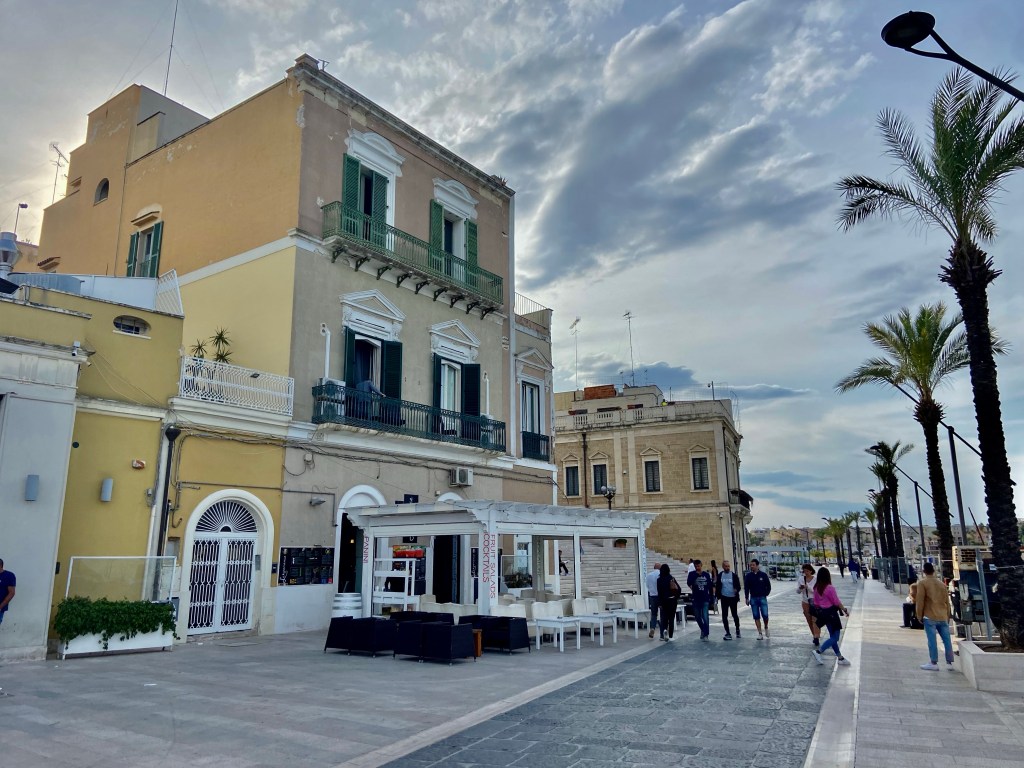
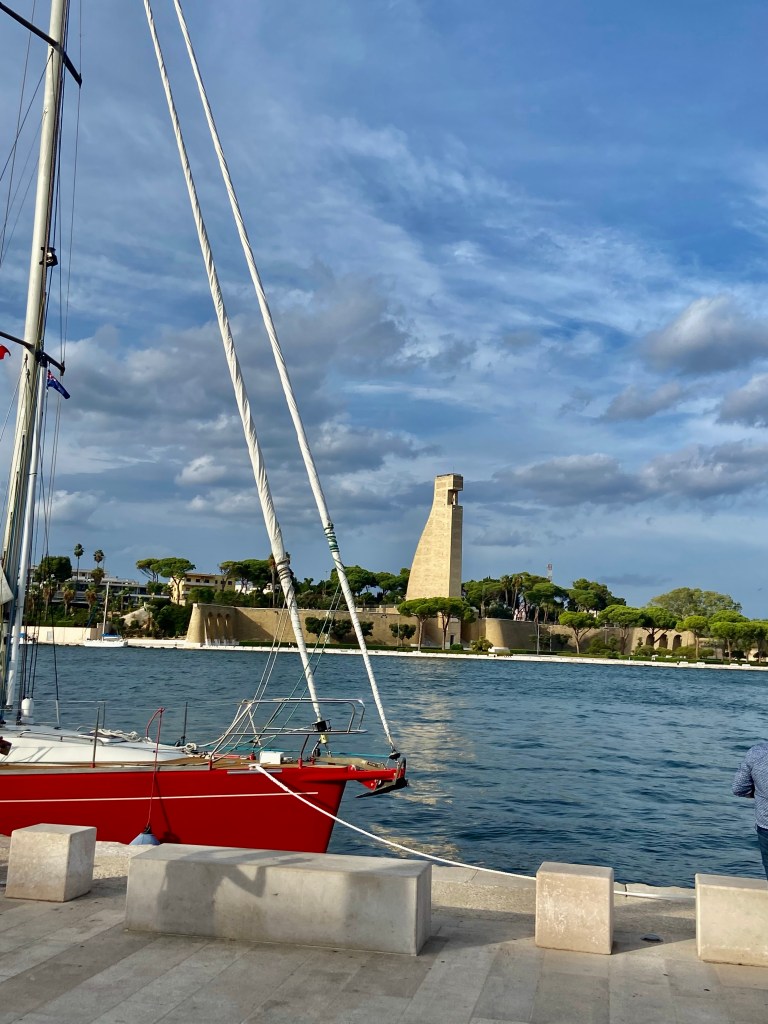
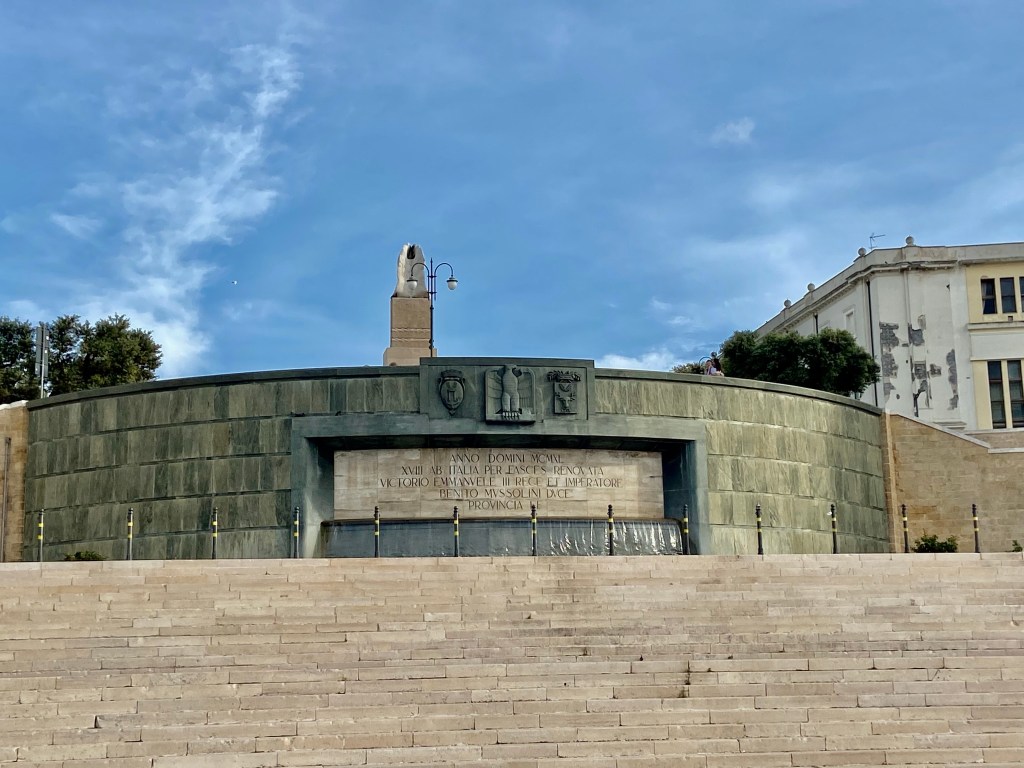

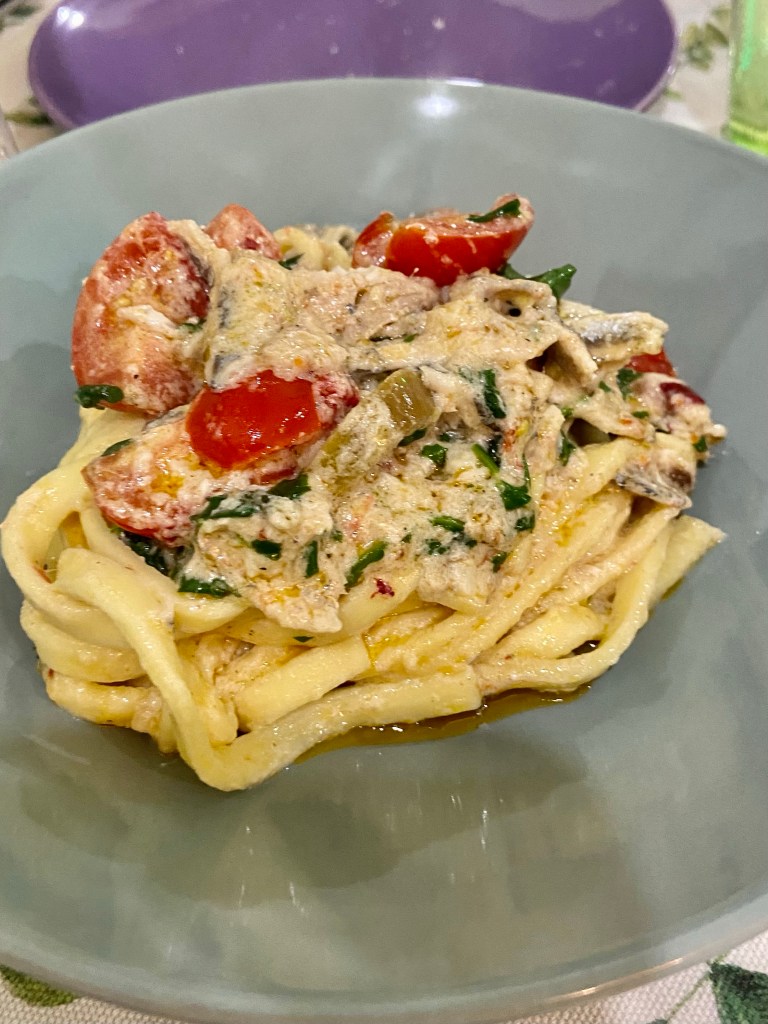

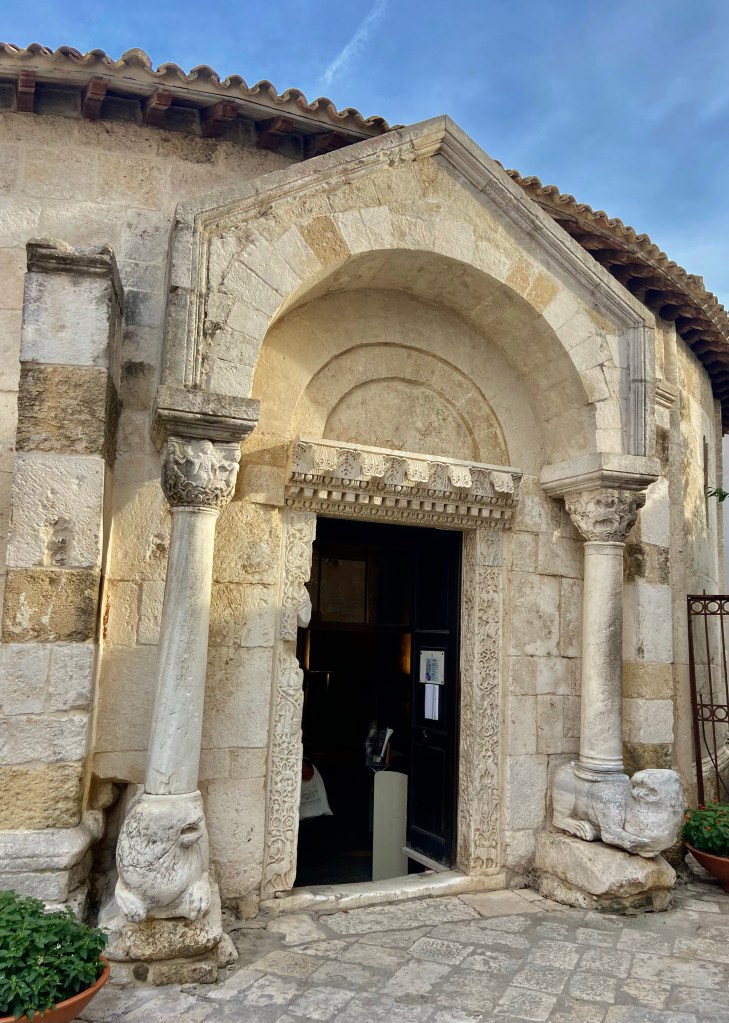
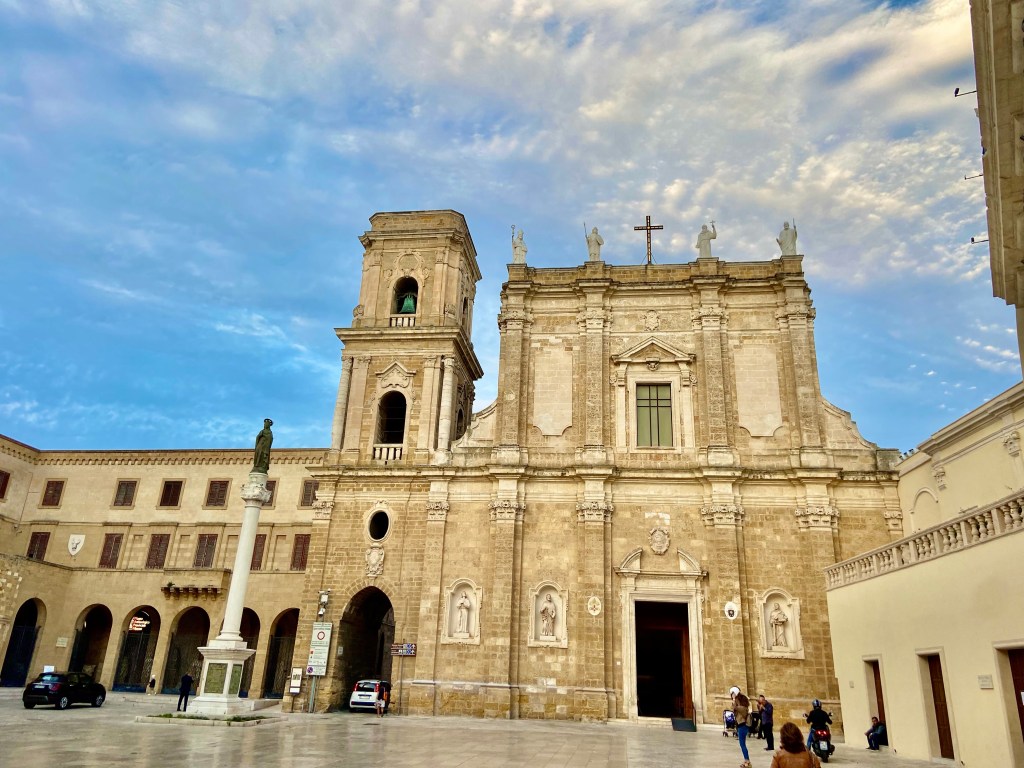


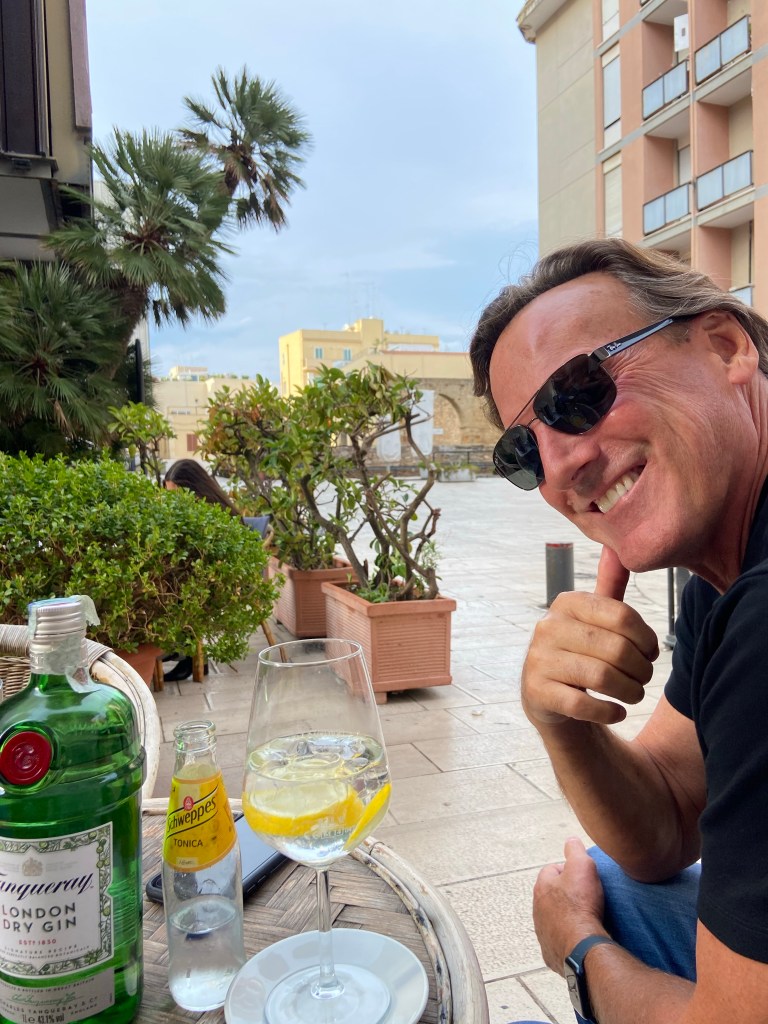
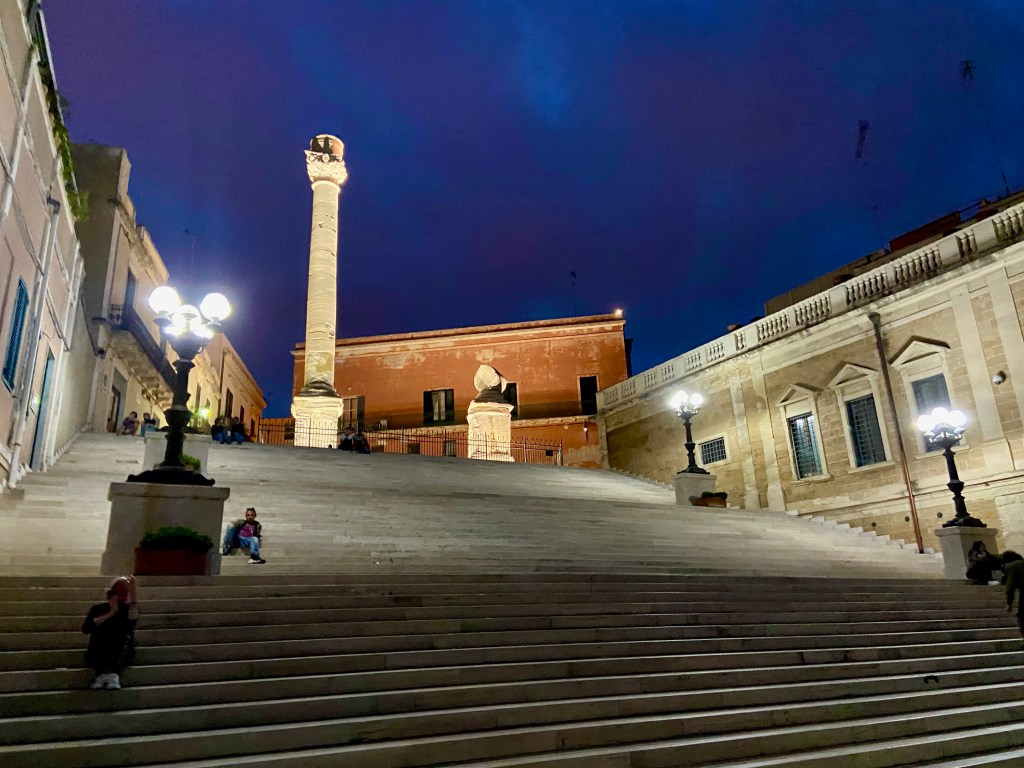

Monopoli
We took the one-hour train to Monopoli ($10pp each way), which was originally settled in 500 BC. It was a bit of a walk from the train station to the main square, but before we knew it, we were sitting at a table in the Piazza Giuseppe Garibaldi, soaking up the view with a cold beer. Monopoli has a lovely old port and a beach that’s suitable for swimmers. We loved getting lost in the white marble passages with hardly a tourist in sight. In addition to a cute walking town, the Monopoli Cathedral is definitely worth a stop. Don’t skip a walk along the city ramparts, starting at the Castello Carlo V gate.

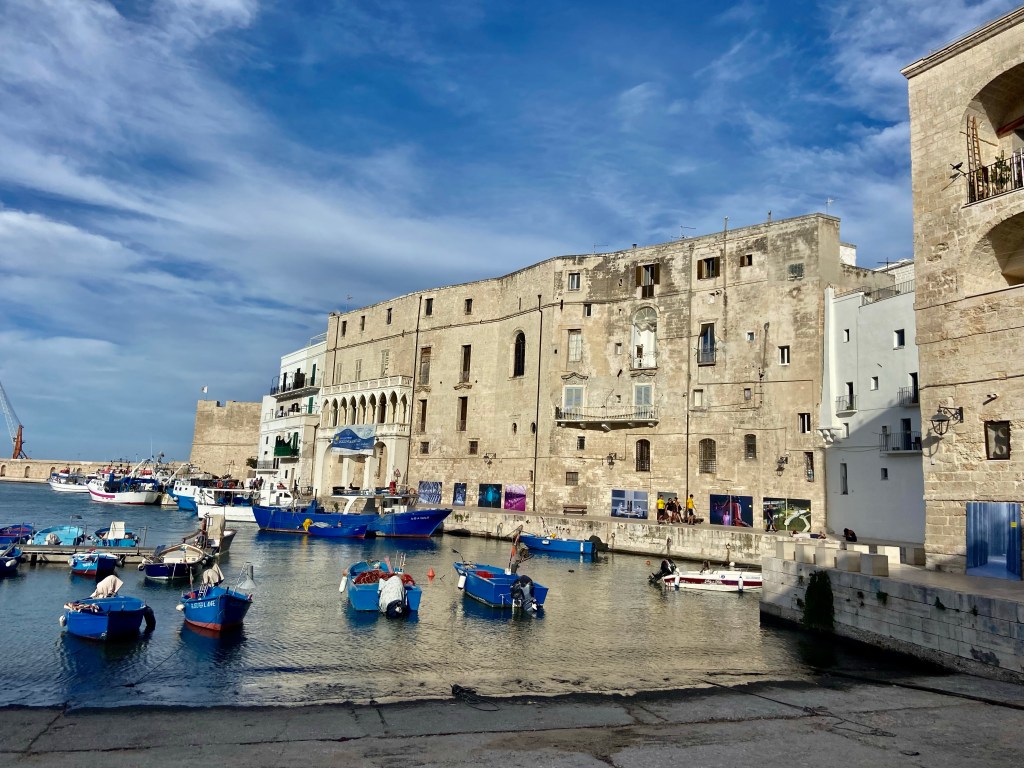
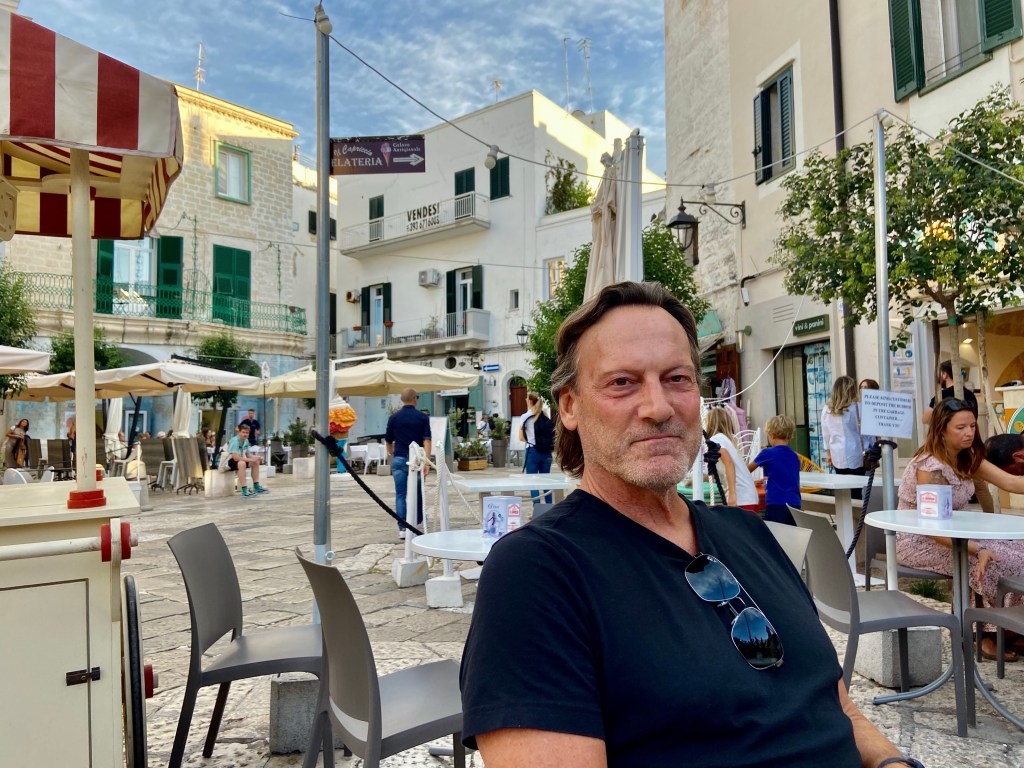

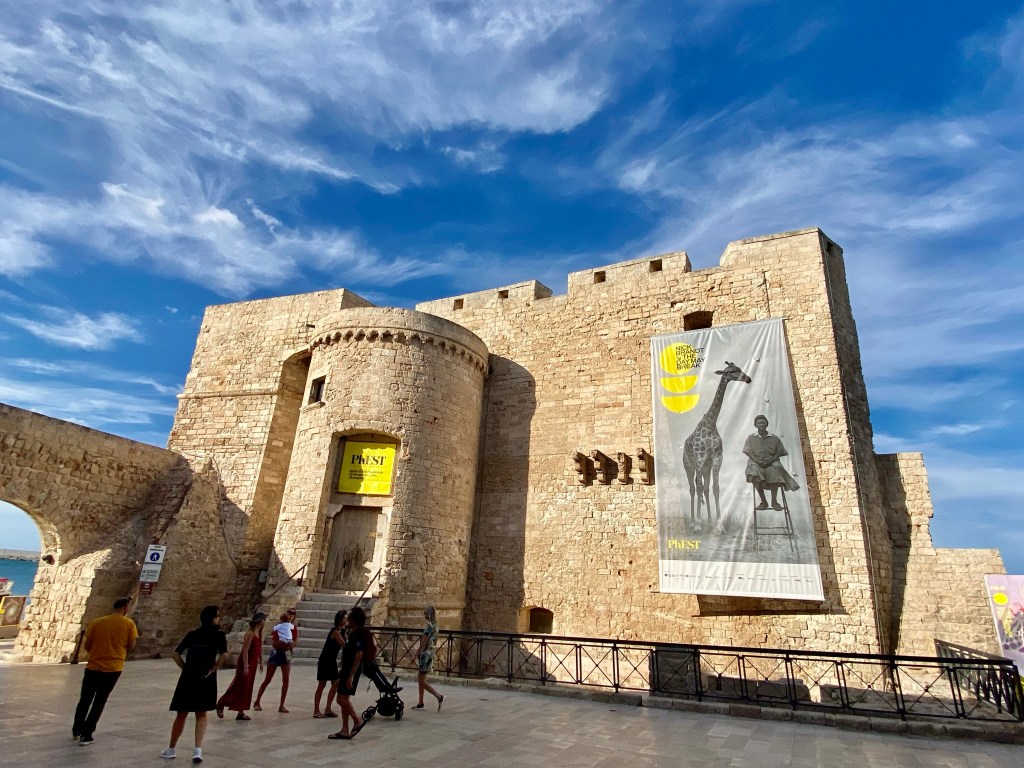

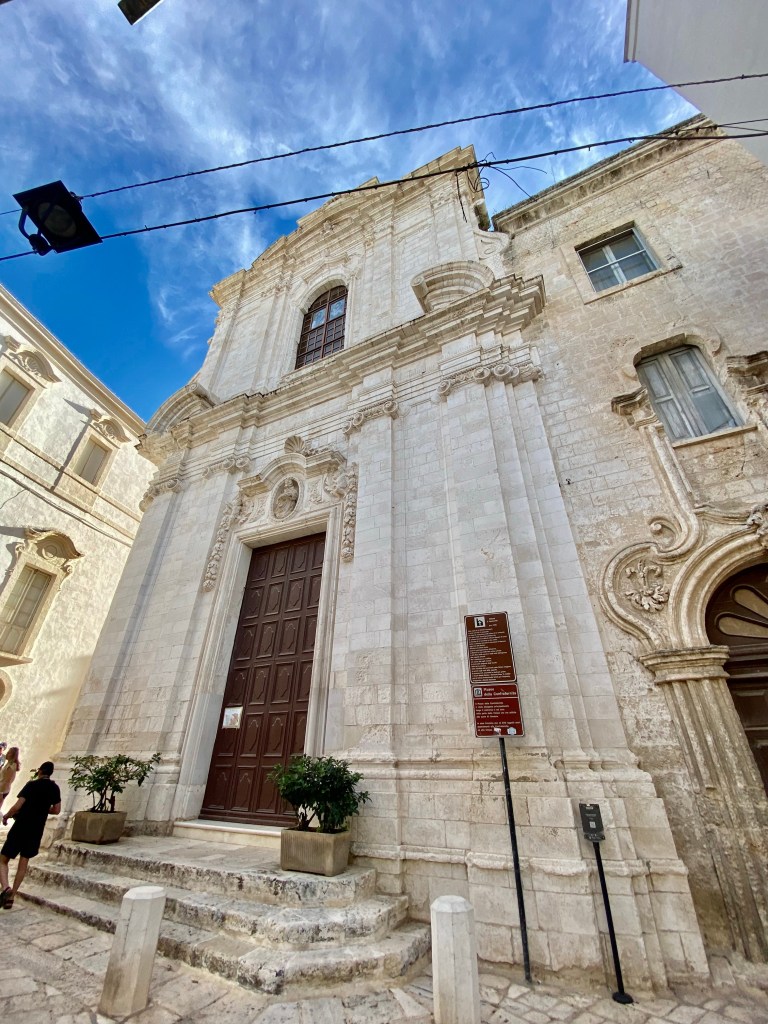

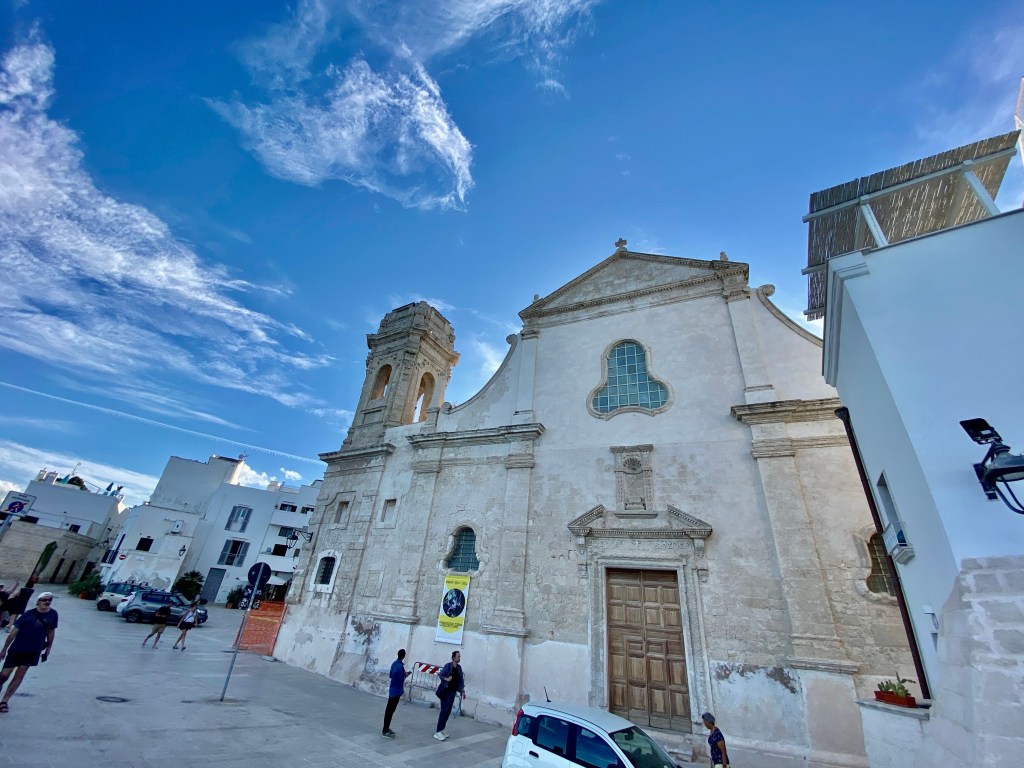


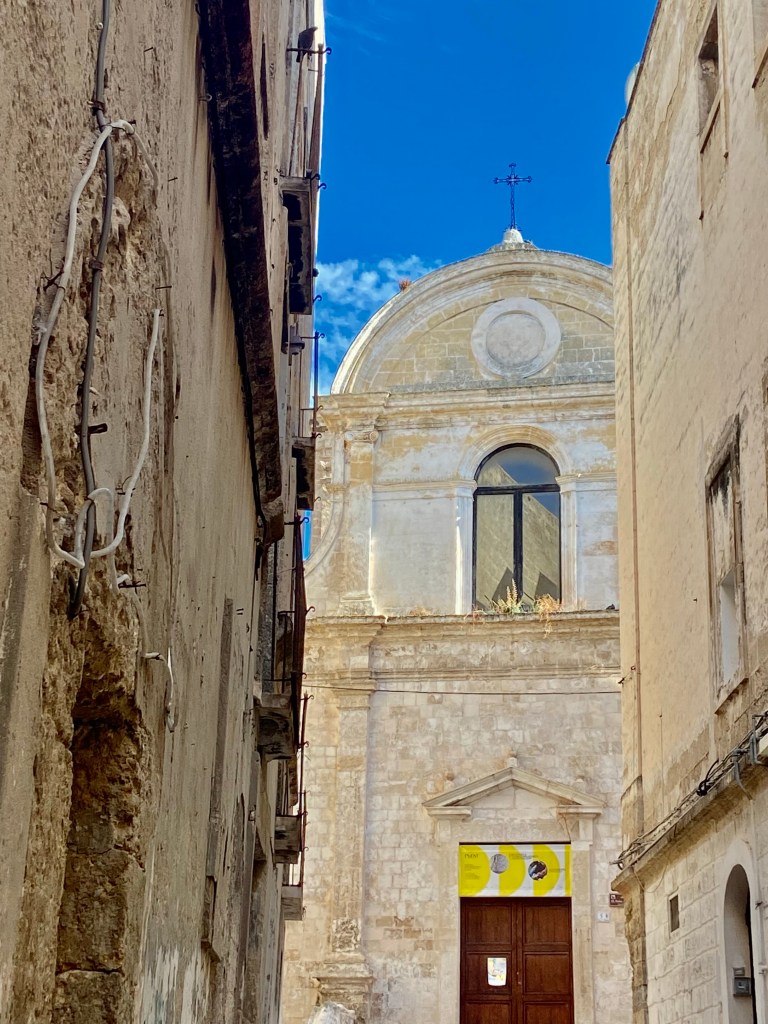

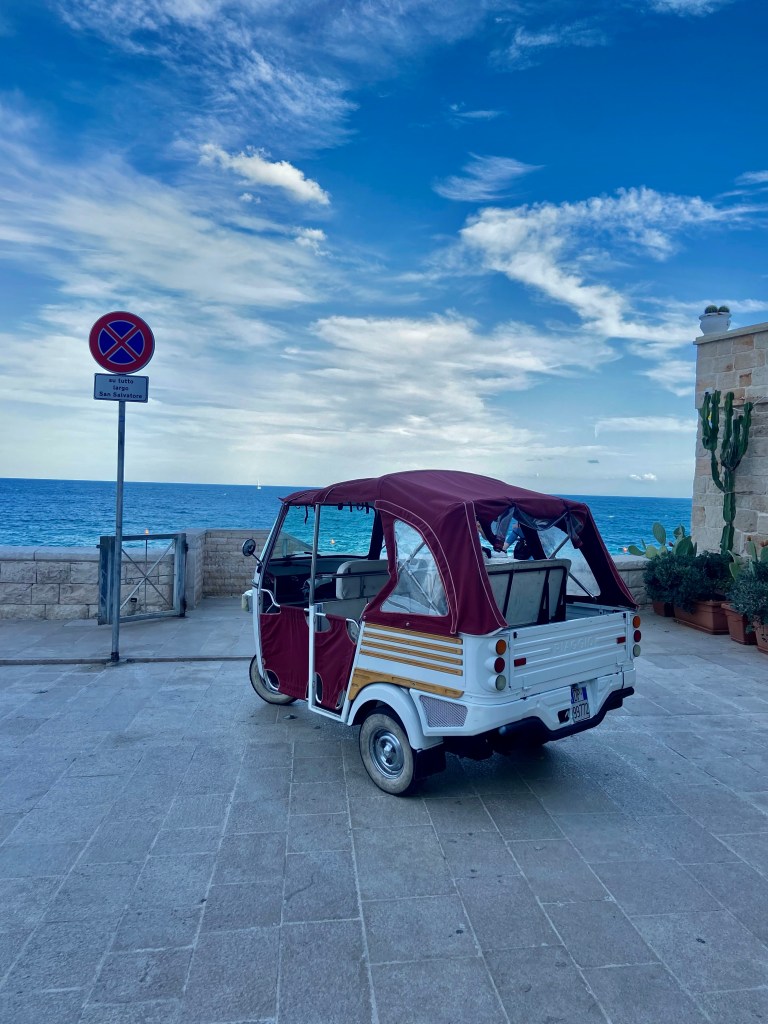


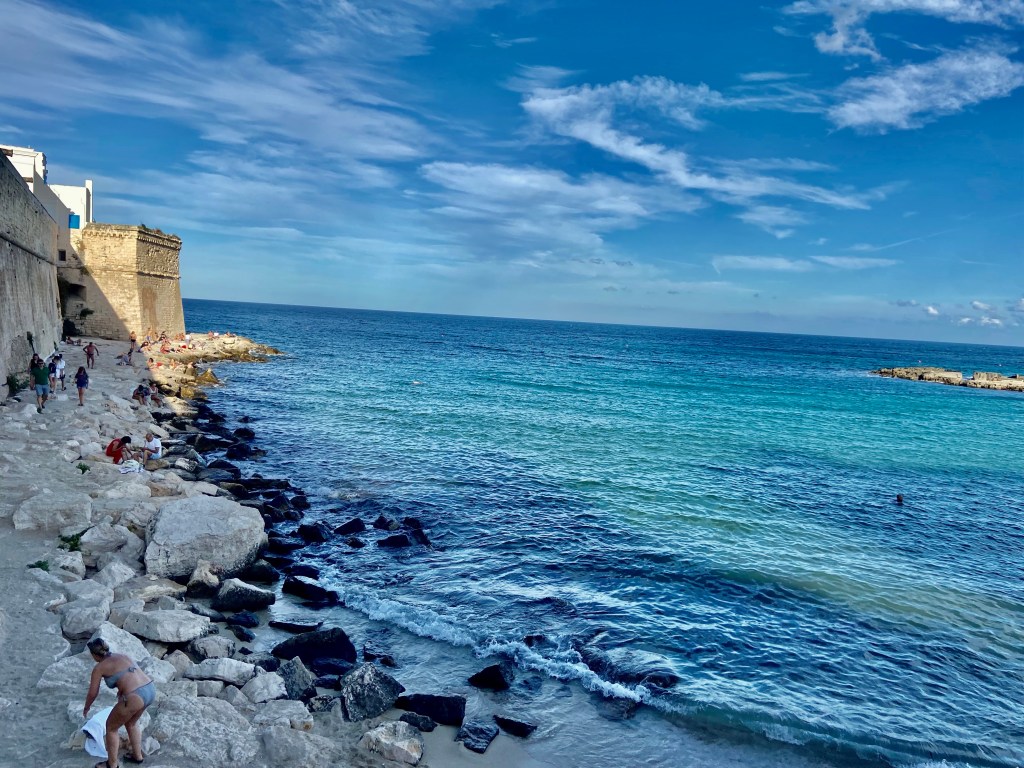
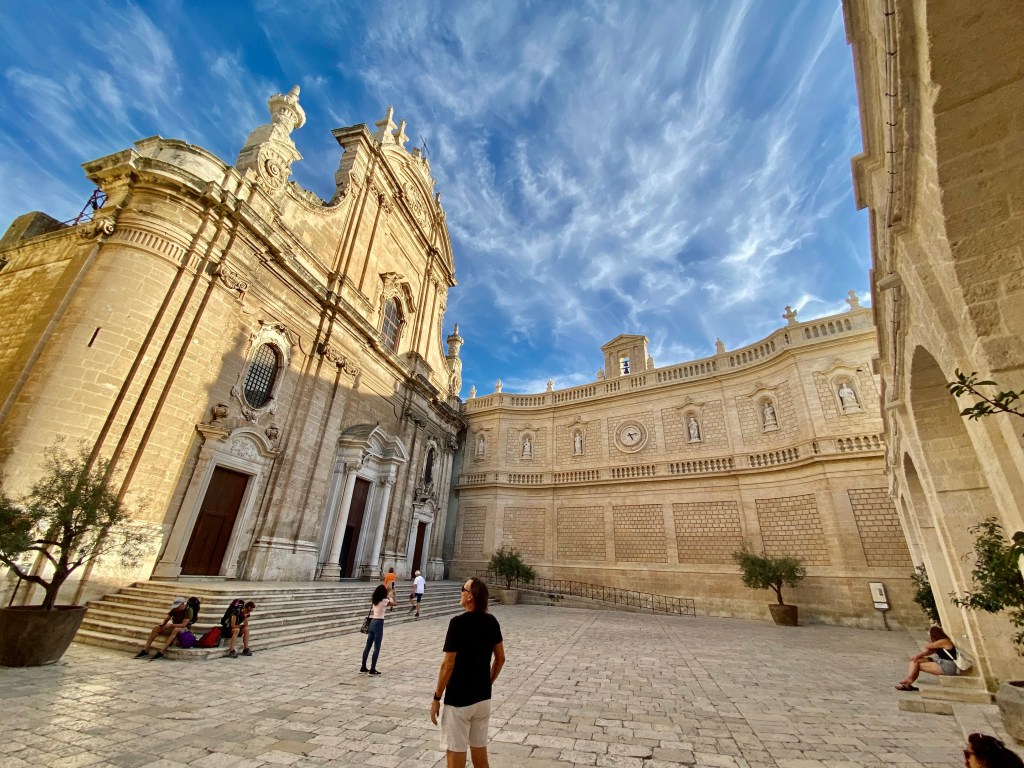
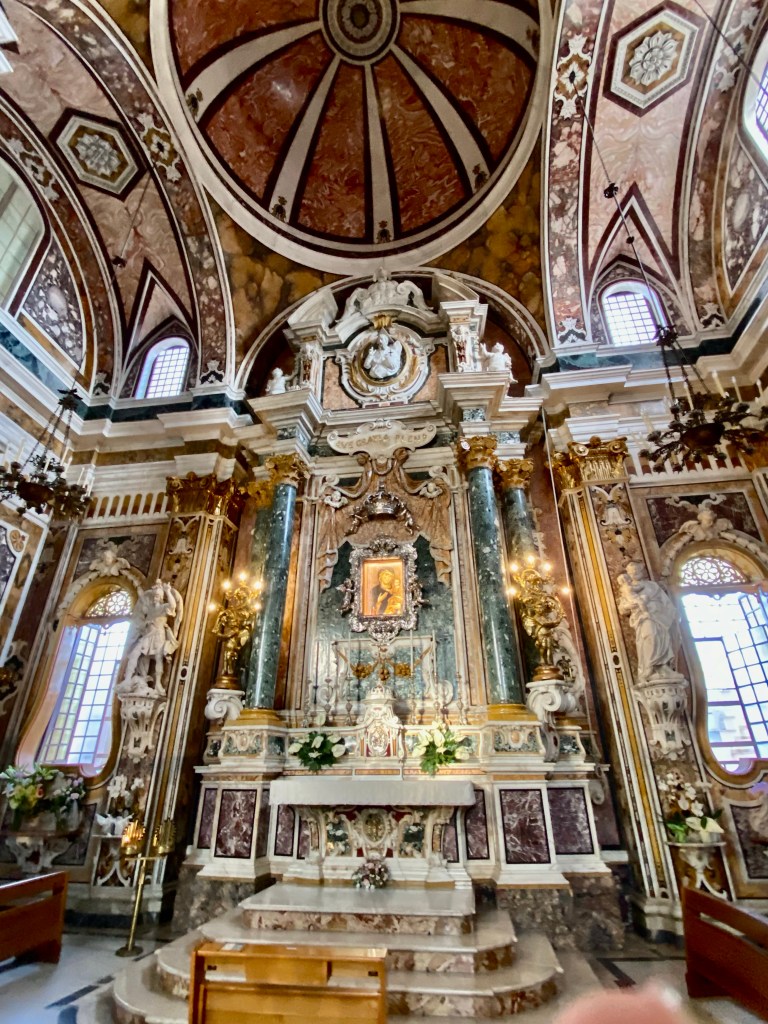

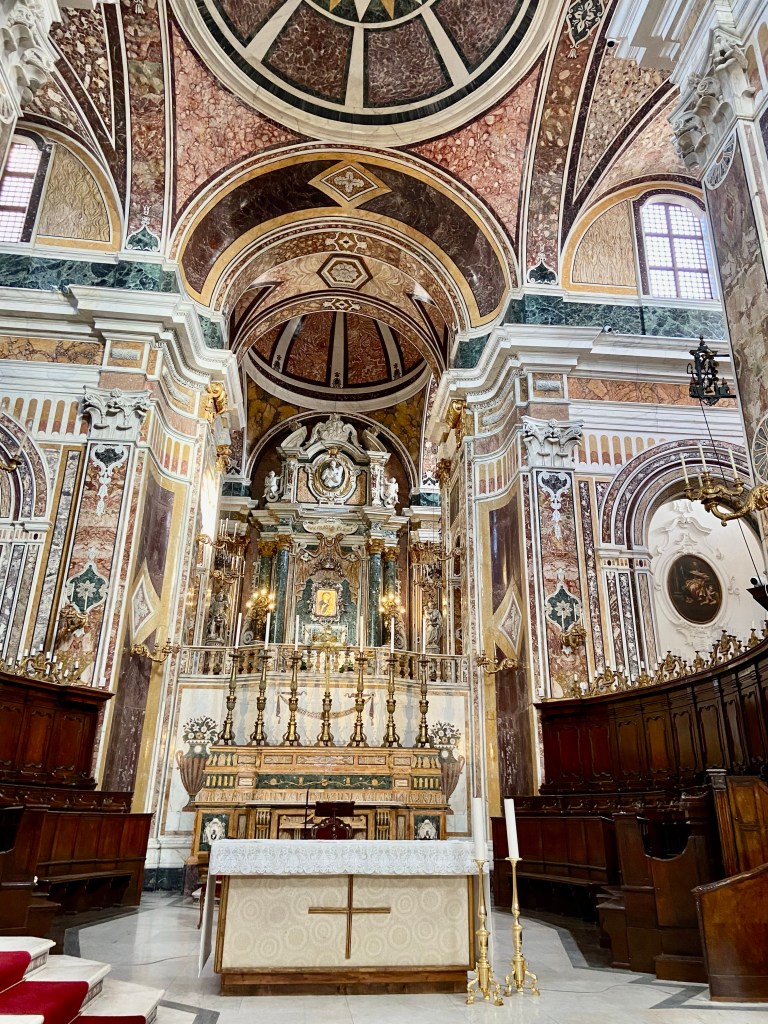
There were a cluster of towns that weren’t on a direct train stop, so we mapped a route and took a two-night road trip to four towns (Ostuni, Polignano a Mare, Matera, and Alberobello).

Ostuni
Often referred to as the White Town due to its white painted buildings. Just an hour by car from Lecce, it was an easy drive, and we found a pay parking lot a short walk to the old town. As we entered the town on foot, the first sight we encountered was the Obelisco Santo Patrono with another column dedicated to Sant’Oronzo. There are some cafes here as well as the Chiesa di San Francesco d’Assisi. Walk along the Via Cattedrale, ducking down the Via Alfonso Giovine, then climb the steps to the Via P. Vicente and the Church of Saint Vito the Martyr. We had a great meal of delicious pizza and meatballs at Osteria Pizzeria Sant’Oronzo before we started our drive to Polignano a Mare.
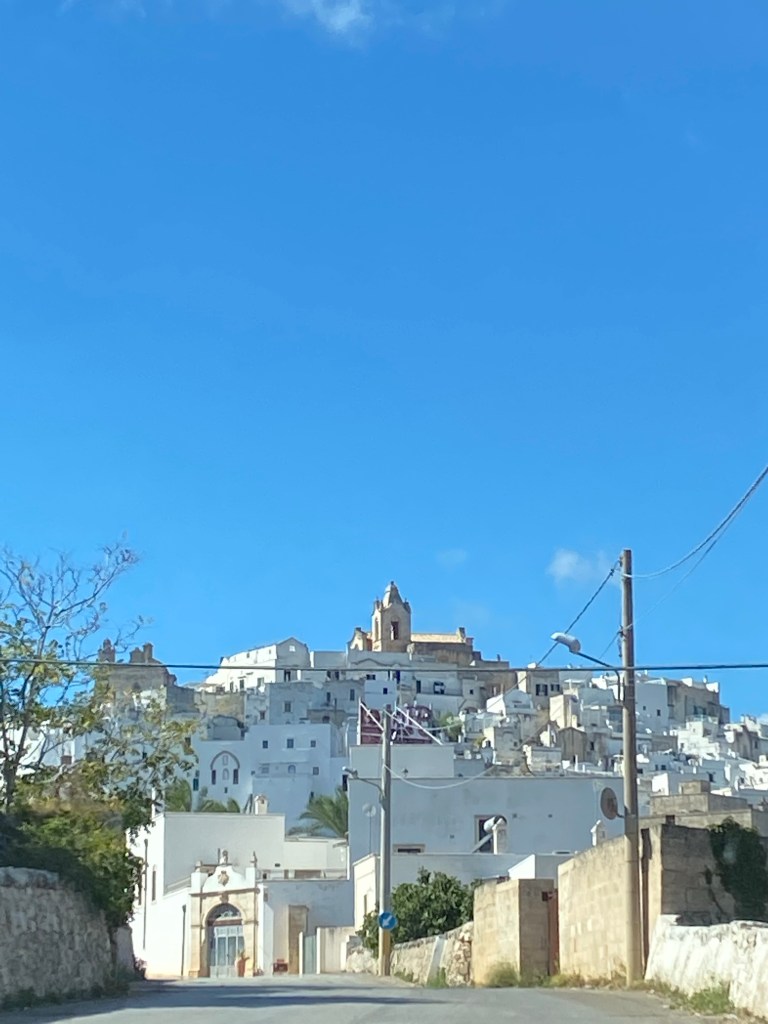


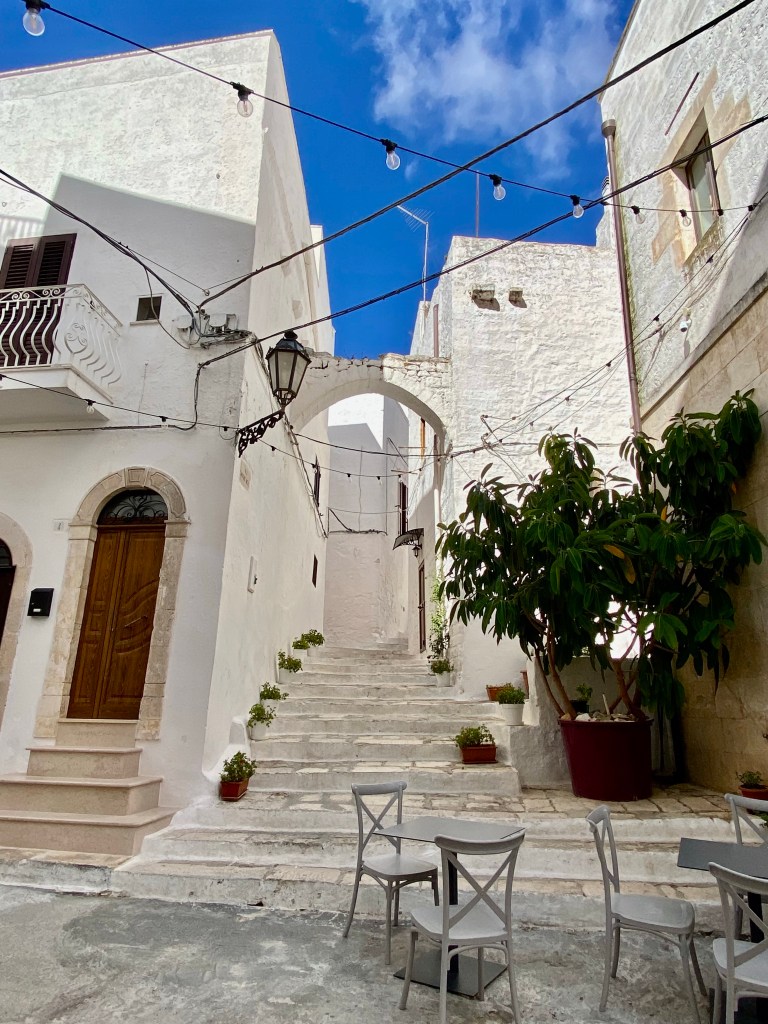
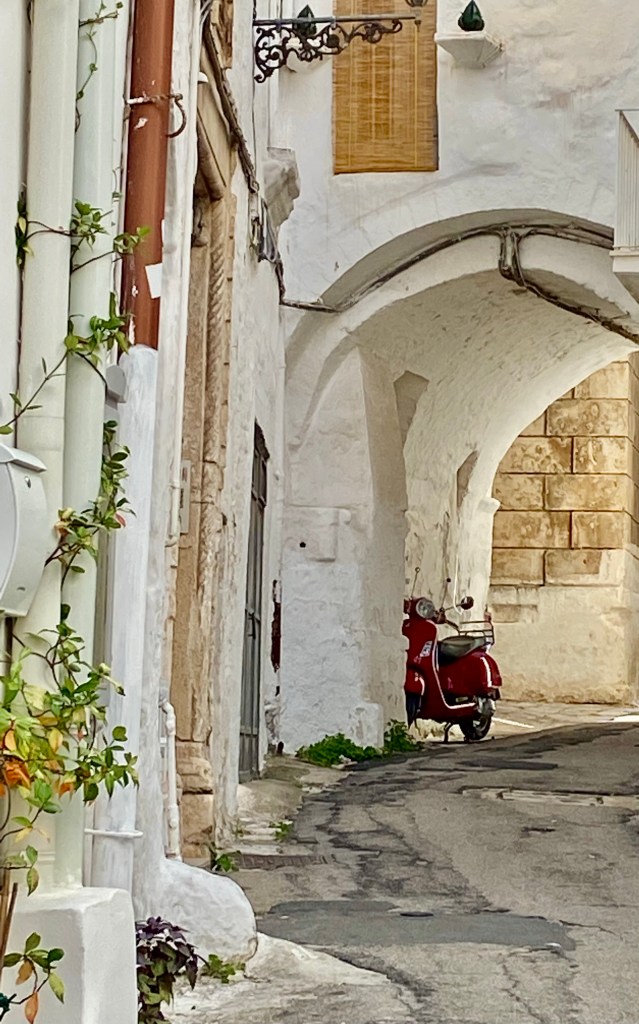
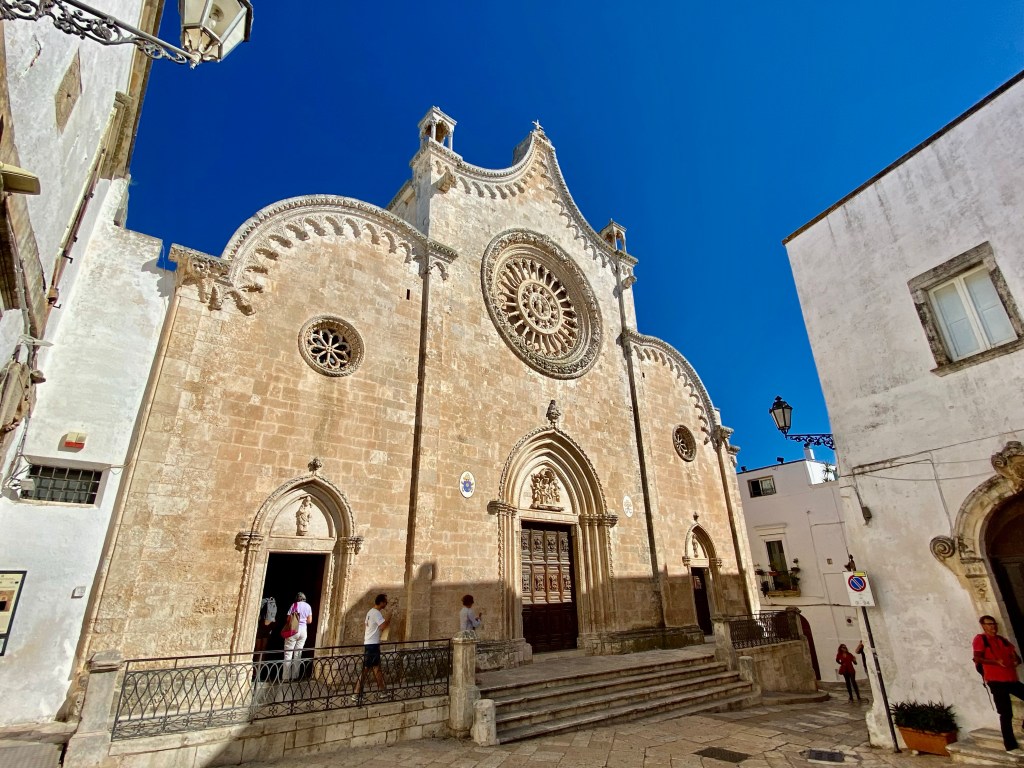


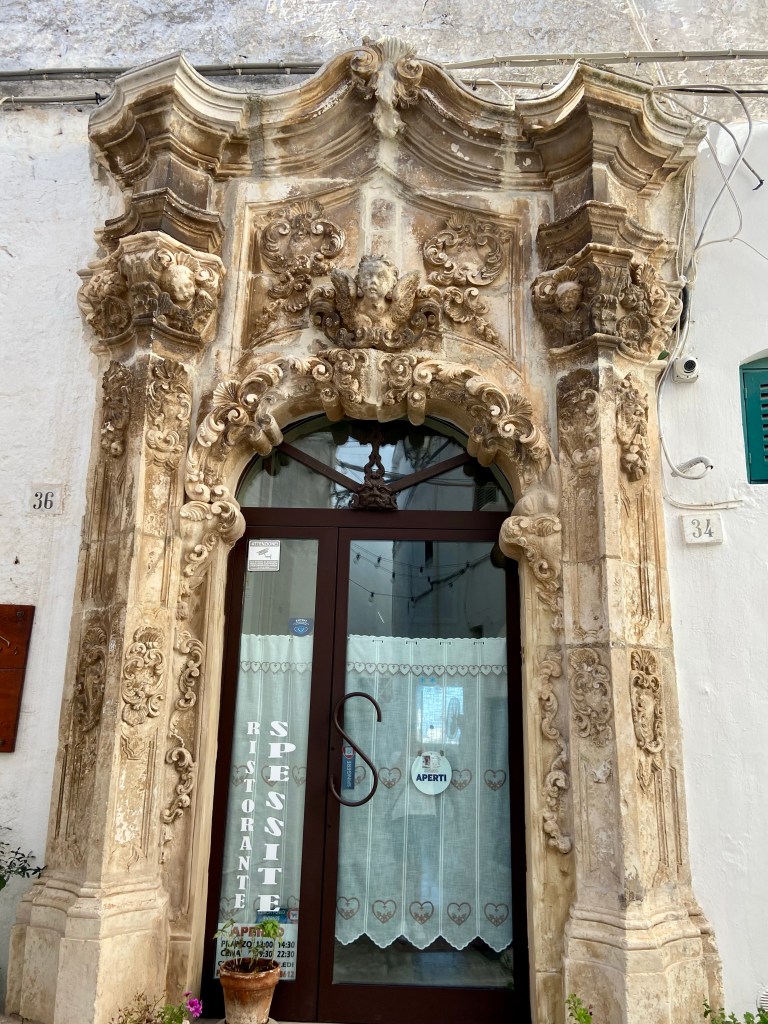

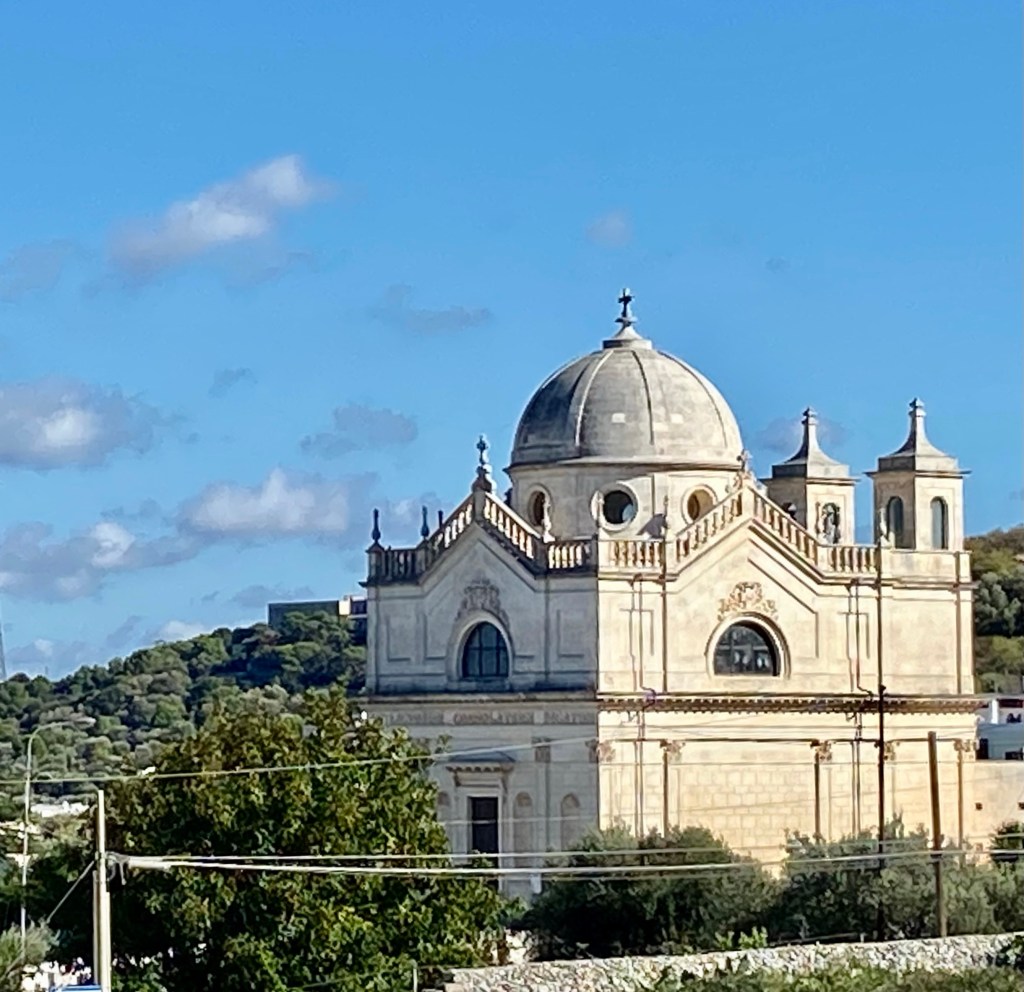


Polignano a Mare
Forty minutes from Ostuni, Polignano a Mare is a buzzy little seaside town with an enclosed walled city hugging its cliffs. This is a summer hotspot, but in October, we were treated to limited crowds. We arrived late afternoon and found paid parking just outside of the walled old town. Once checked in to our hotel, Giovi Relais, which is inside the walled city, we were anxious to get a look around. We started off down the wide avenue, lined with souvenir shops and boutiques, then made some turns until we found ourselves at a clifftop café.

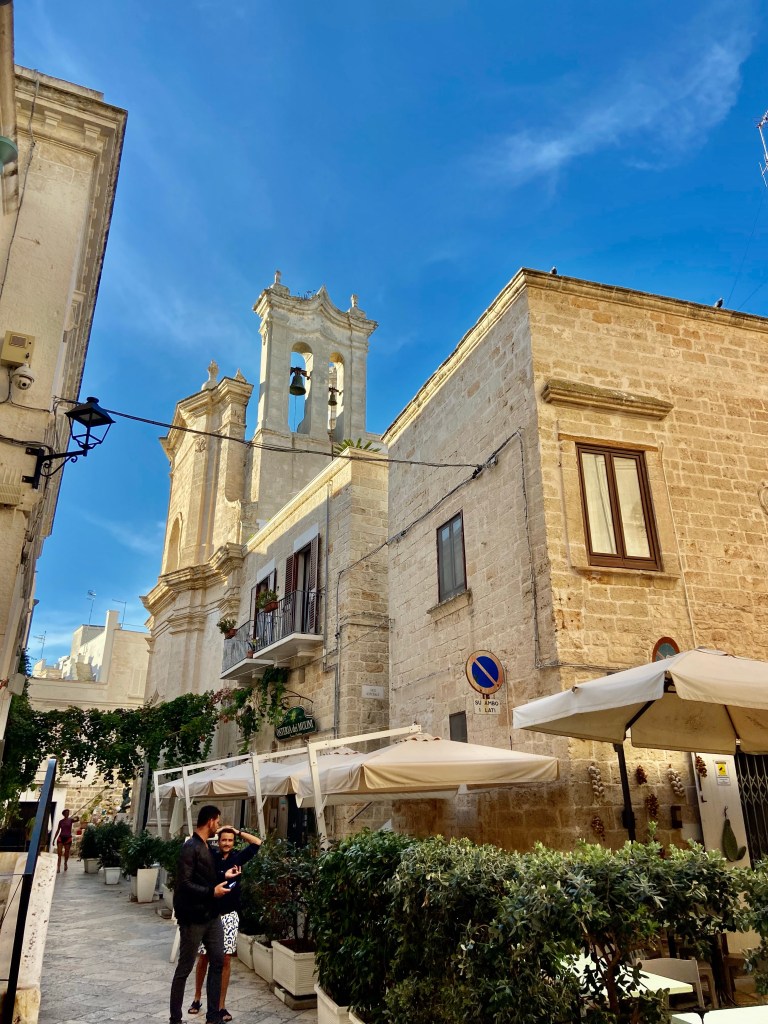

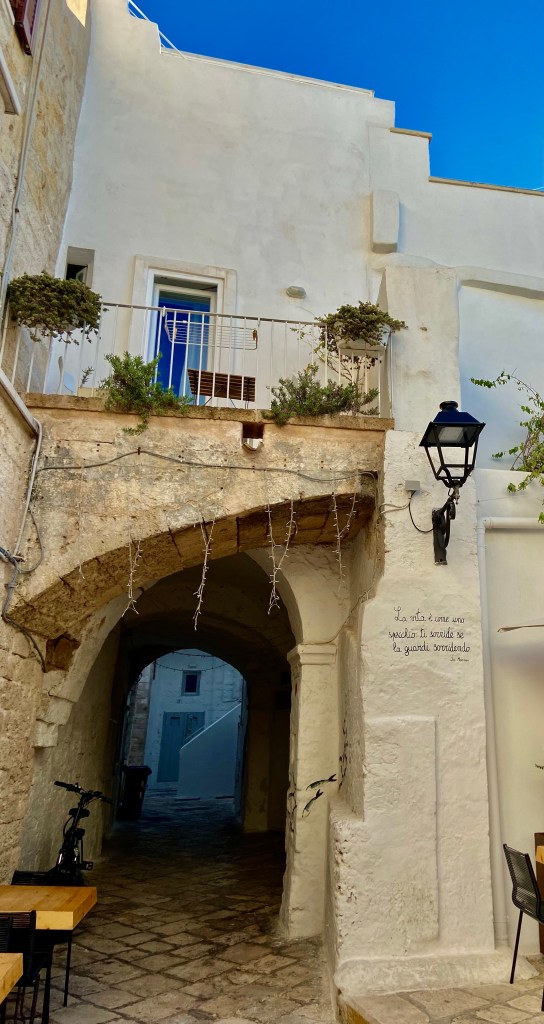
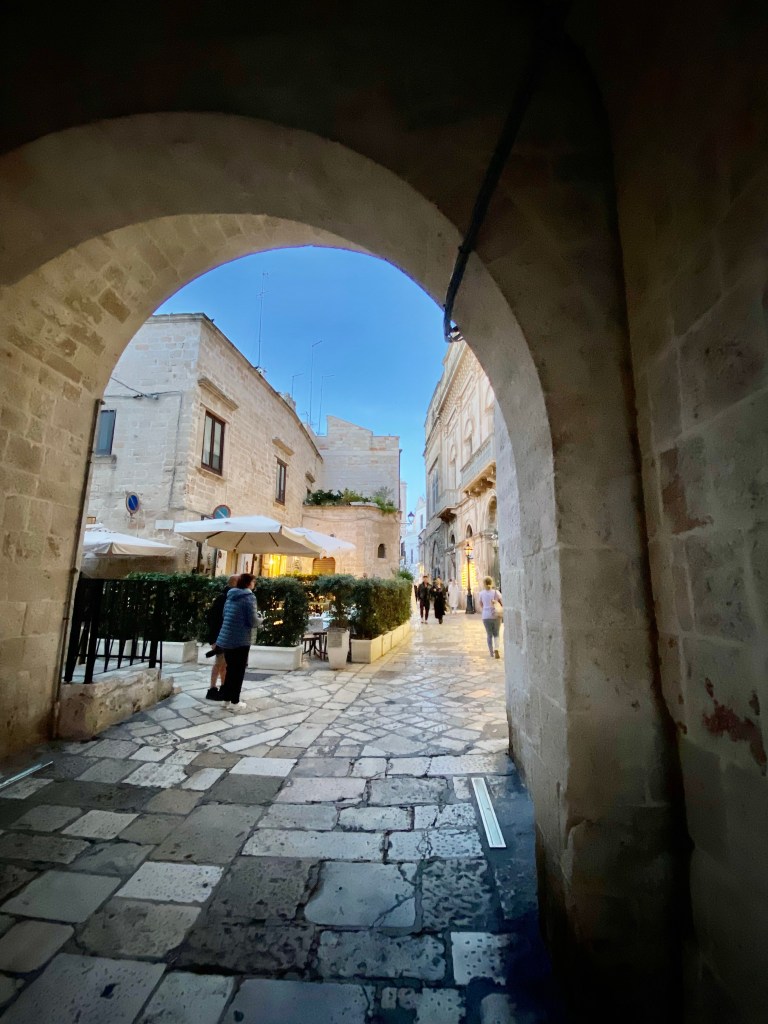


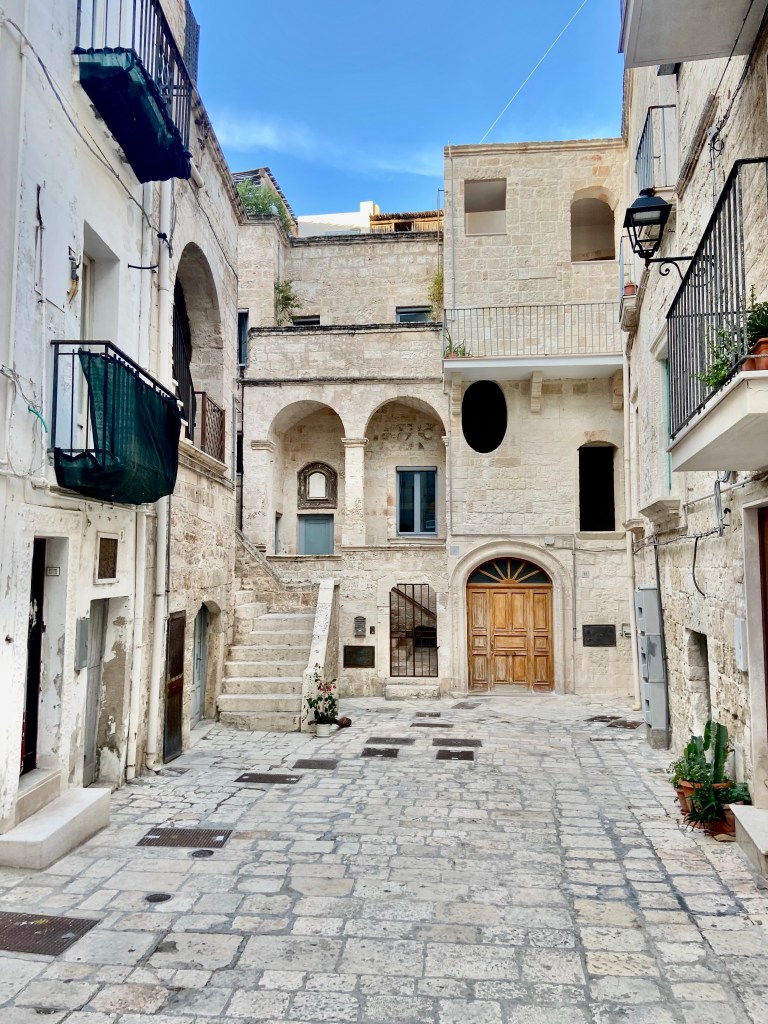
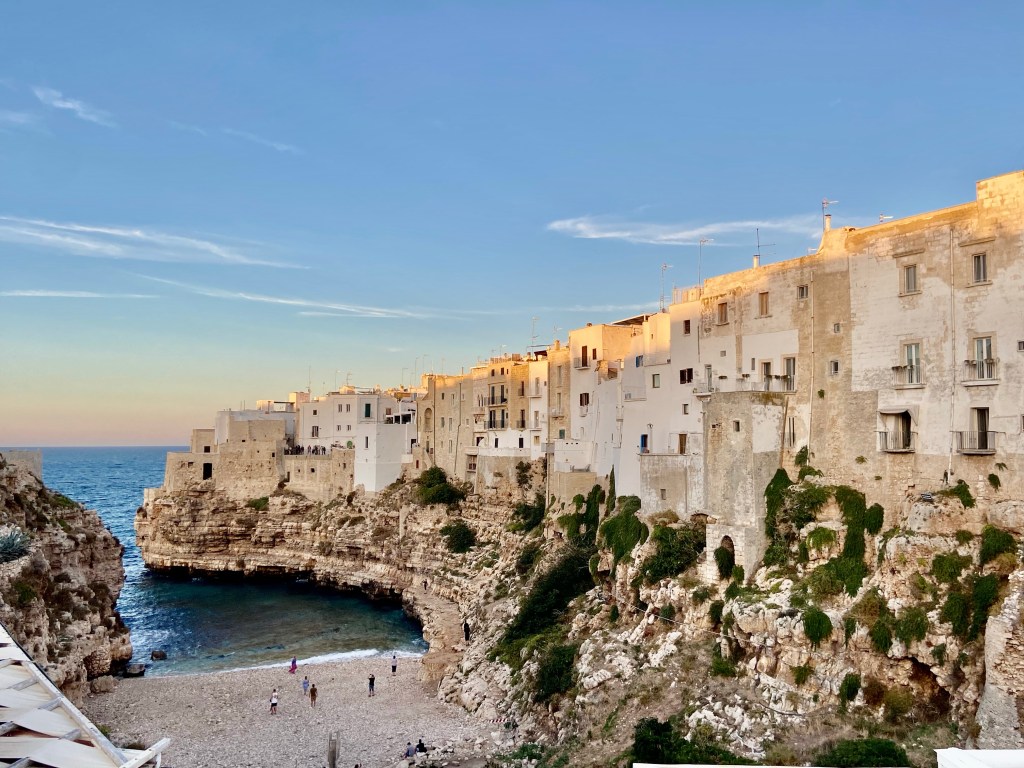
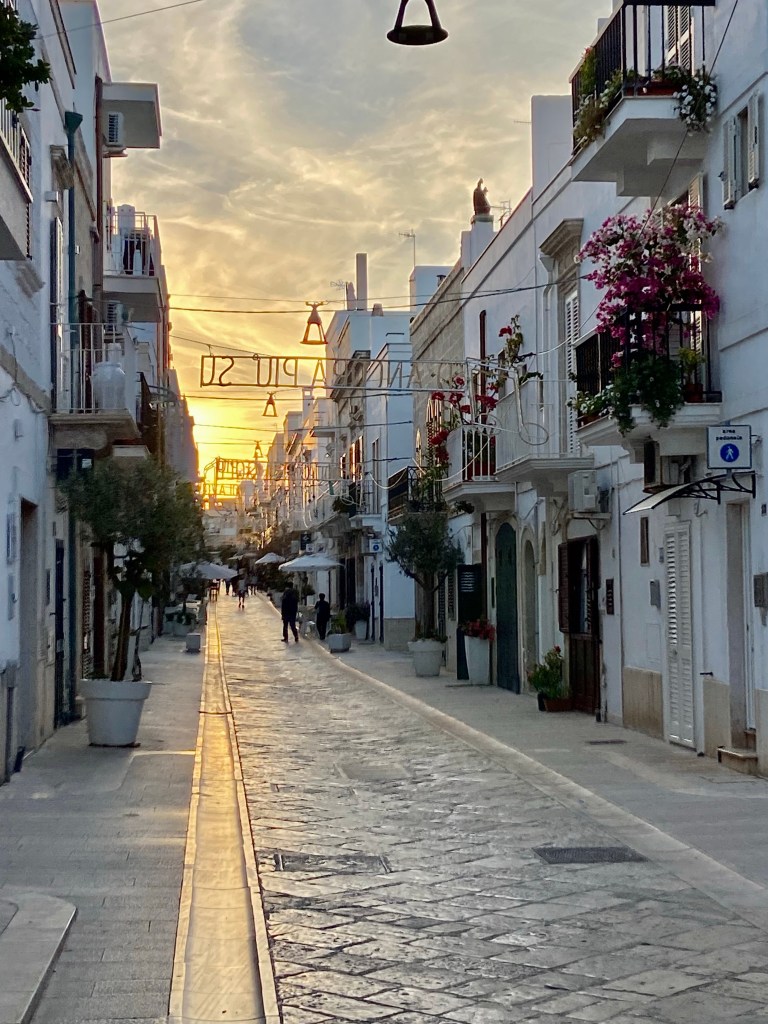
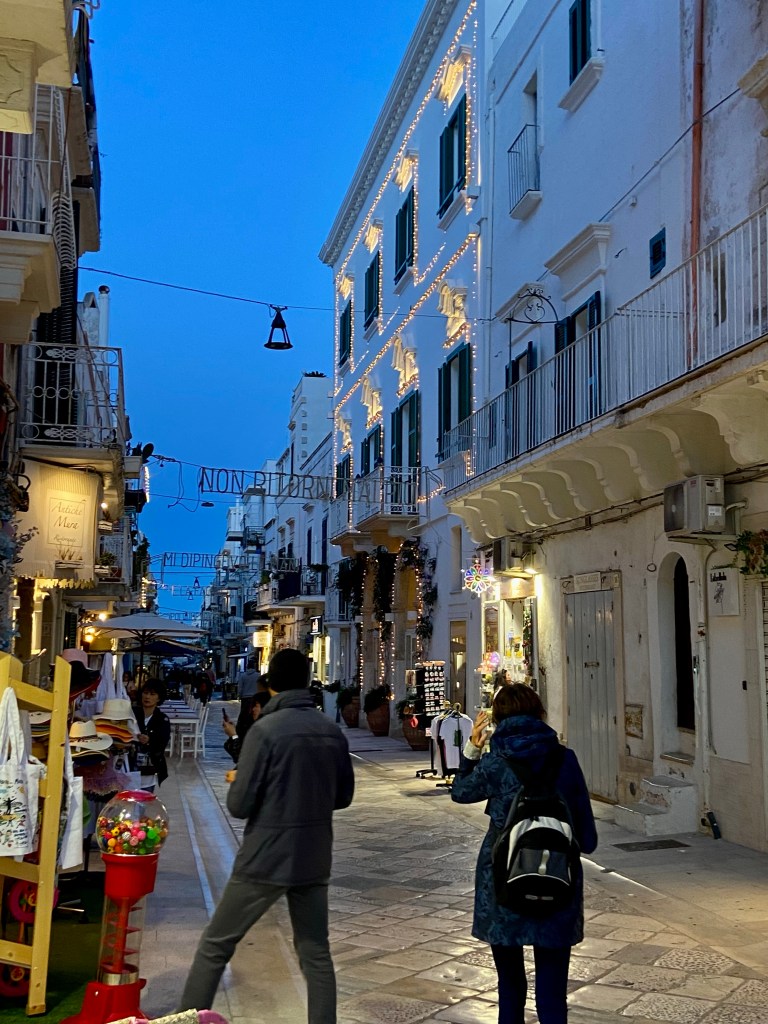

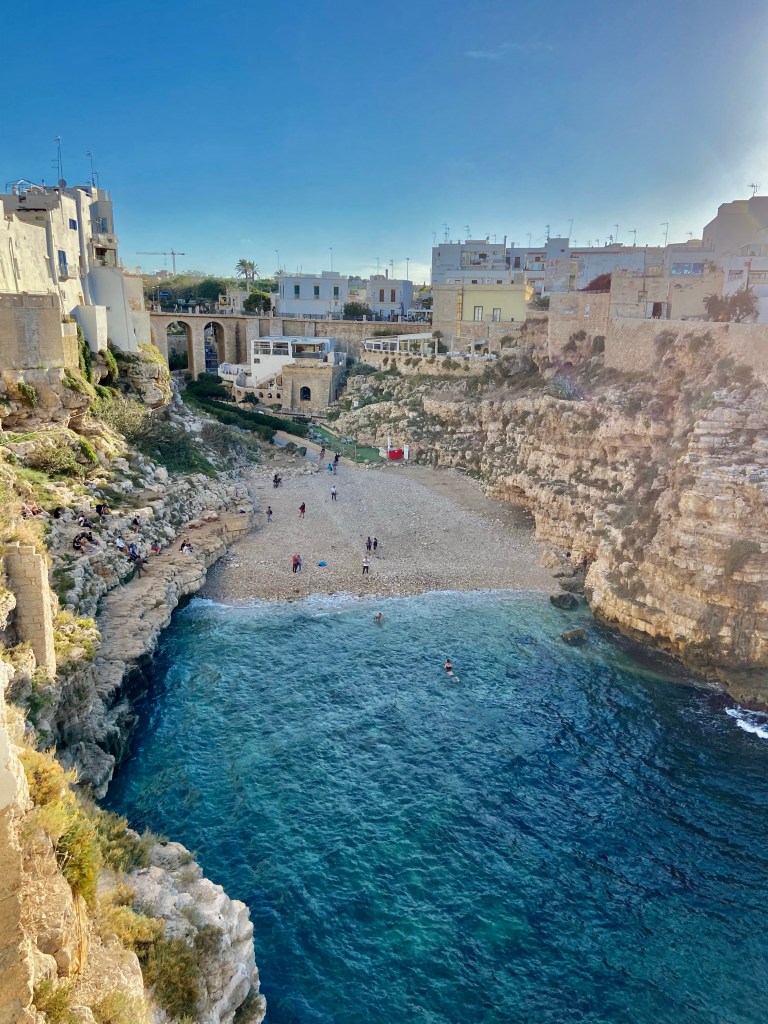
Matera
The next morning we made the 90 min. drive to Matera, which is an unusual city with a really interesting history. The original settlement is within two canyons, which is split by the Gravina River. Over the course of its history, Matera has been occupied by Romans, Byzantines, Saracens, Swabians, Aragonese, and Bourbons.
Matera eventually became a degraded area, full of poverty, poor sanitation, and disease. It was finally evacuated in 1952, and the residents were relocated to the modern area of town (where you will park if you have a car), and the Sassi (Italian for “stones”) lay abandoned until the 1980s. Now, the Sassi is a unique destination that will amaze at every turn. The Sassi and the park of the Rupestrian Churches were named a UNESCO World Heritage Site in 1993. In 2019, Matera was declared a European Capital of Culture, chock full of artists’ galleries, cafes and boutiques.
When we arrived in Matera, we wondered if we had put the wrong town in the GPS (it’s happened). However, once we parked our car and started on foot to our hotel, we realized the parking area is in the “new” town. After many, many, wrong turns, we finally found our way to the hotel where we dropped our bags and set out. We spent one night at the THYMUS Residence in the Sassi, and felt we could have stayed two or three more days to really get the full scope of the Sassi, and explore the caves in the canyons. You can explore the entire Sassi by foot, although there are some hills and steps, so you’ll get a little workout. We had an excellent meal at Pietra Viva, sadly I didn’t get any pics! Explaining Matera is difficult, it really must be seen to be believed. Imagine an ancient stone city in a bowl, and you’re off to a good start!



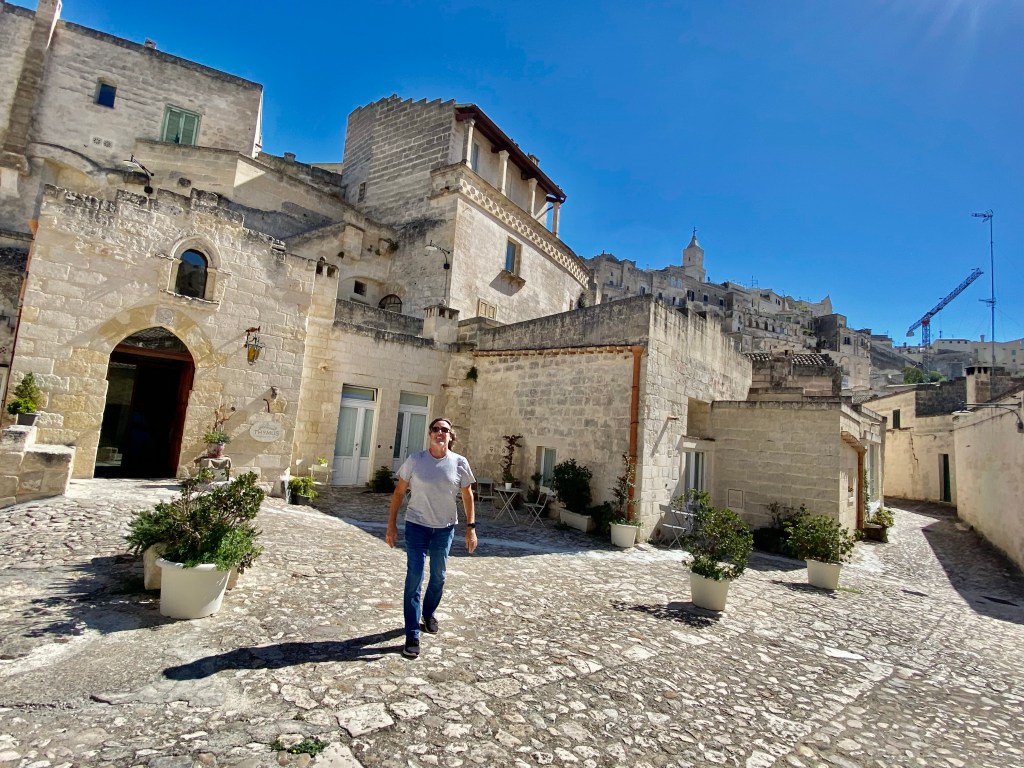


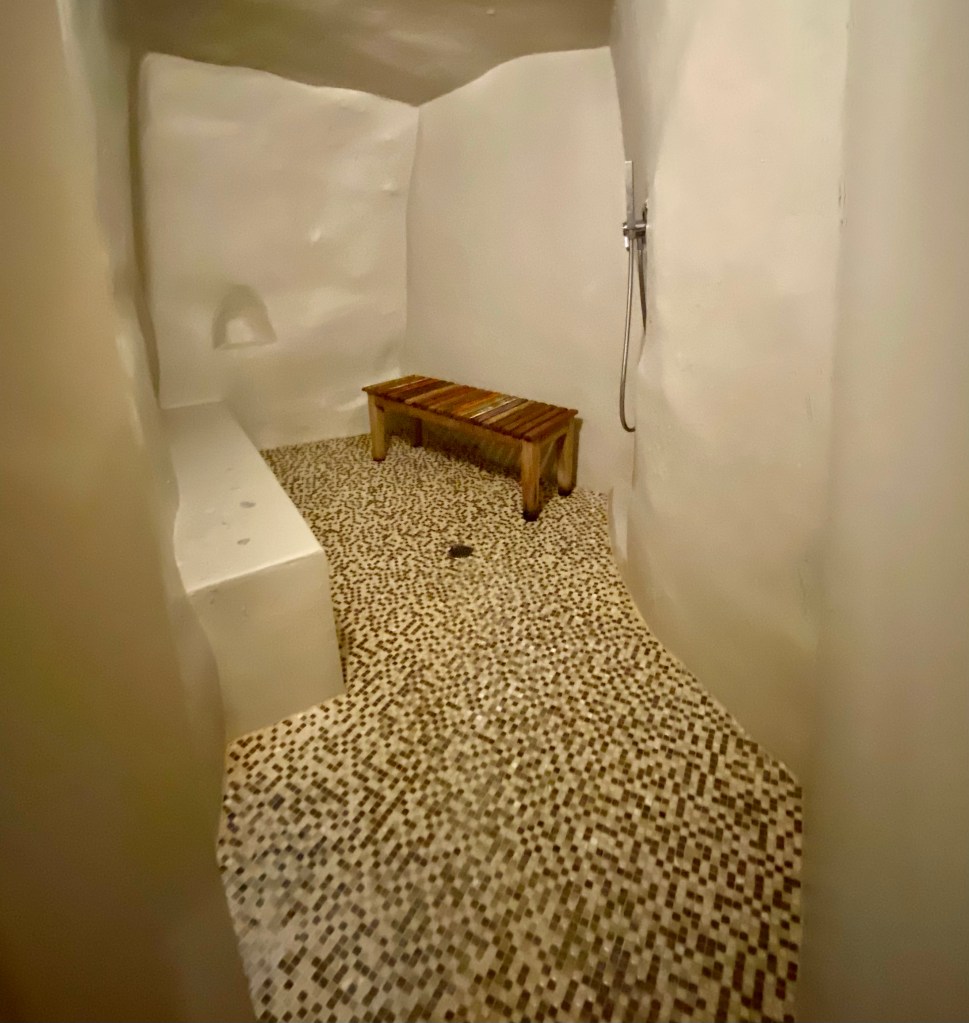
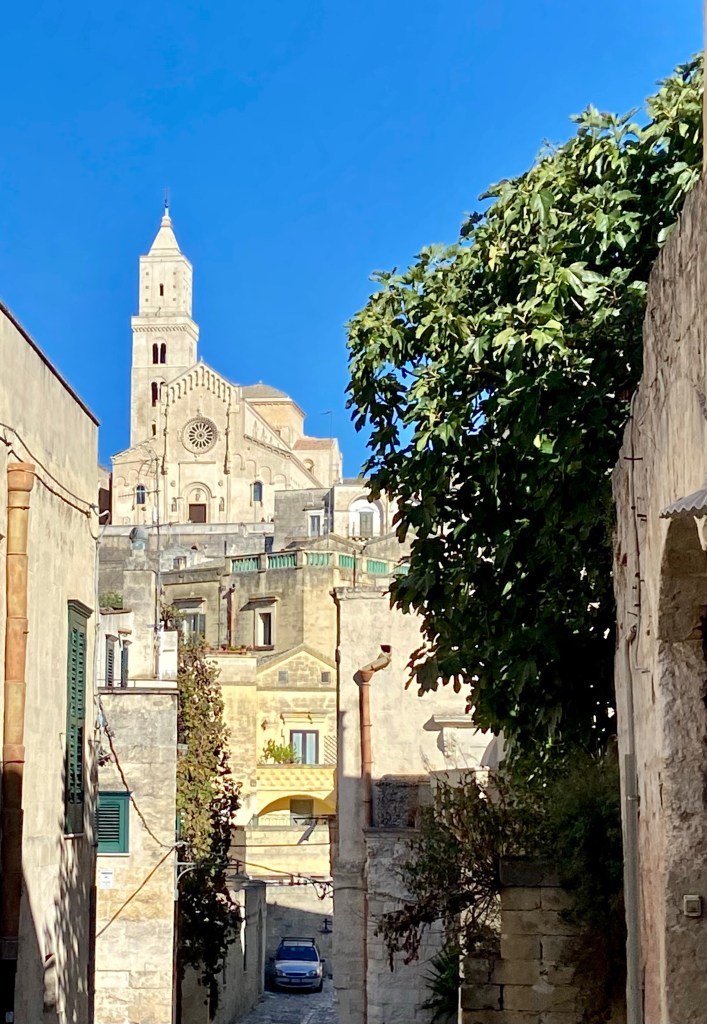
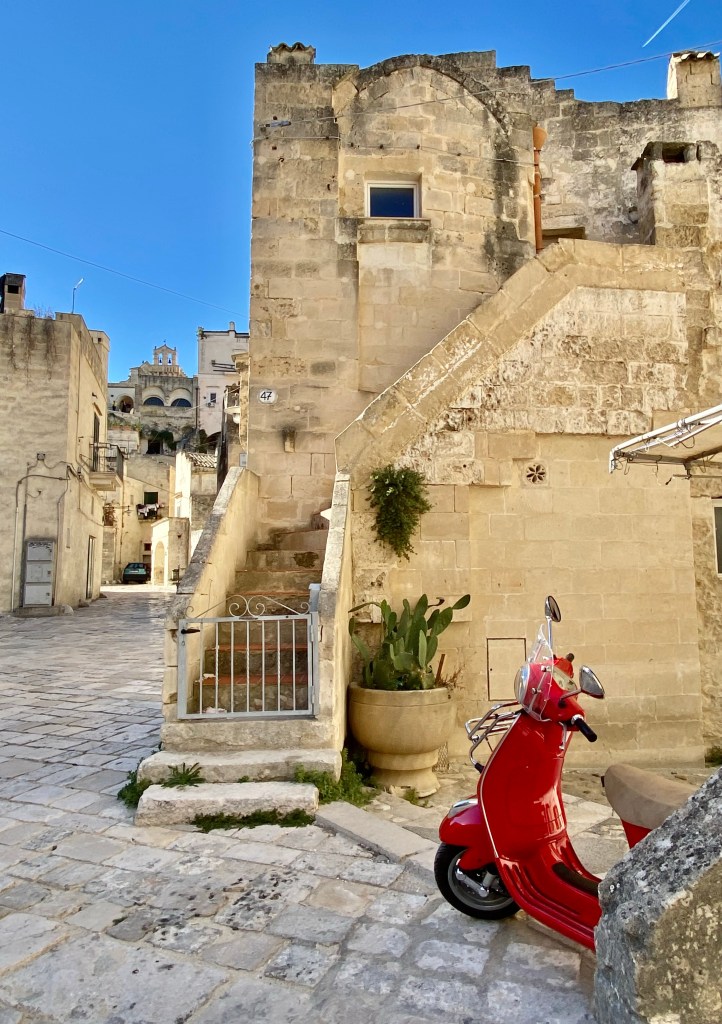
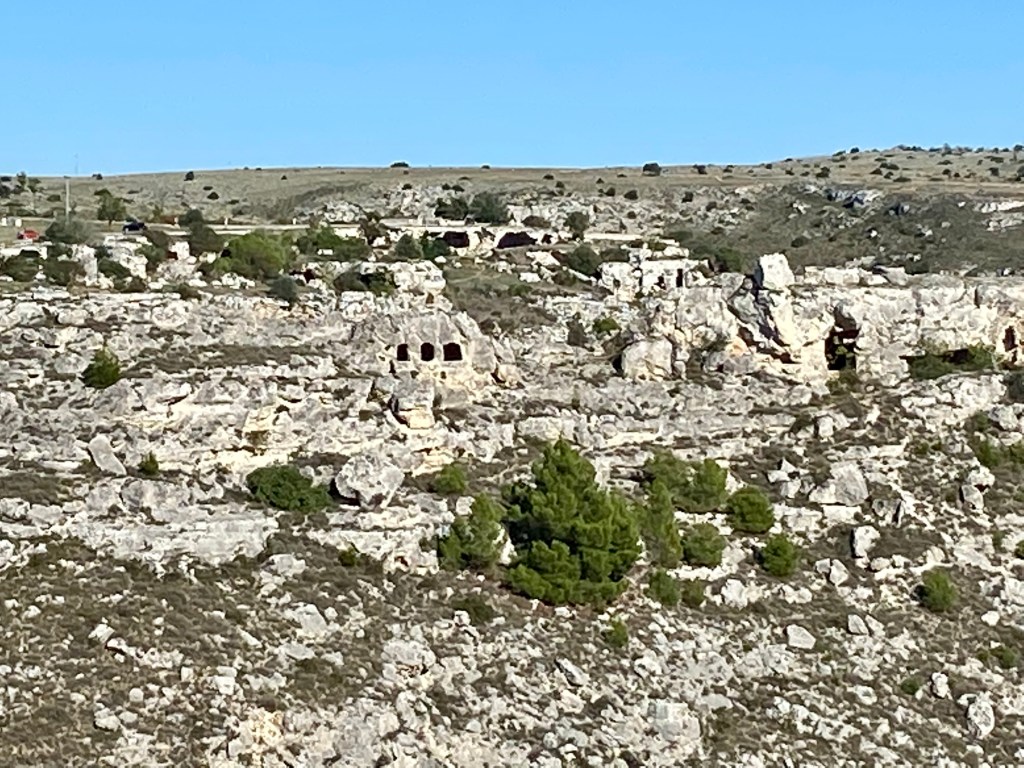
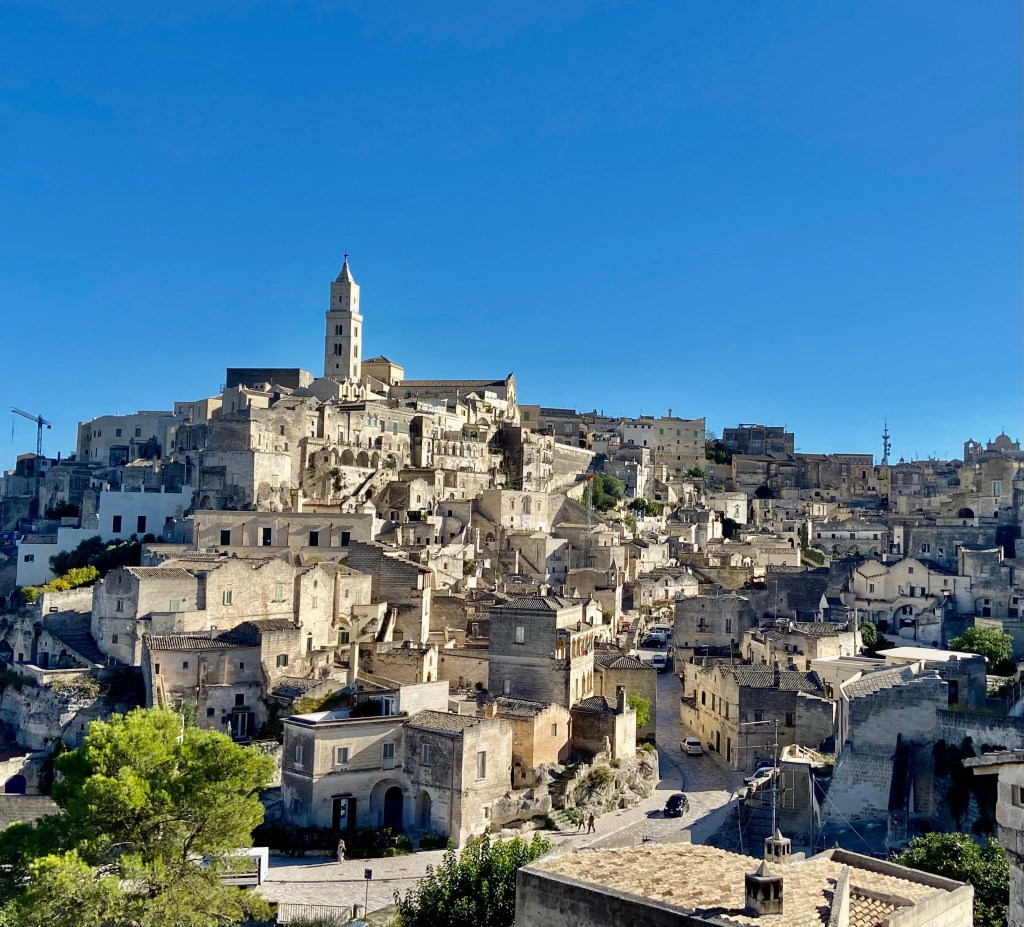


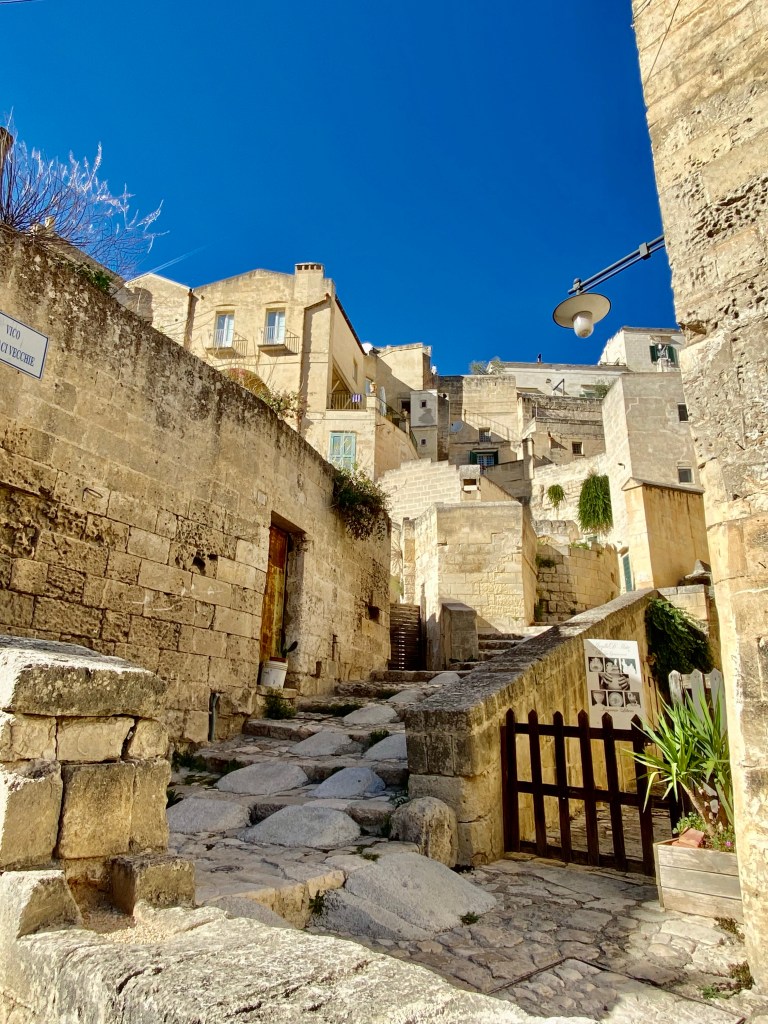

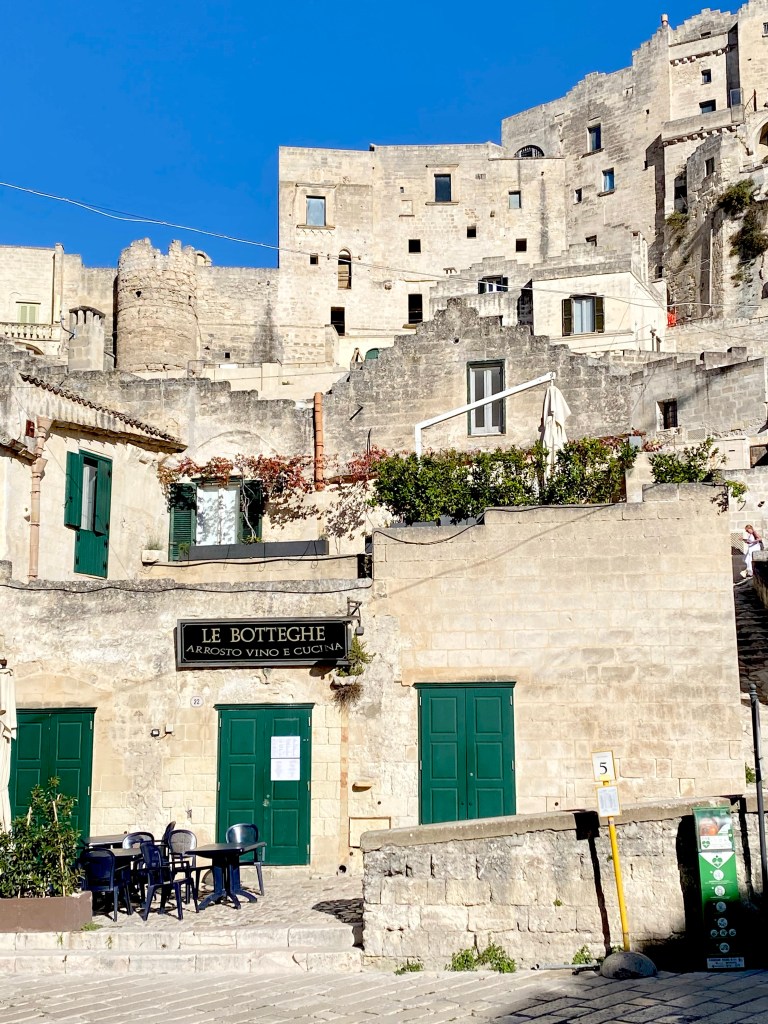
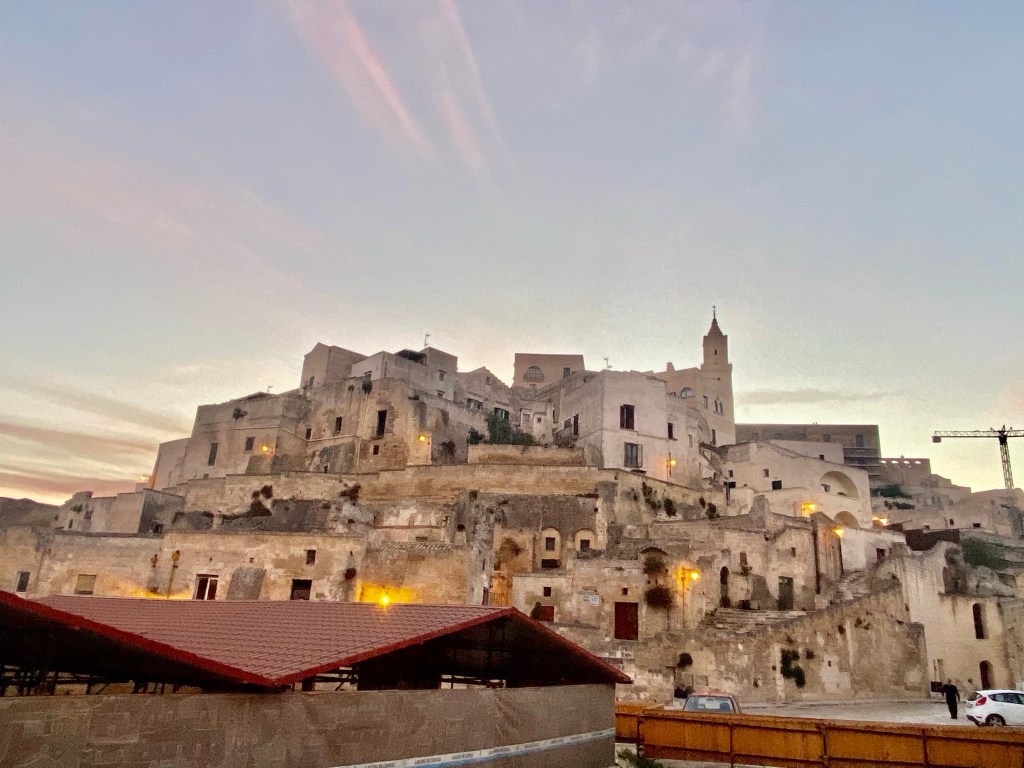
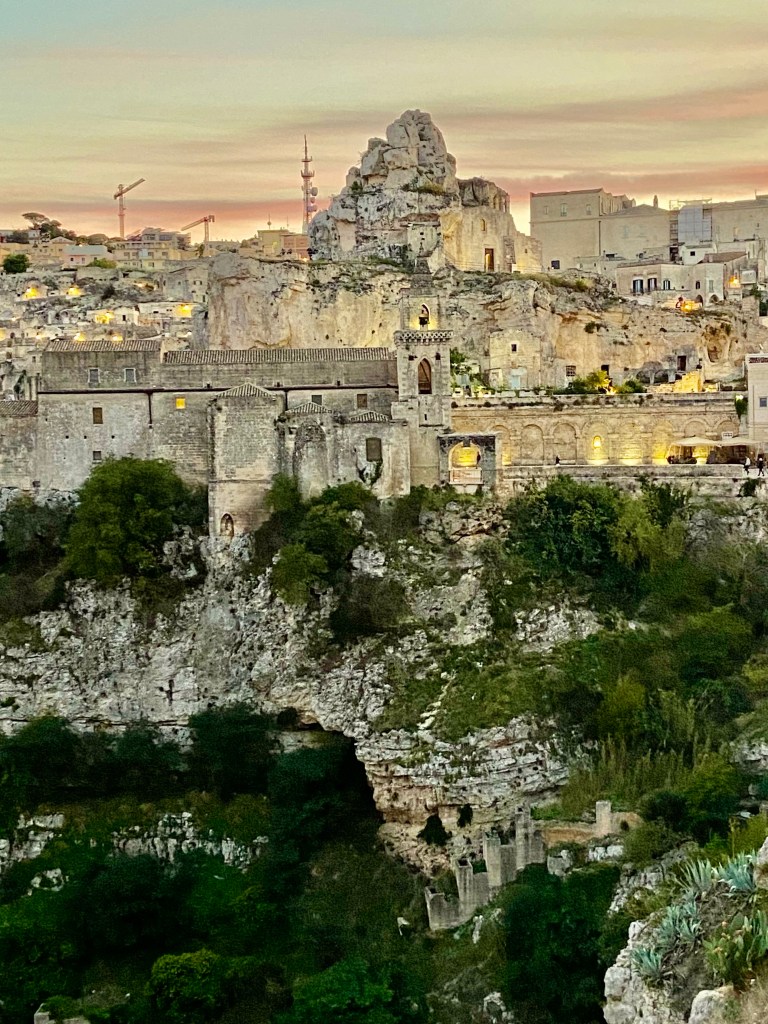
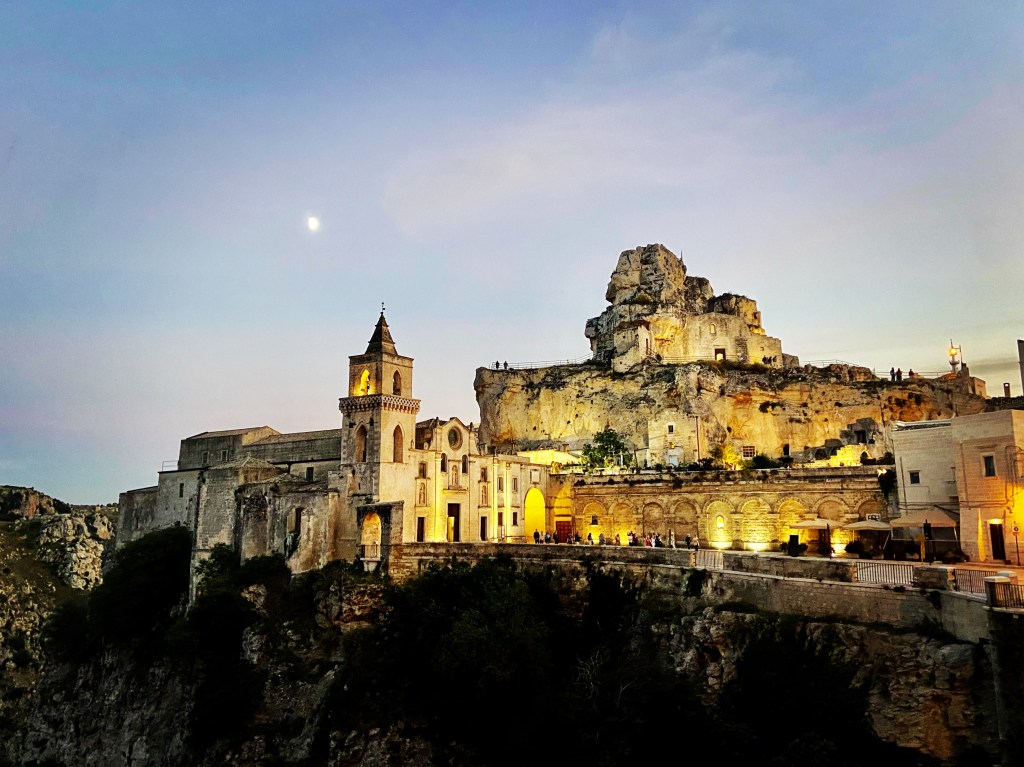
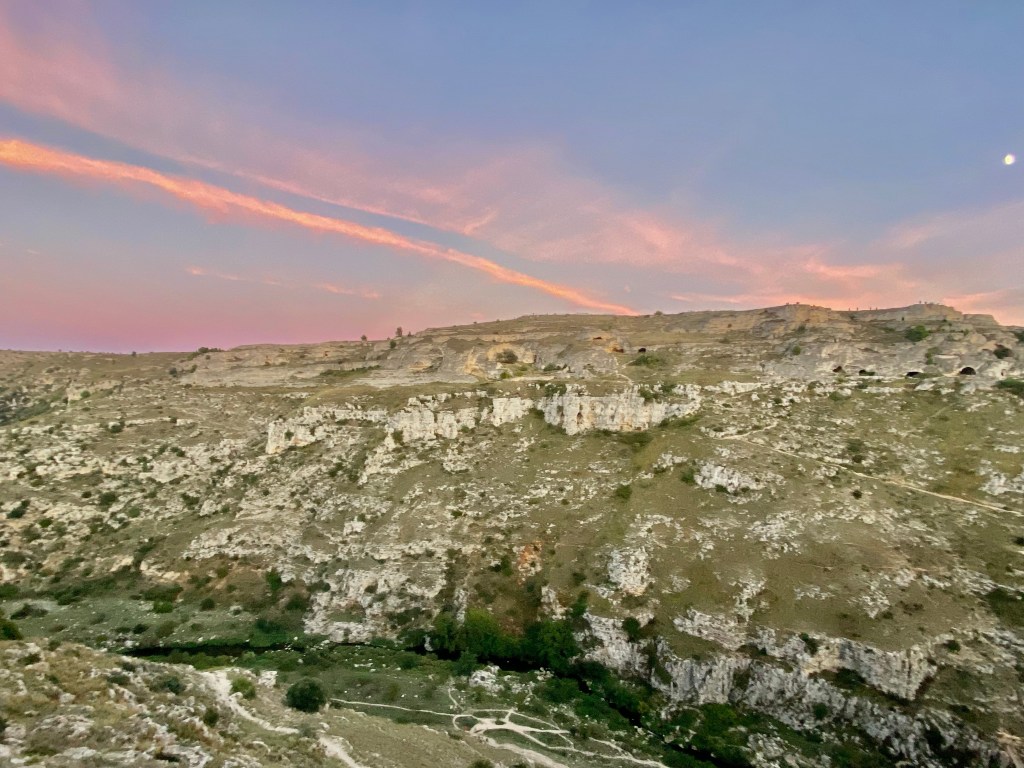
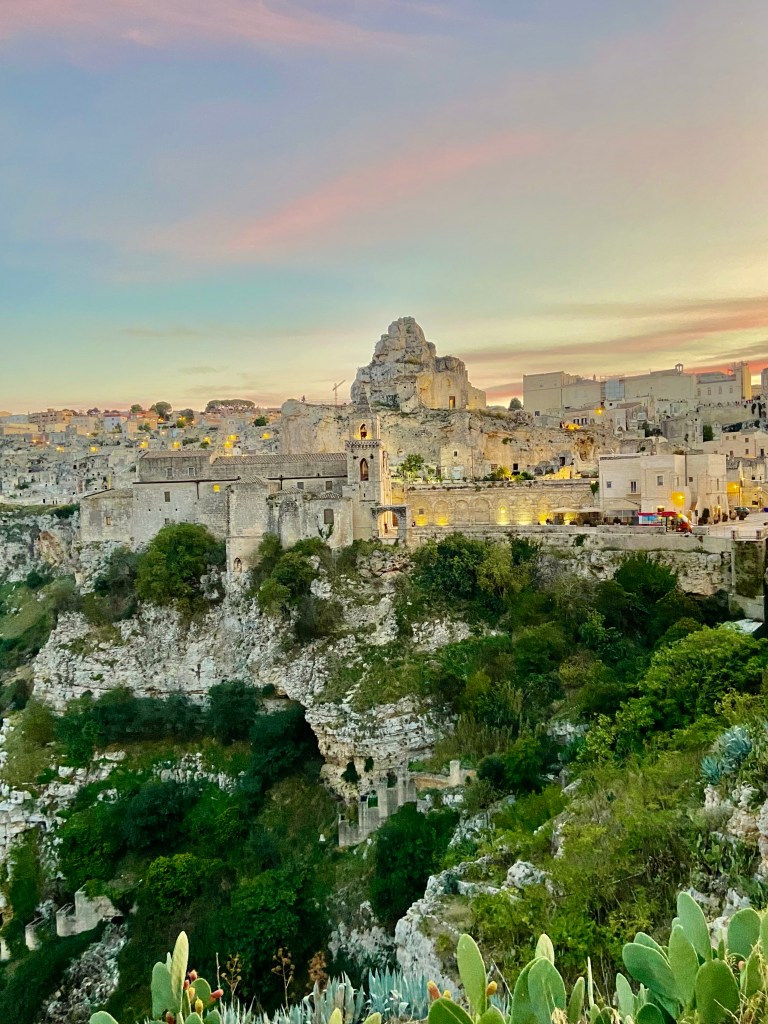


Alberobello
We departed Matera in the morning and drove an hour to Alberobello, arriving at lunchtime; we were too interested in walking through the trulli village before we could think about food. First settled in the early 1600s, it’s not an incredibly ancient town, but the trulli are unique. The trulli houses had to be built with dry stones so they could be quickly disassembled to avoid paying taxes. Some of the roofs are decorated with symbols representing the signature of the builder. Now, the trulli are filled with art, souvenirs, wine shops, pubs and restaurants. We had fantastic, fresh sandwiches at NeWynd Bar, which also has a GREAT beer selection and really friendly servers.

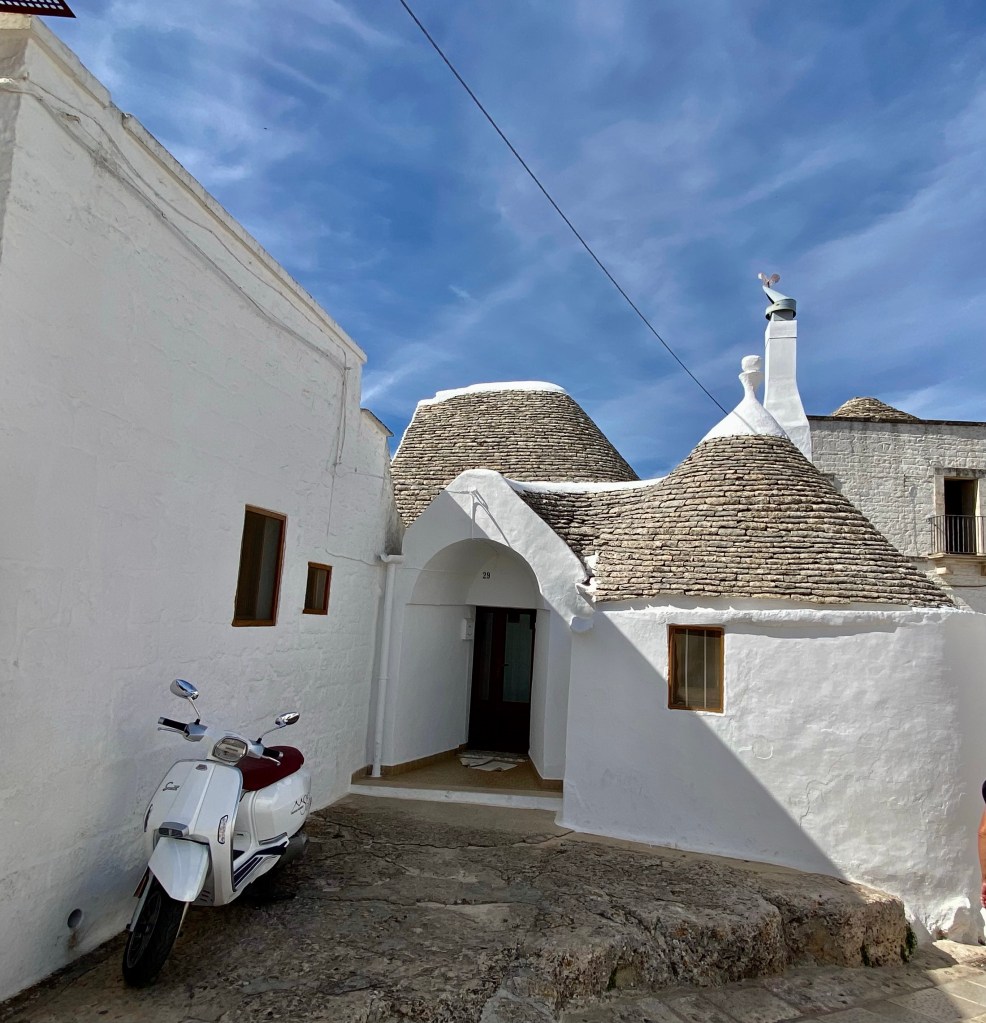

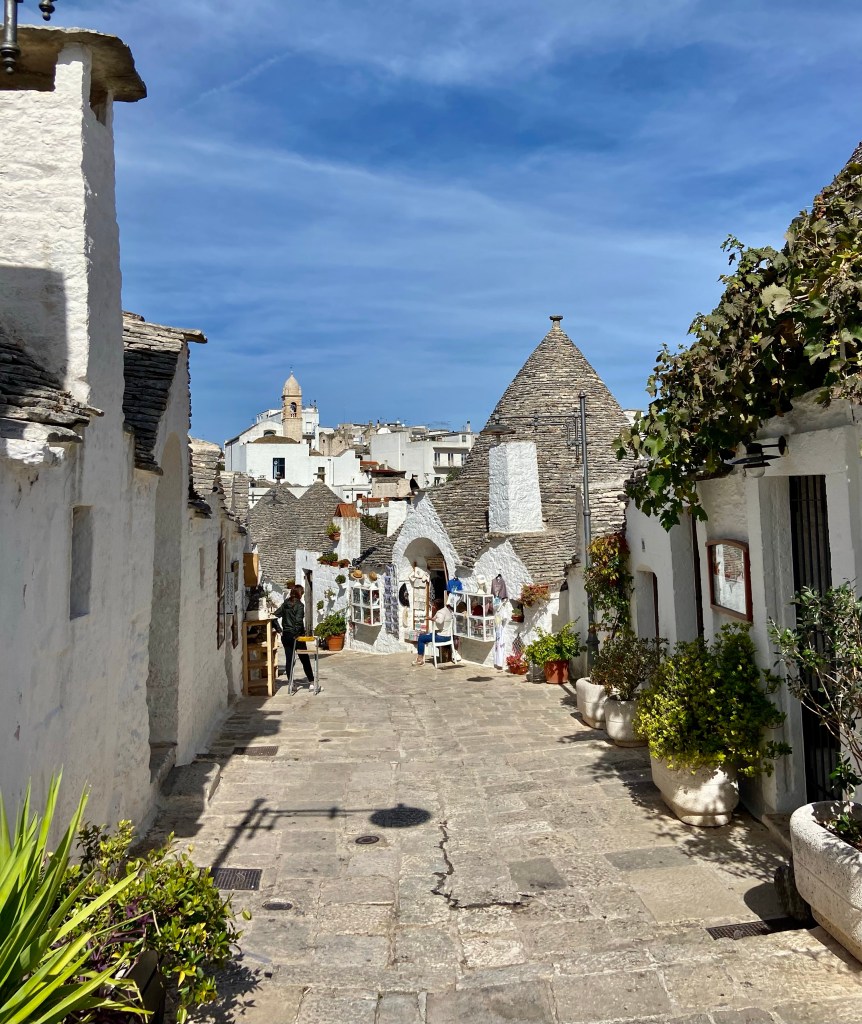
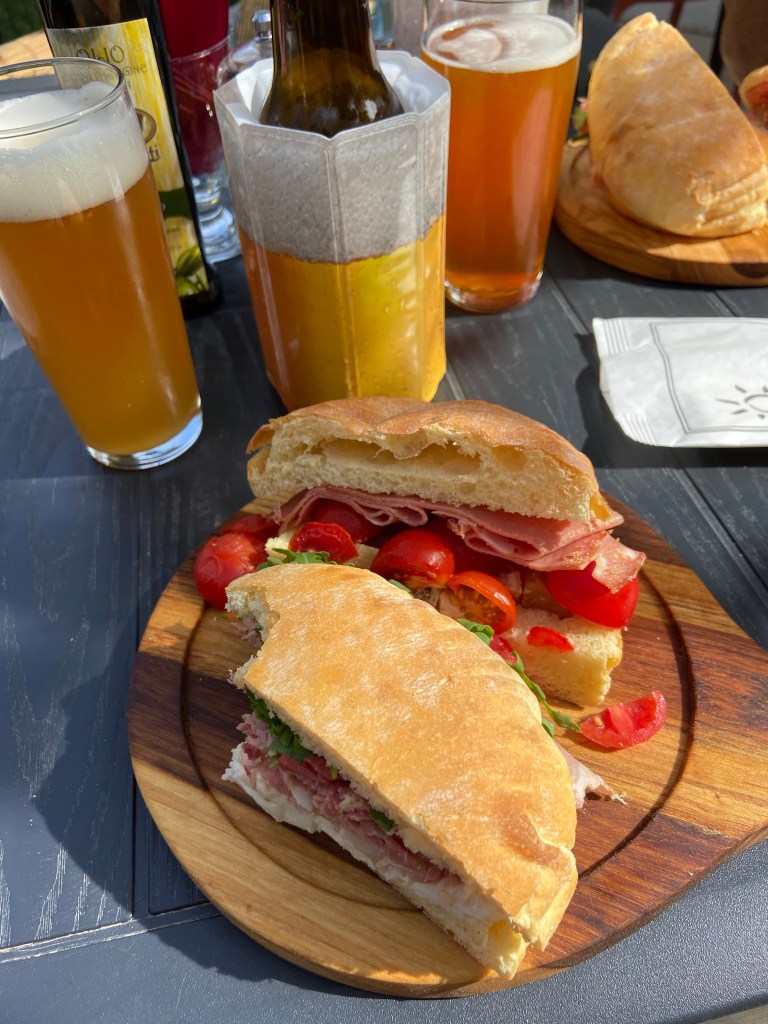
Galatina
This cute town is 40 min. from Lecce by train ($2pp/ each way). We howled when we saw the little singletrain that transported us to and from Galatina. It’s slow but it will get you there cheap! The main attraction is the Santa Caterina d’Alessandria, built in 1390. It’s a beautiful church, but its simpler exterior doesn’t give away the glorious 15th century frescos that cover the interior. For a fabulous meal, don’t miss Il Fienile Ristorante, which is worth a trip to Galatina all by itself.
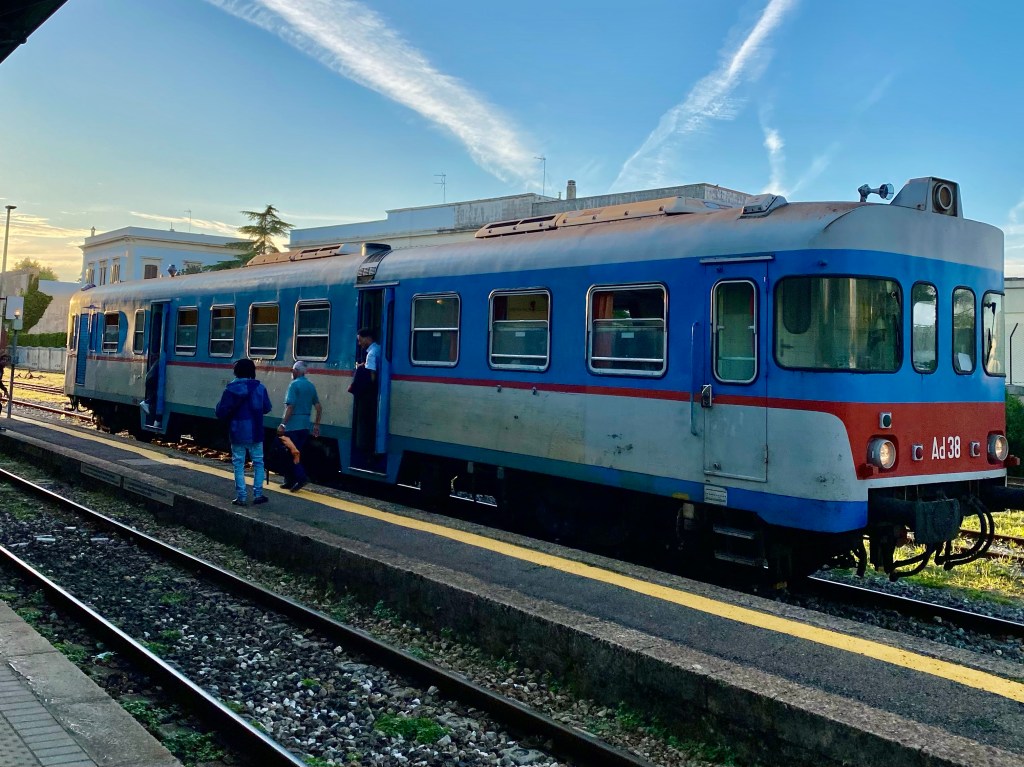
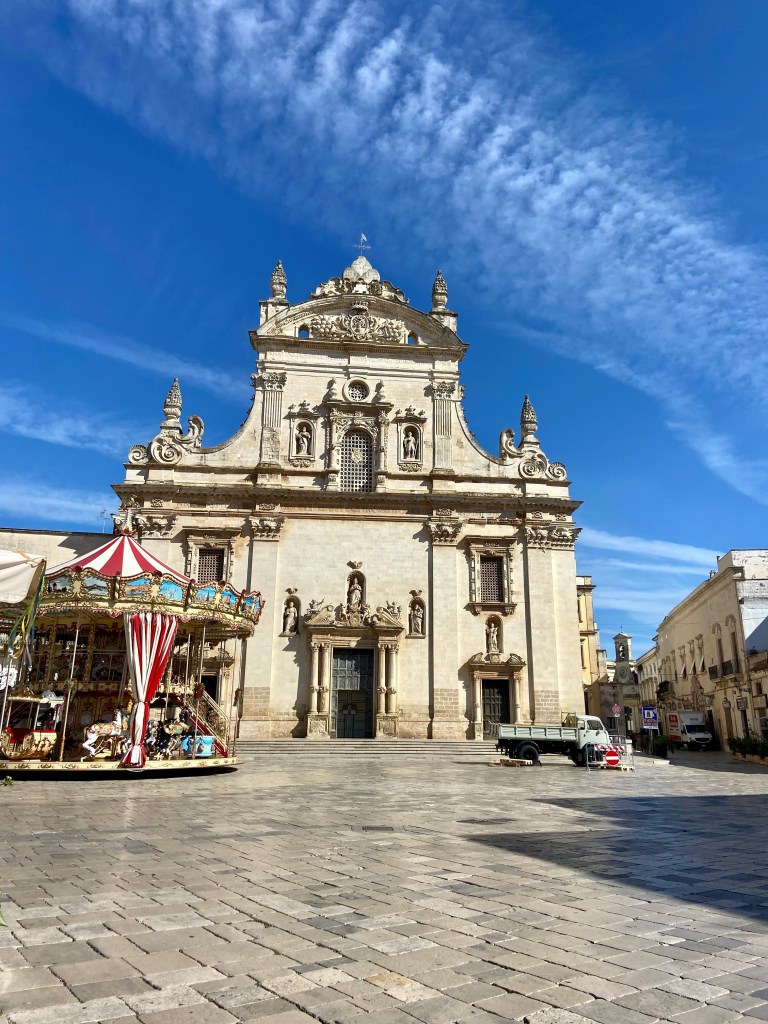
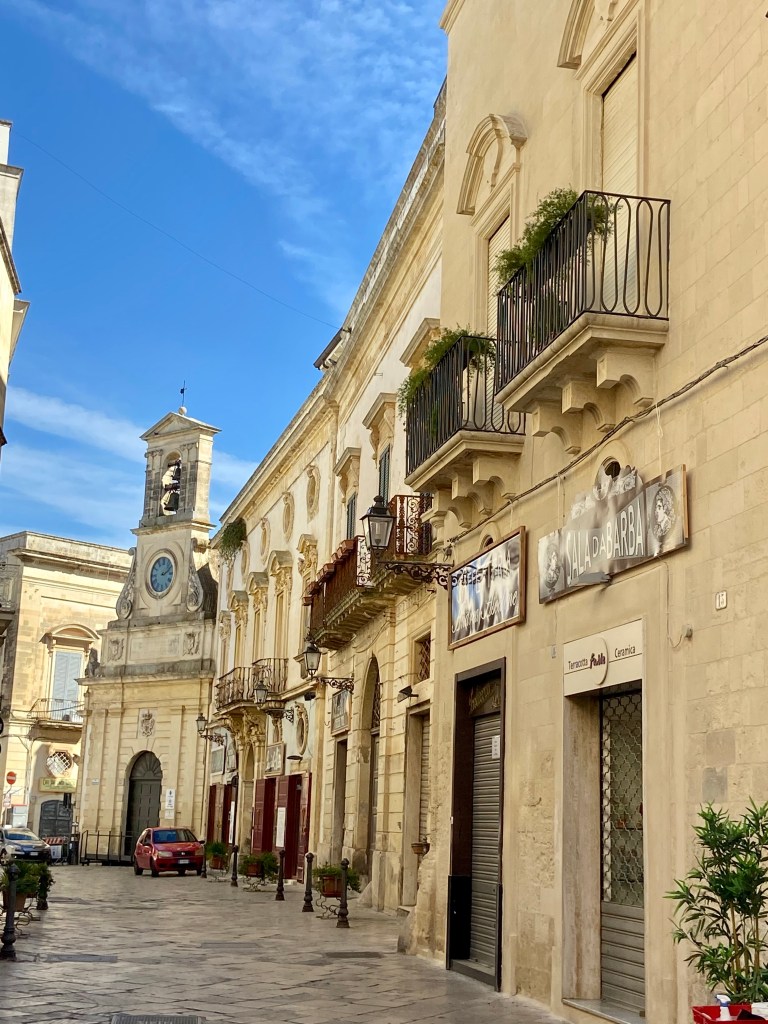

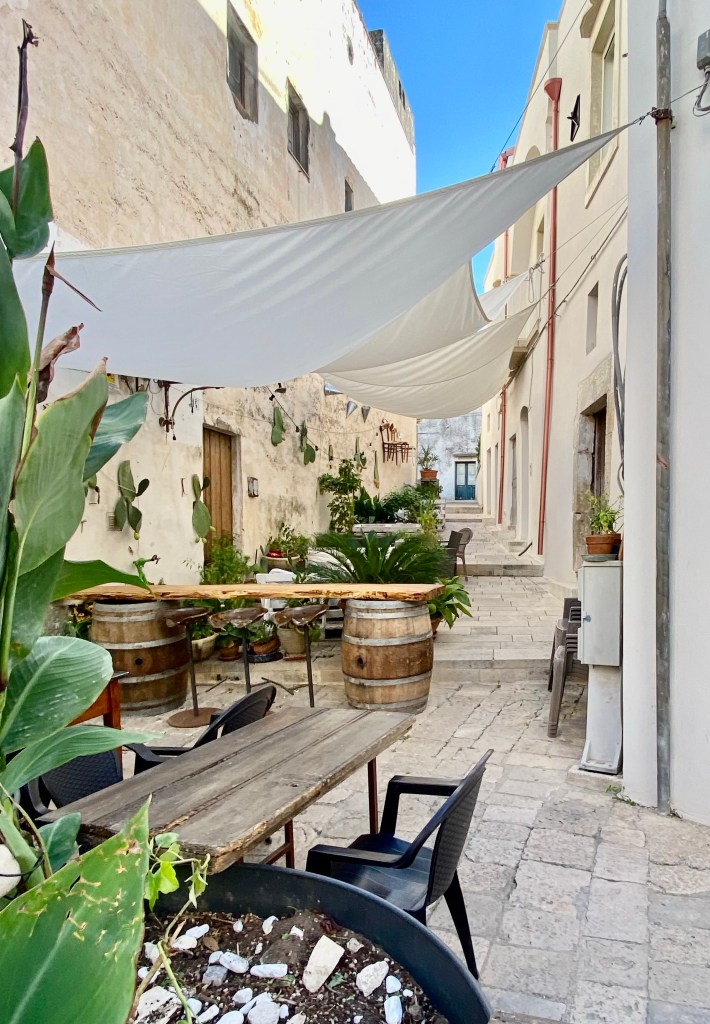
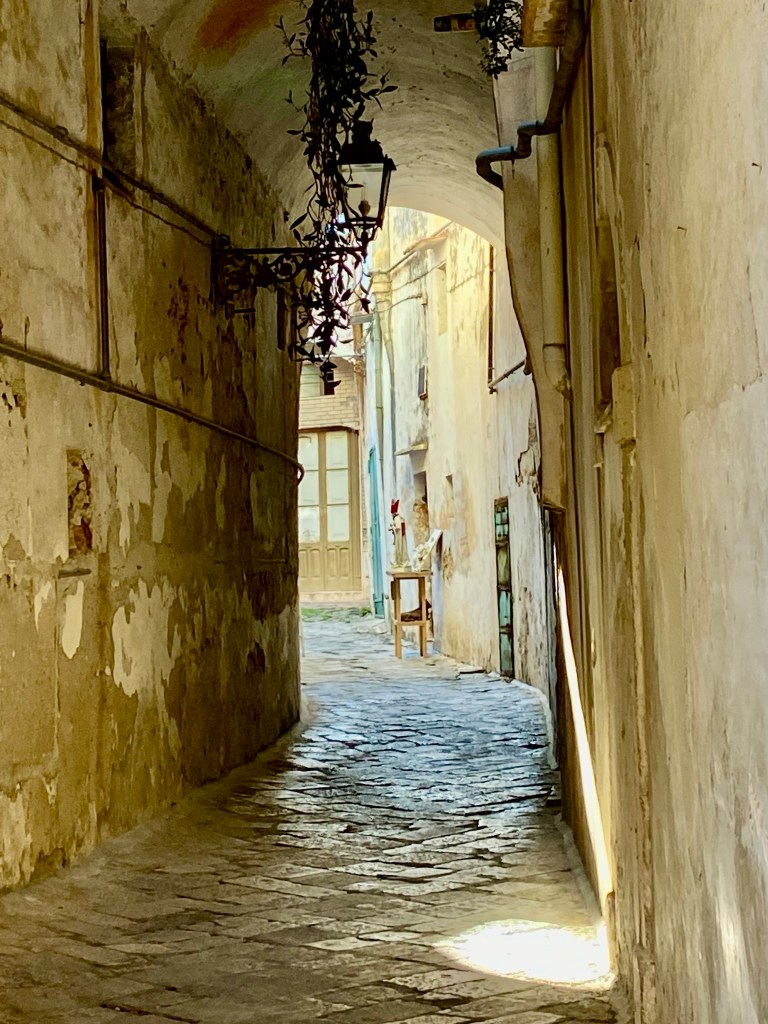
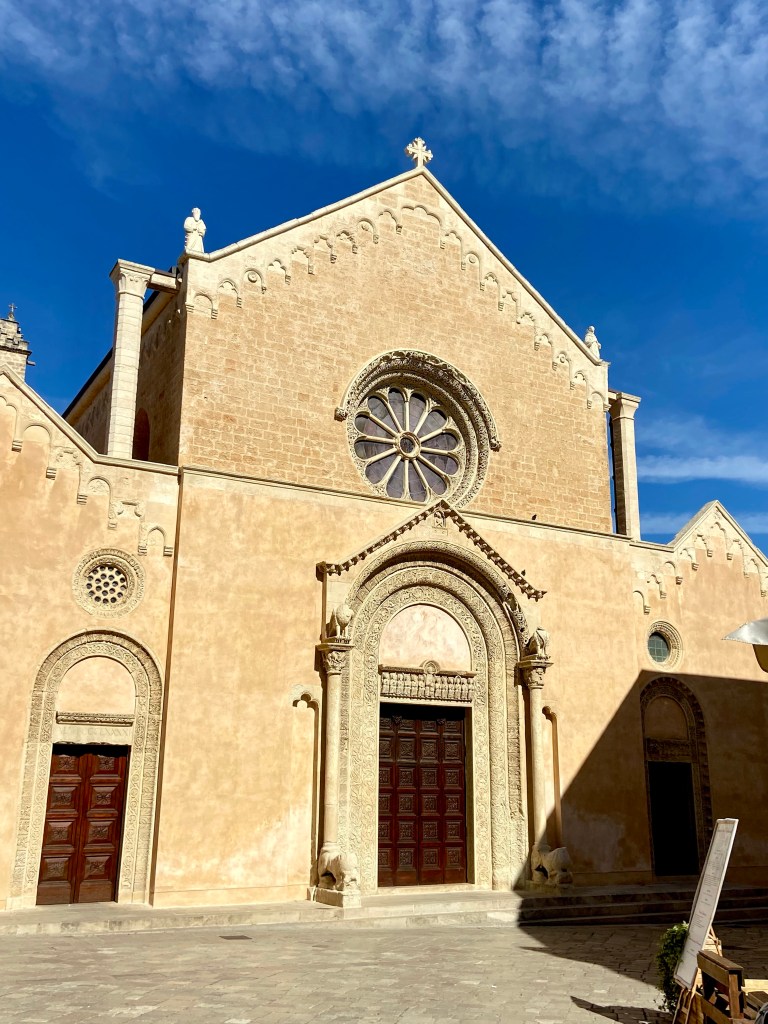

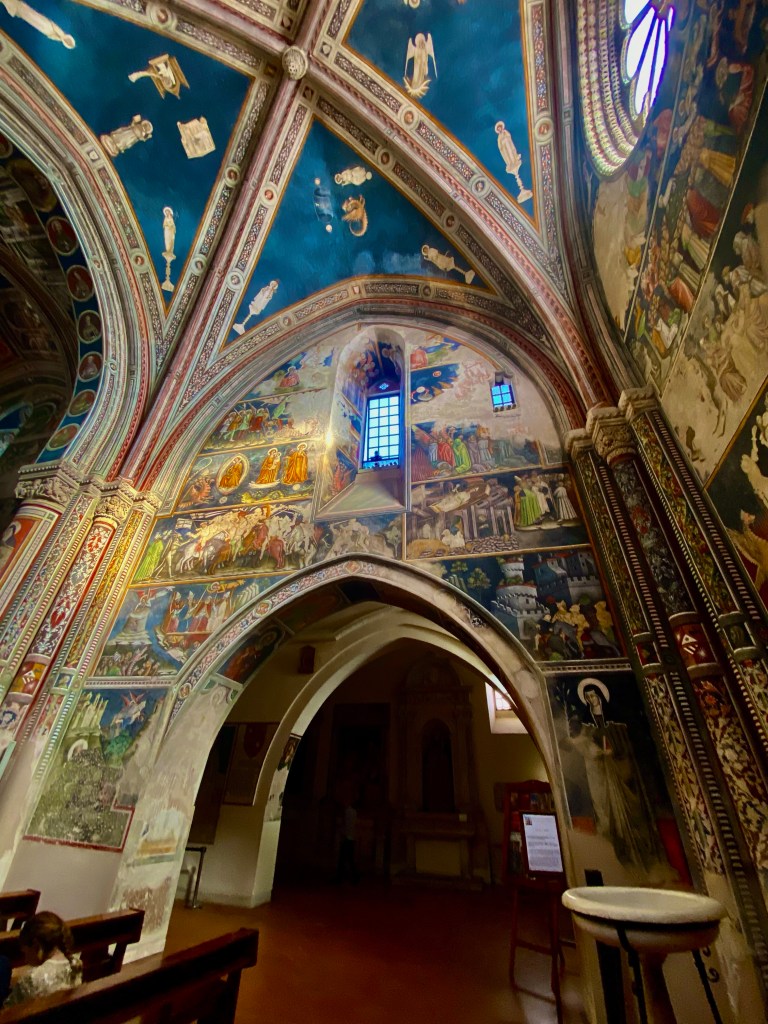
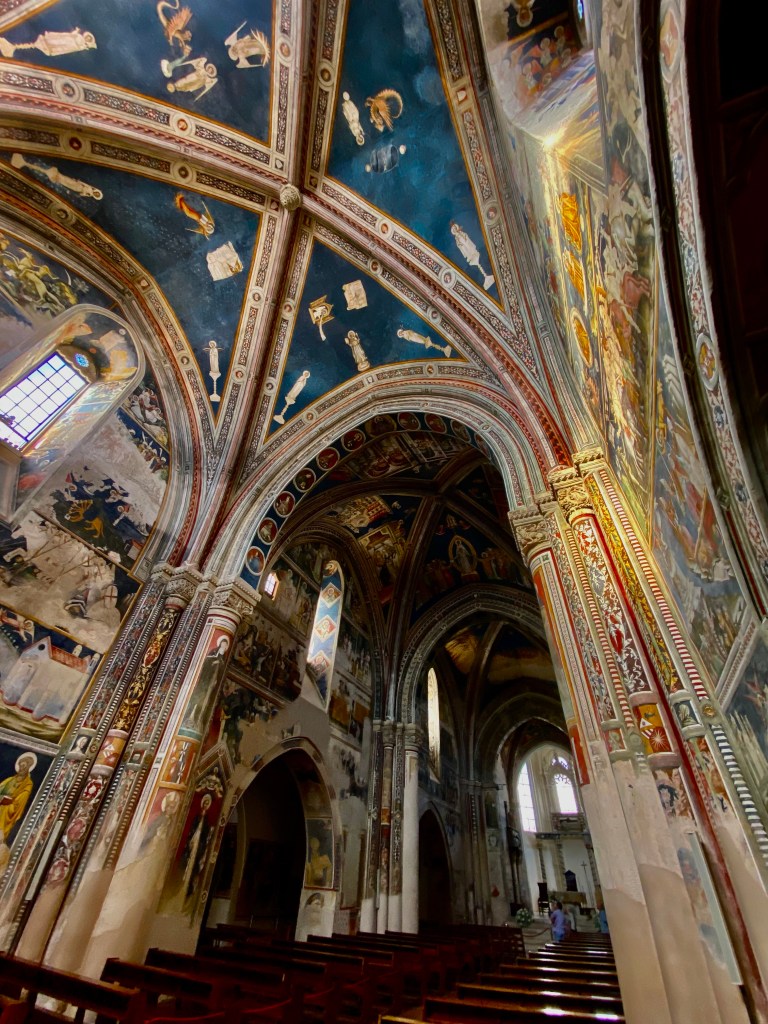

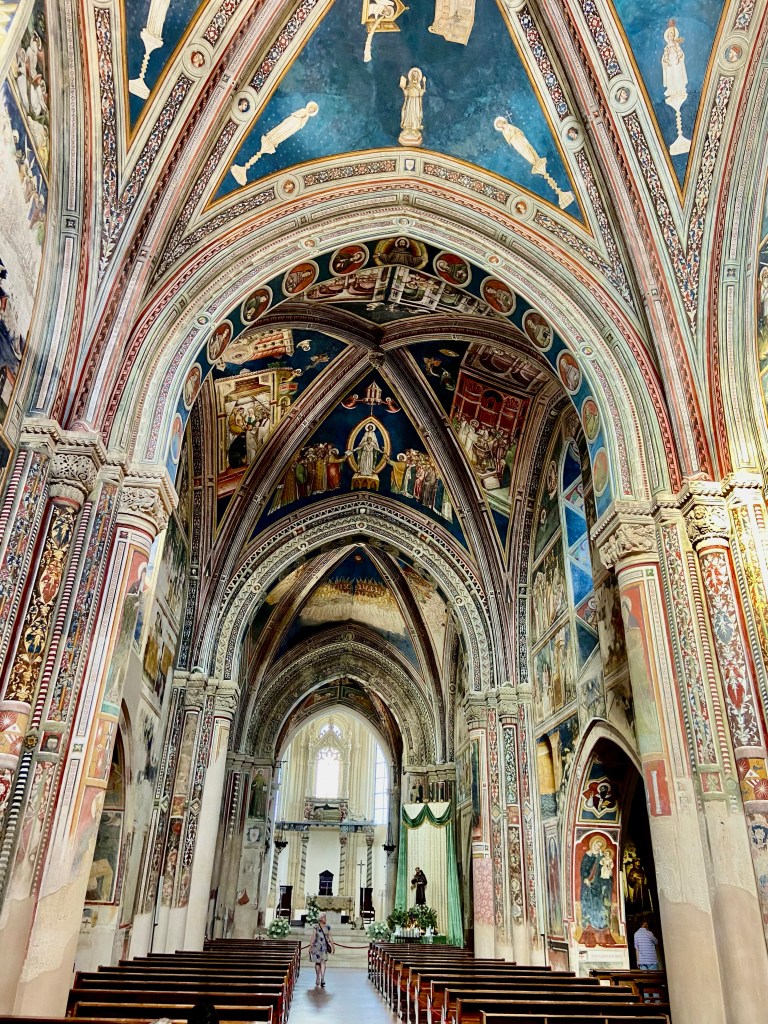

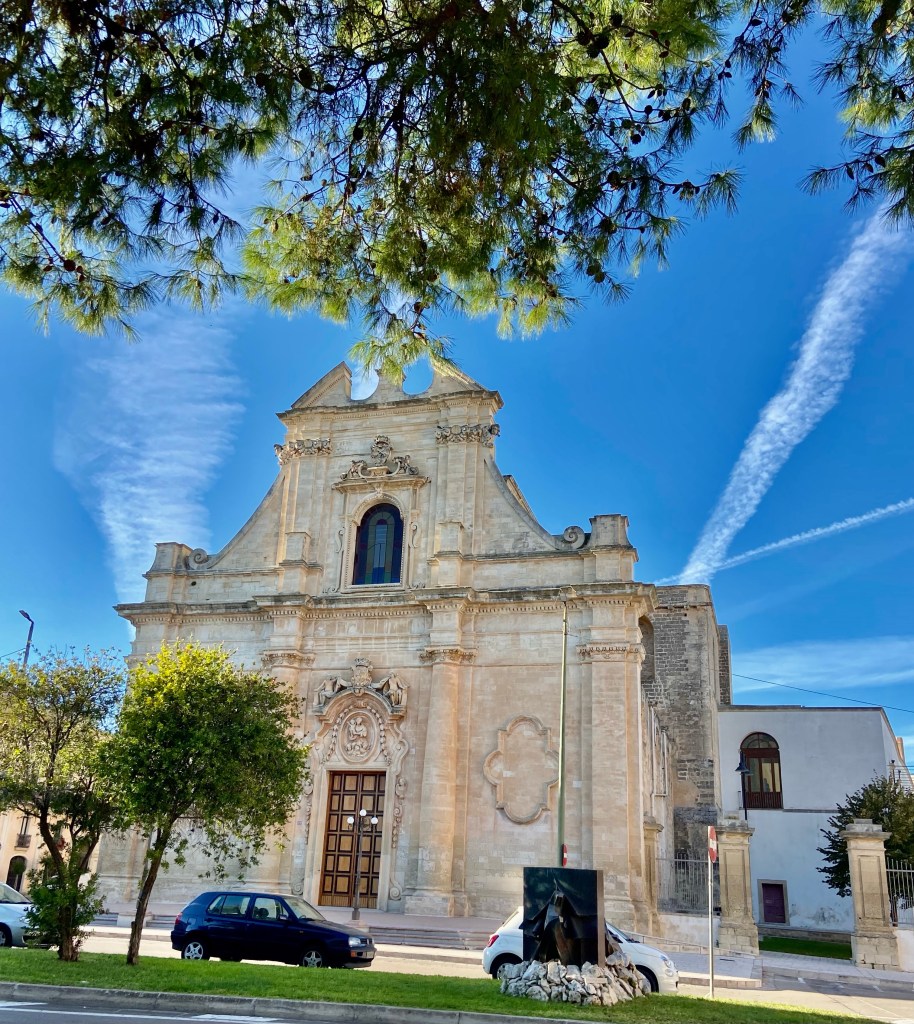

Ristorante Mediterraneo
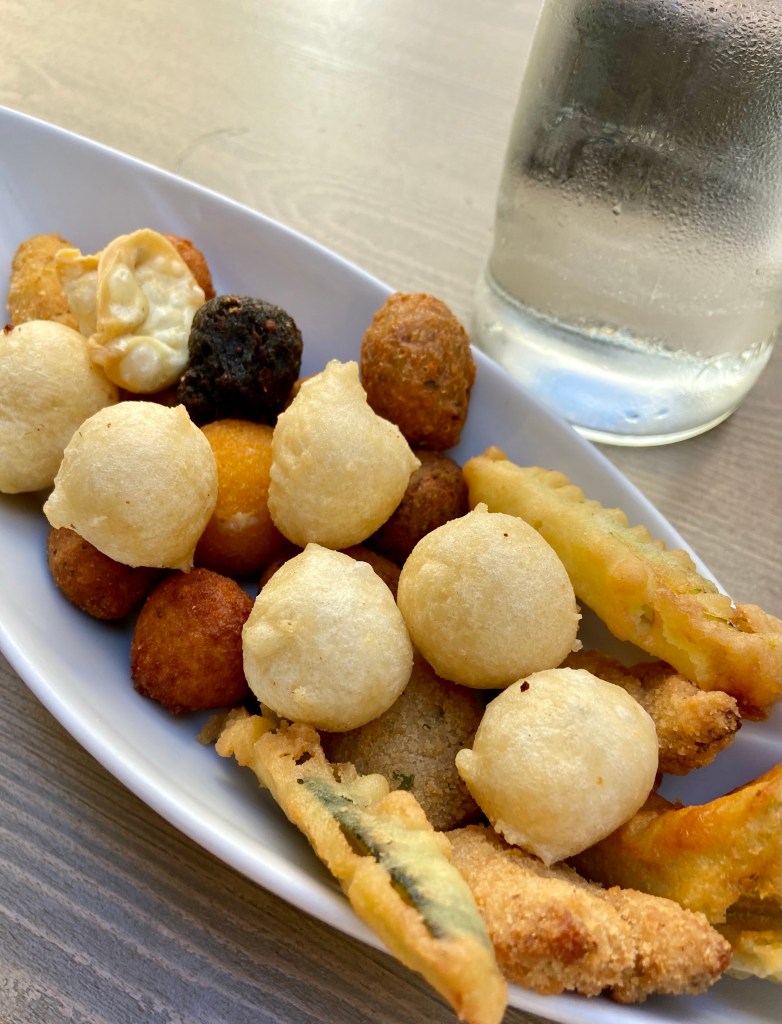

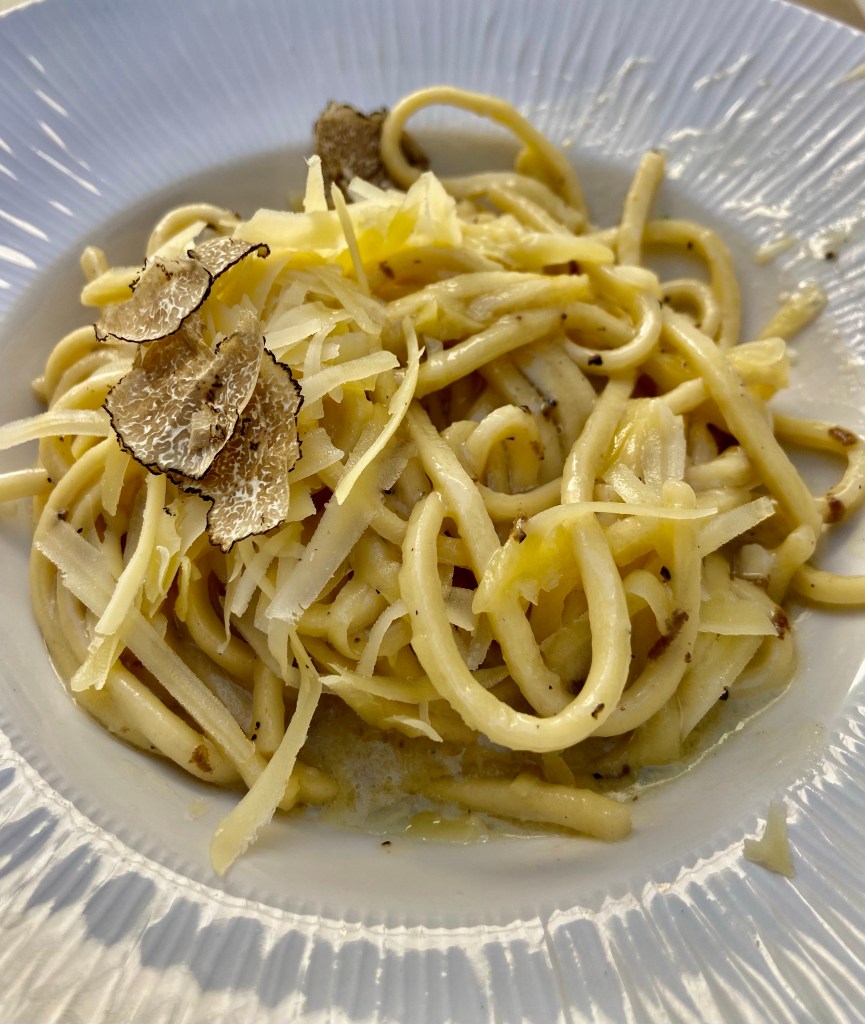
Nardo
Another town loaded with history and just 40 min. by train from Lecce ($2.50 pp each way). We had the same mini-train again, but we were prepared this time! Nardo was a central city of the Byzantine Empire until 1497 and the second largest and most populated city in the province, (2nd to Lecce). The Old Town is flush with palaces, churches, and chapels and the city is a significant example of Baroque style along with Gallipoli and Lecce.

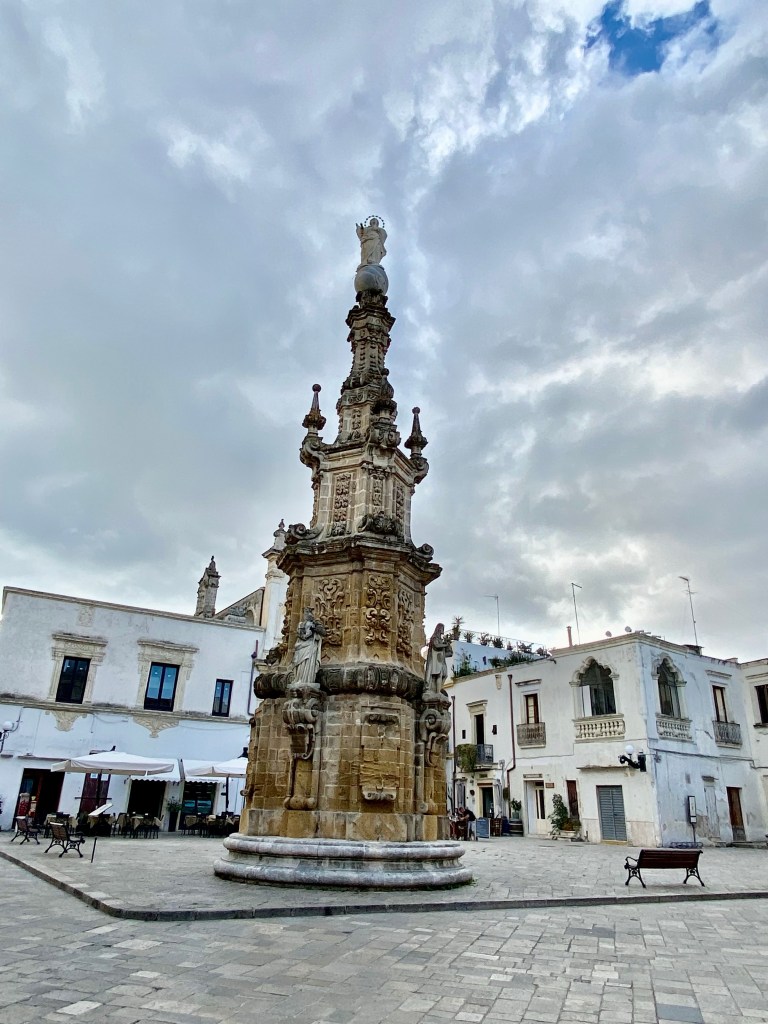

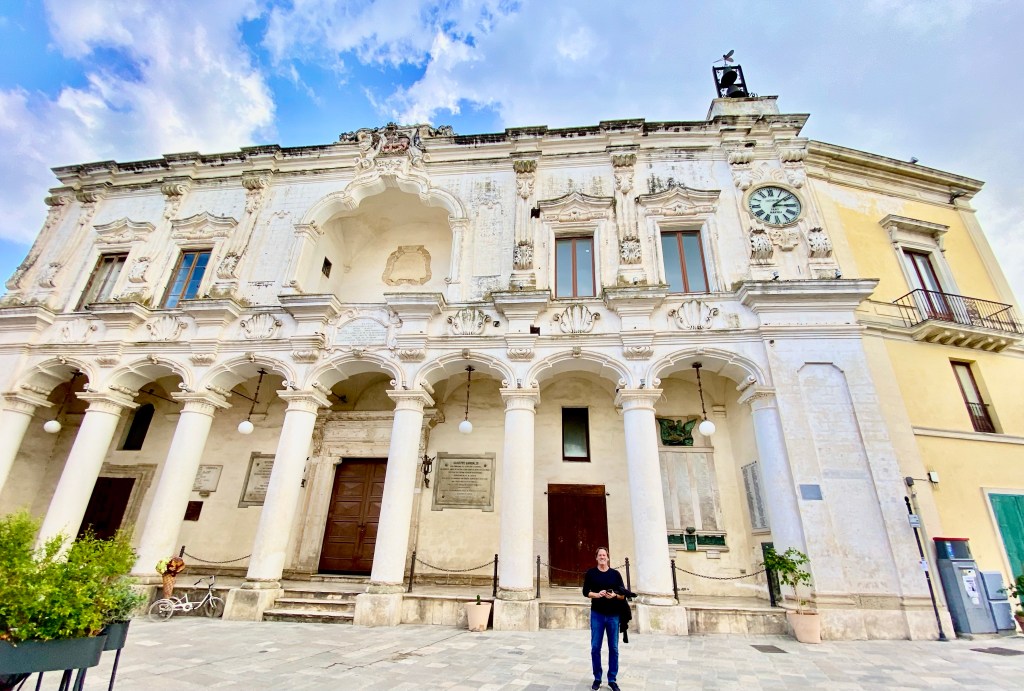
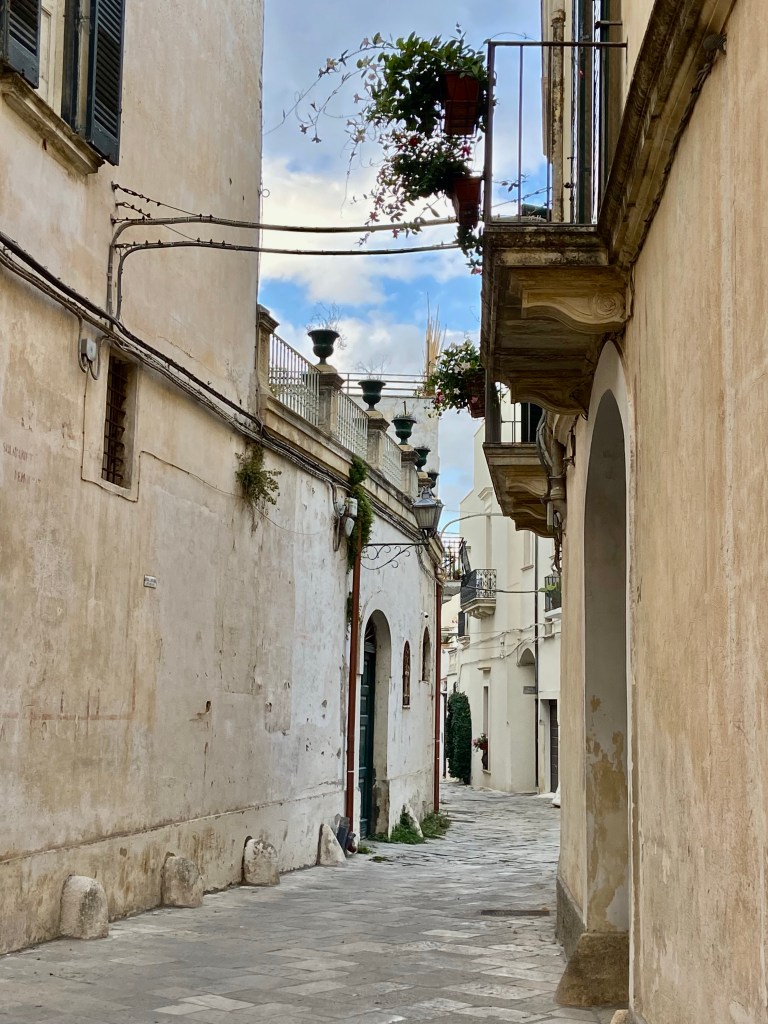
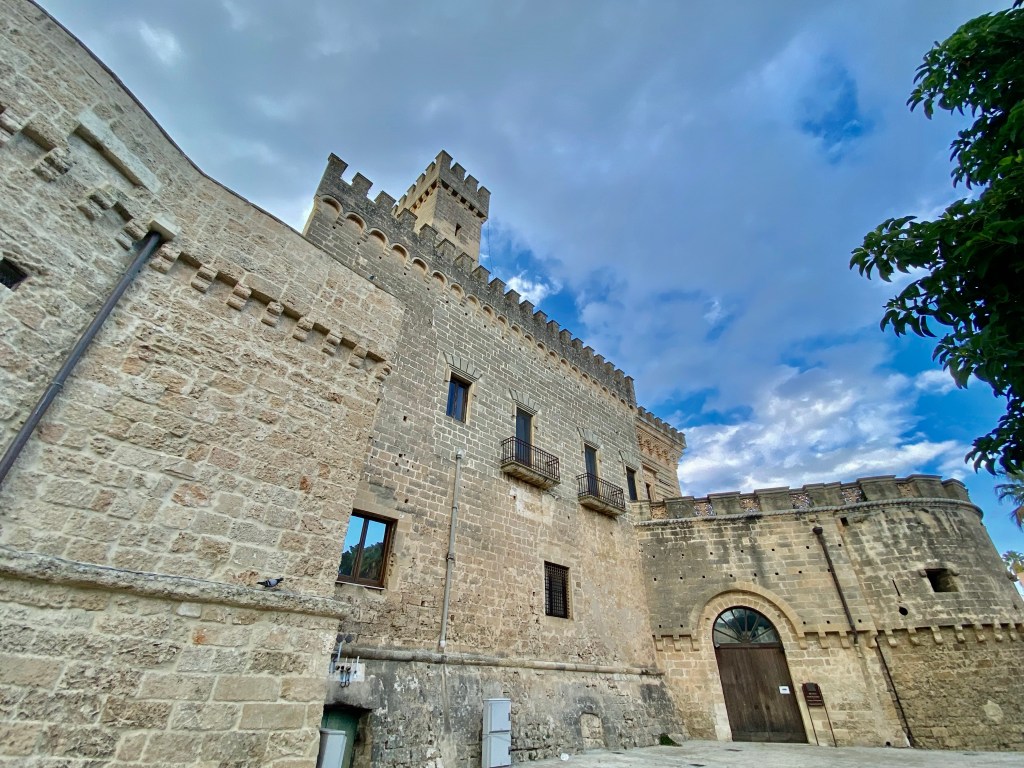

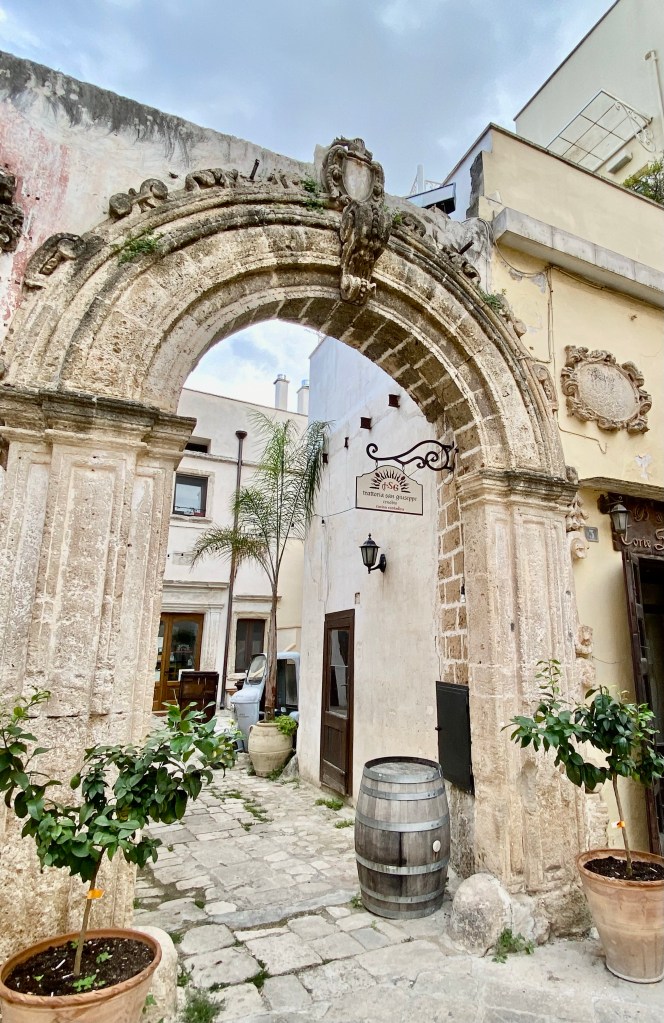

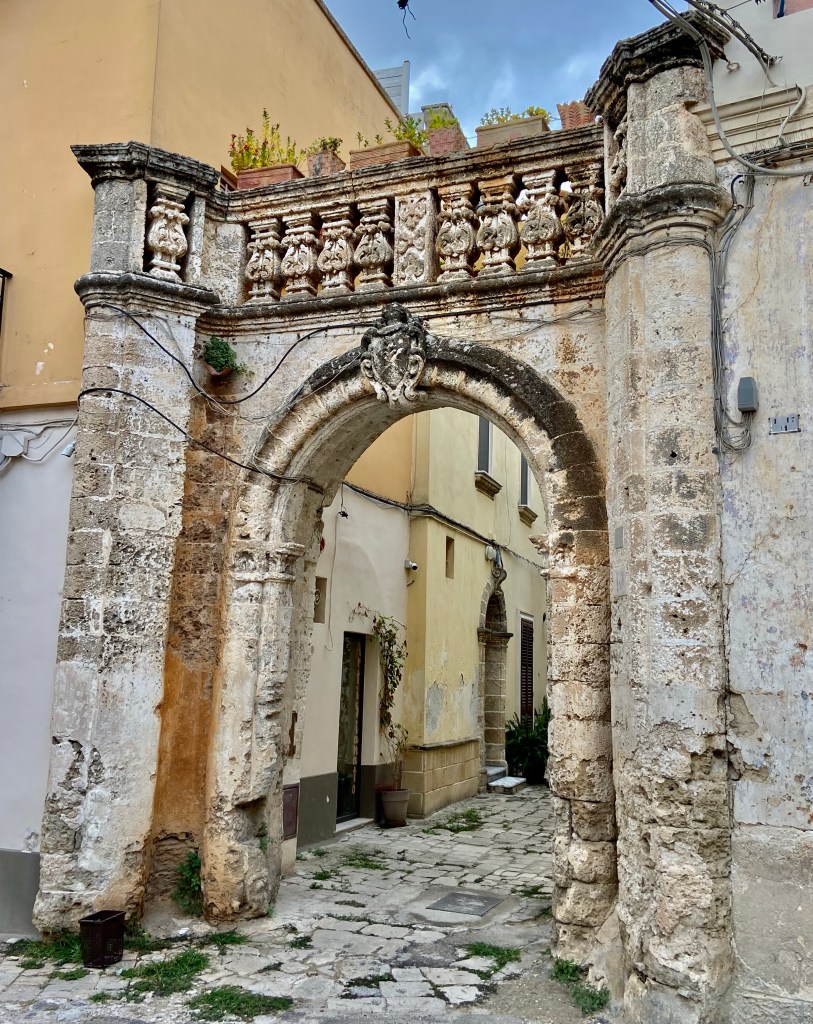

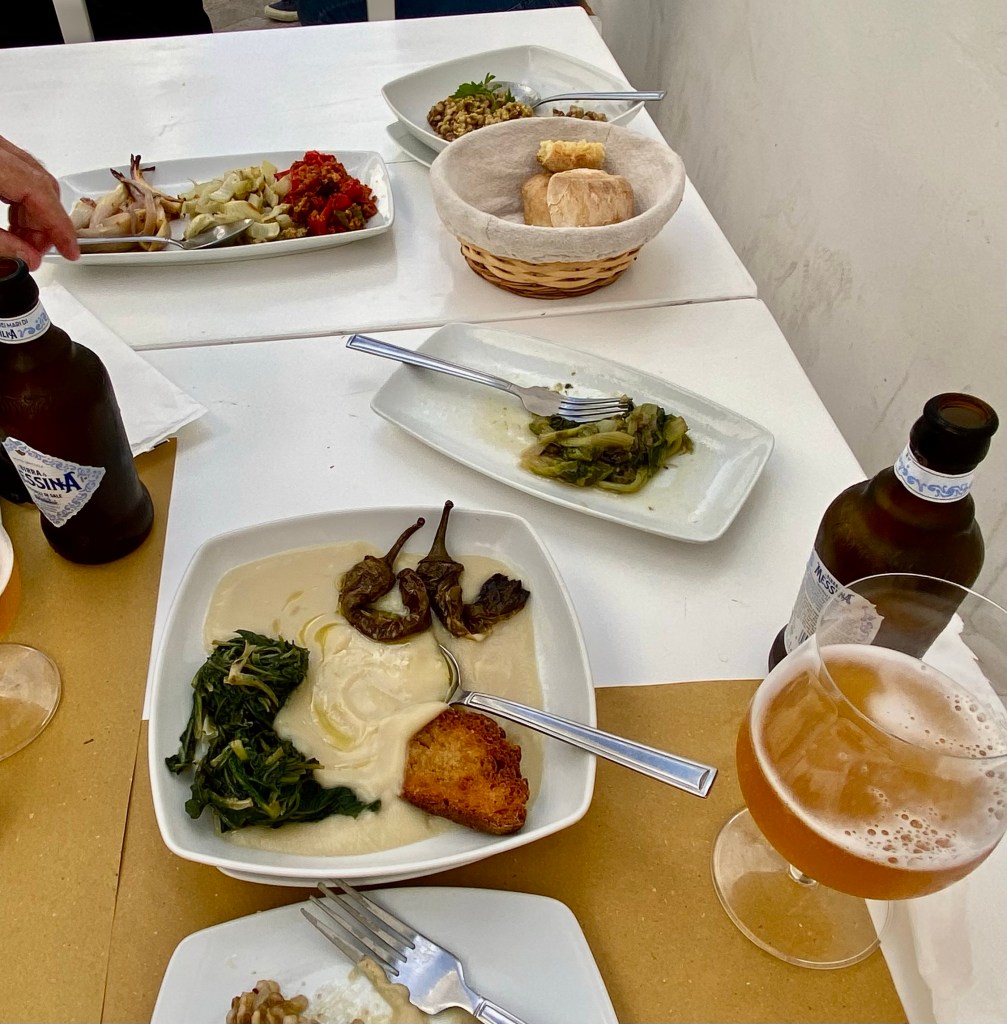

Otranto
Our last road trip in Puglia was an overnight stay in Otranto and a day trip to Gallipoli. We rented a car so we would have more freedom of movement, and headed 40 min. south into the heel of the boot. We stayed at the Hotel Bellavista, which has great private parking, and a gorgeous location with views of the water and the Porta Terra. After we stowed our bags, we headed out to find food, which gave us a first look at the walled old town. It was so charming I almost forgot I was hungry! We had a gorgeous plate of seafood at Agli Angeli Ribelli, and afterwards, walked down to the harbor and all around the bastione dei Pelasgi.
One of the highlights of Otranto is its cathedral, Cattedrale di Santa Maria Annunziata. The cathedral was consecrated in 1088 and its most famous feature is its 12th-century floor mosaic covering the entire floor of the nave, the sanctuary and the apse. In 1480, clergy and survivors of the Ottoman siege of Otranto took refuge in the cathedral. The forces eventually broke in and killed those inside. There is a chapel dedicated to the martyrs, displaying the bones of the refuges.


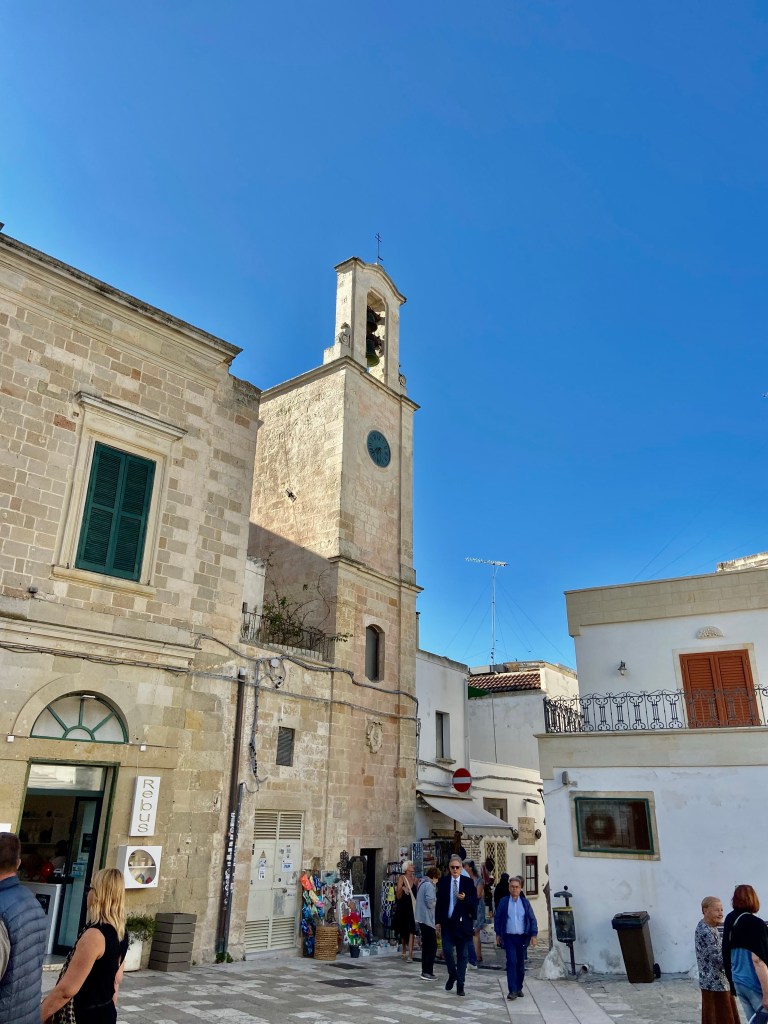

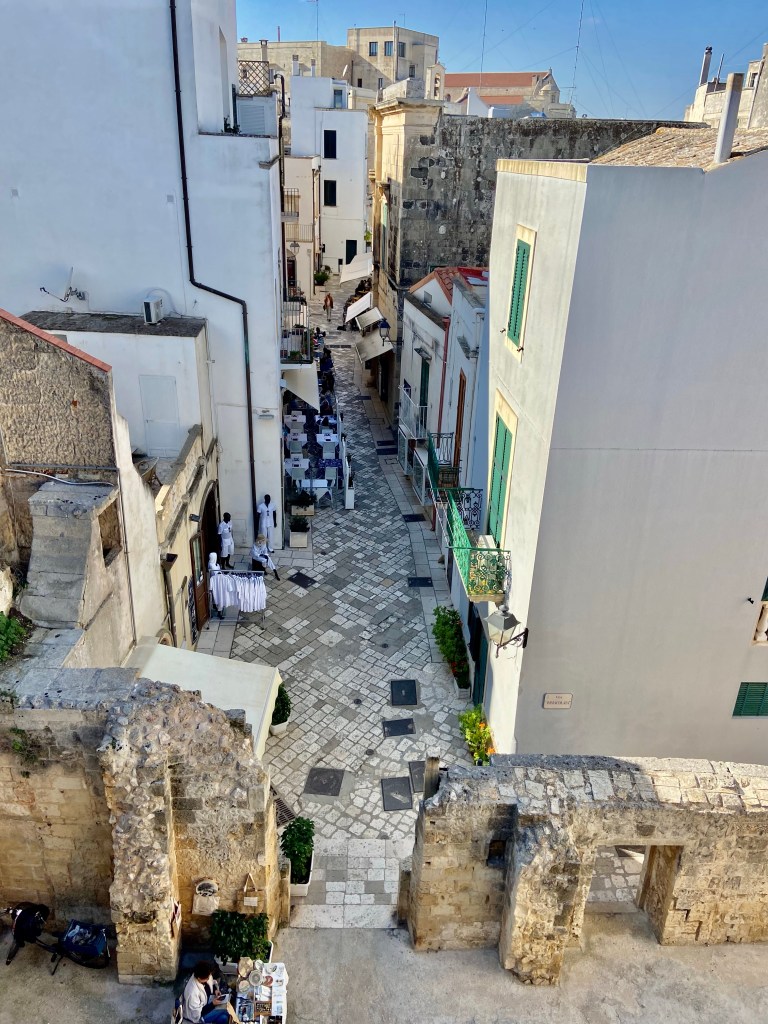
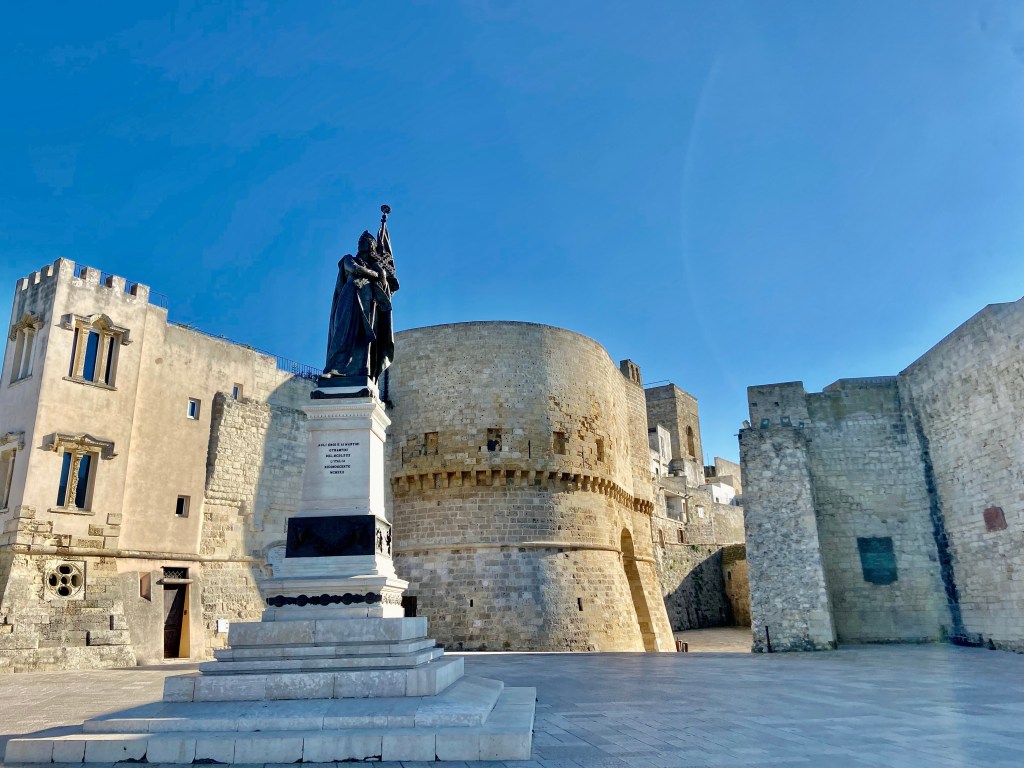



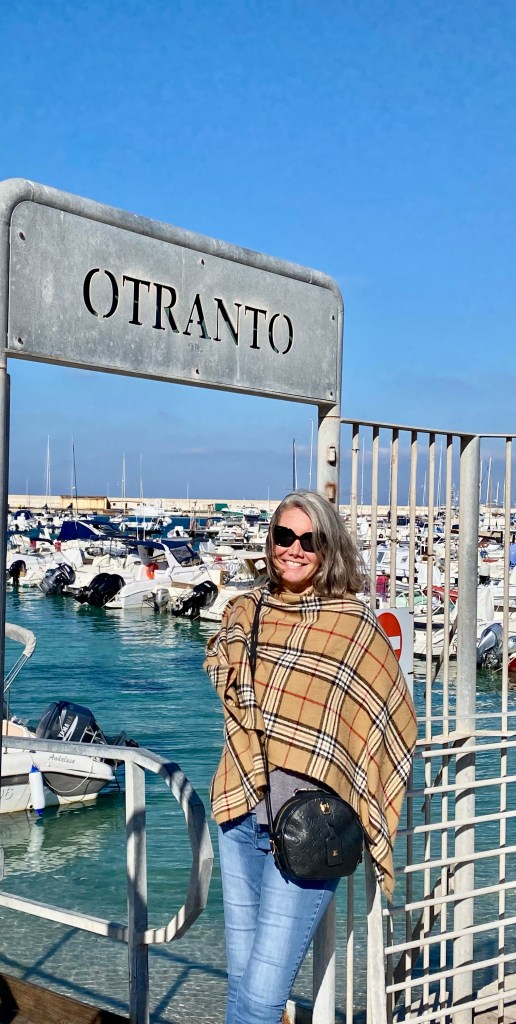
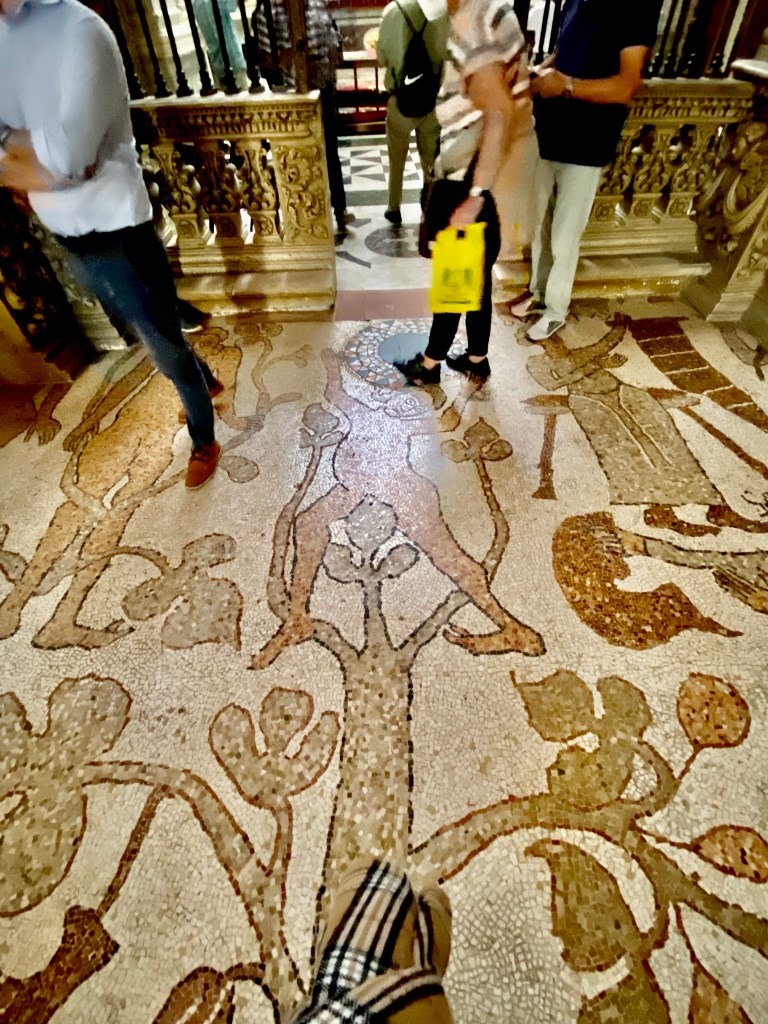
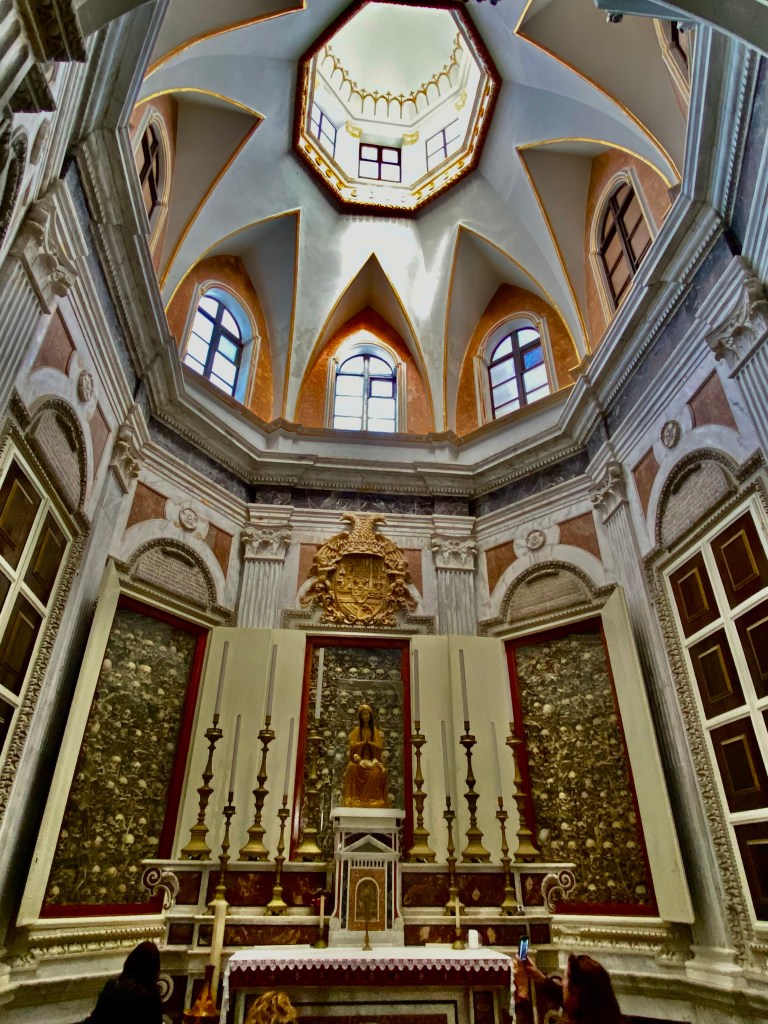


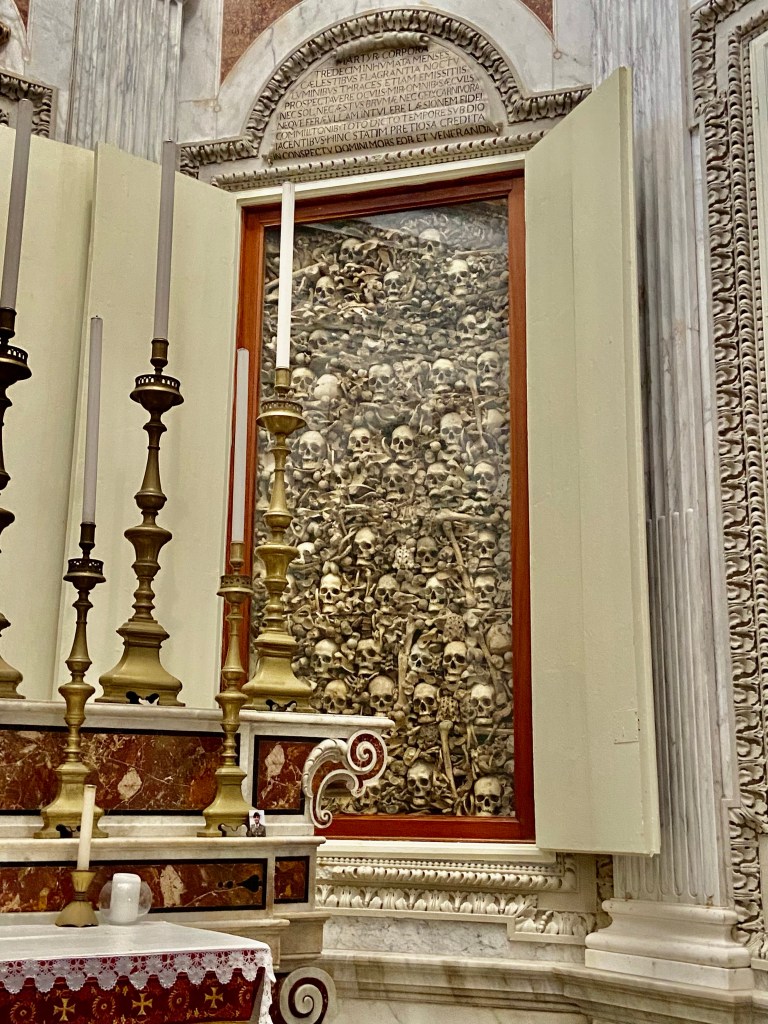
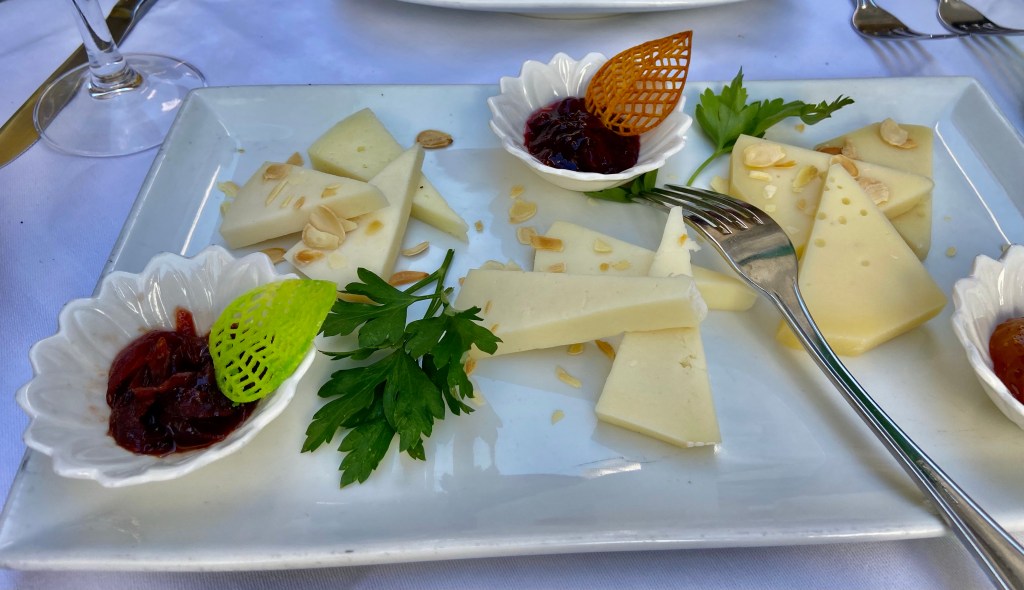


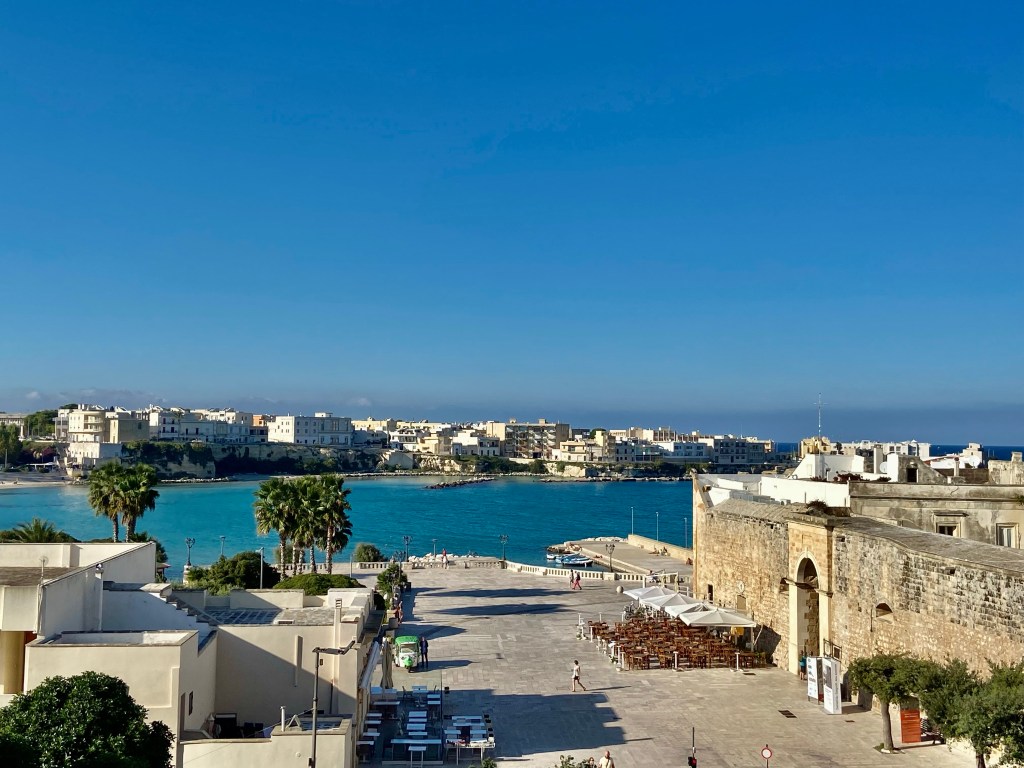
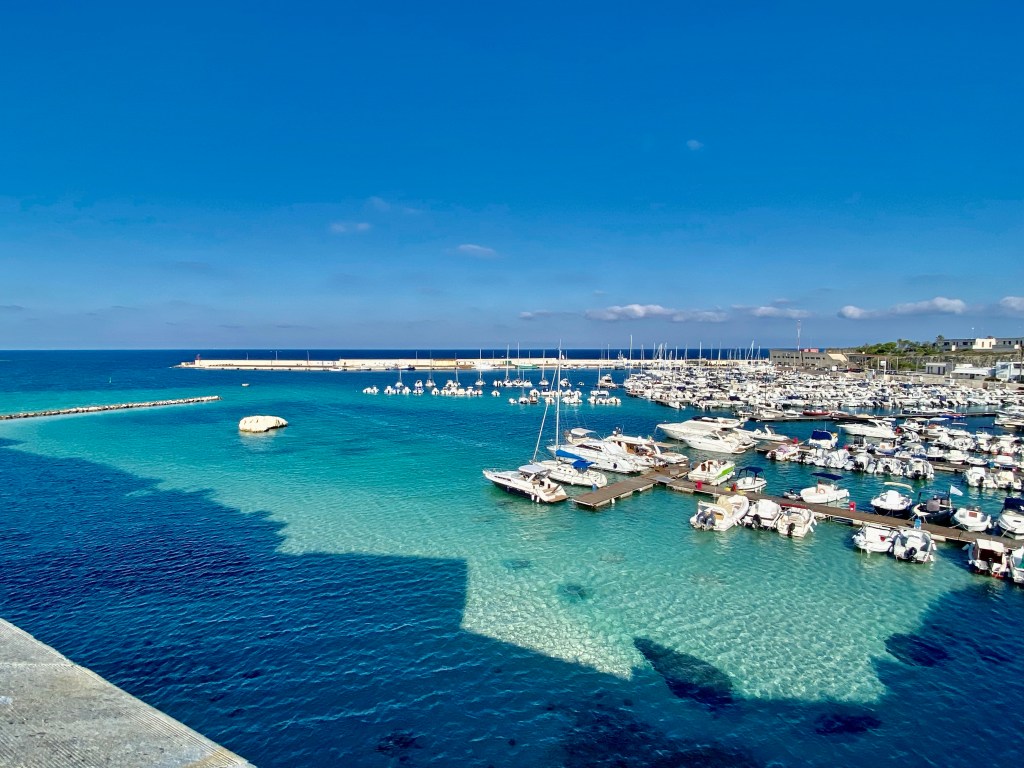
Gallipoli
Our last stop in Puglia was a quick one-hour drive from Otranto. We parked our car in a pay lot by the port, and took a leisurely walk along the Riviera Sauro, where we found lots of ocean-side cafes with umbrella shaded tables. In mid-October, there were still a few brave swimmers, and we found a sunny spot to enjoy a cold beer and people watch. Our hunger was starting to pull us away from our spot, and we found some great pasta and seafood at Osteria Briganti. After lunch we walked the via Antonietta de Pace, past the Basilica Concattedrale di Sant’Agata, down to the water’s edge. Sadly, it was getting close to the deadline to return the car, so we departed Gallipoli and got back on the road to Lecce. We made a quick stop at the beach near Lecce to put our feet in.
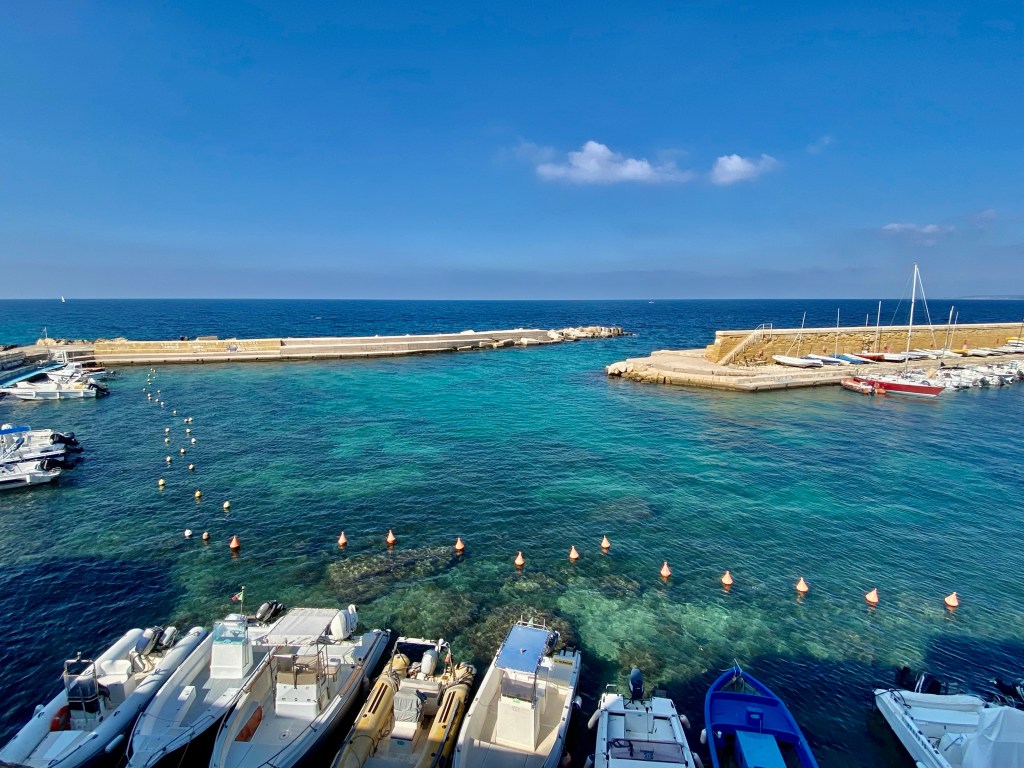

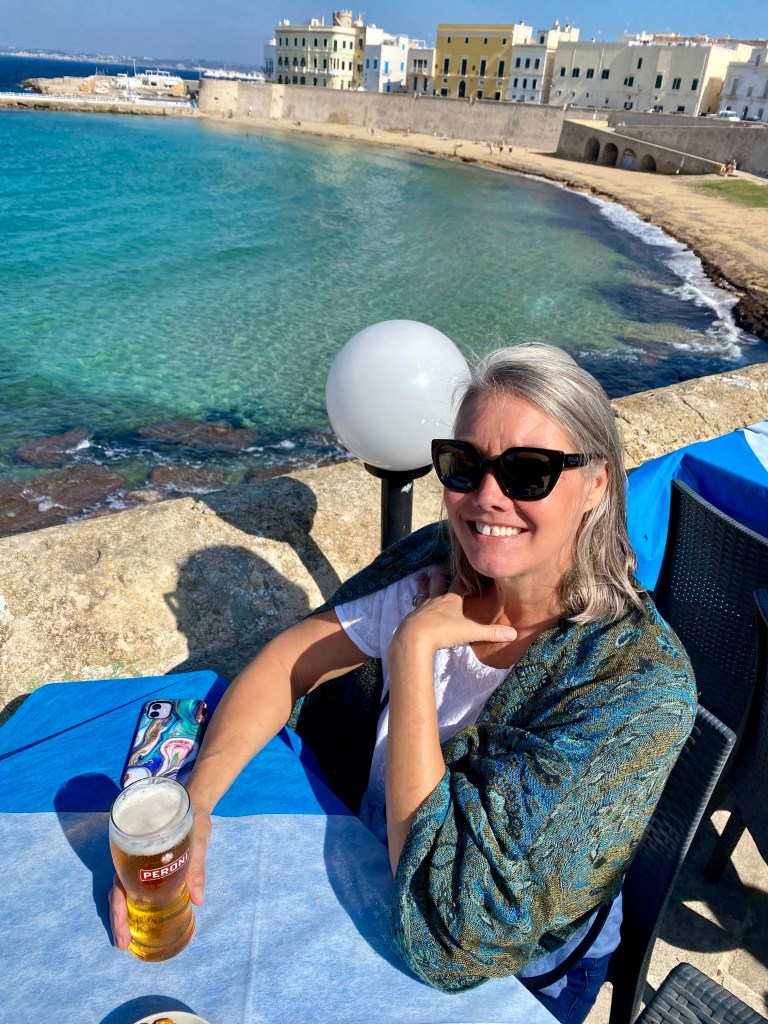
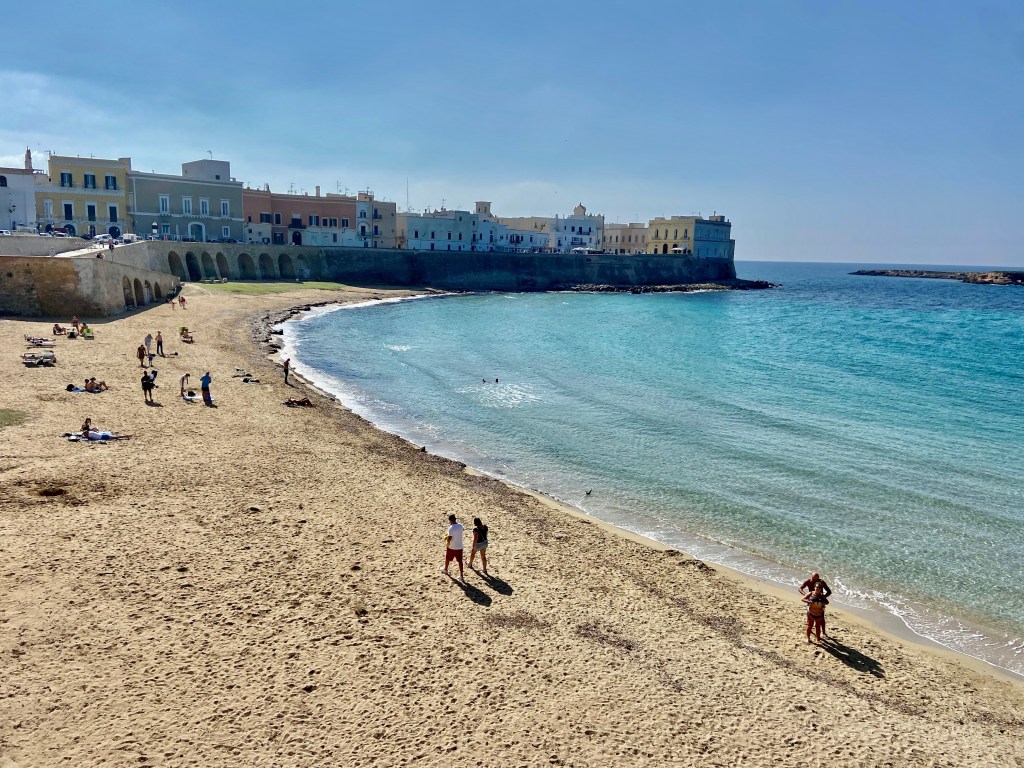
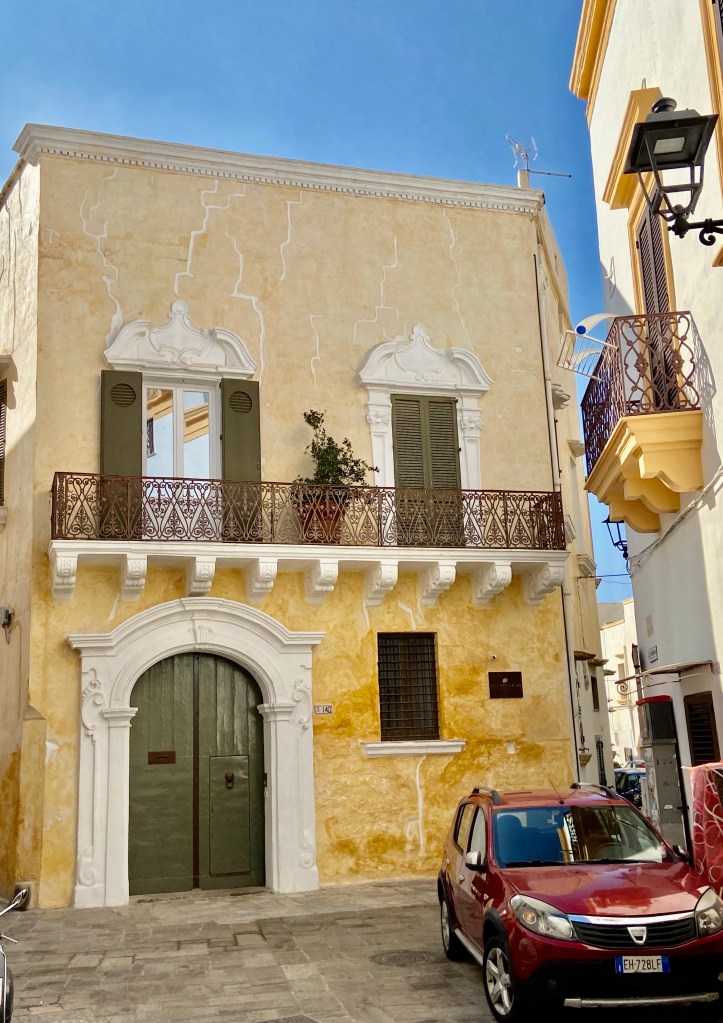
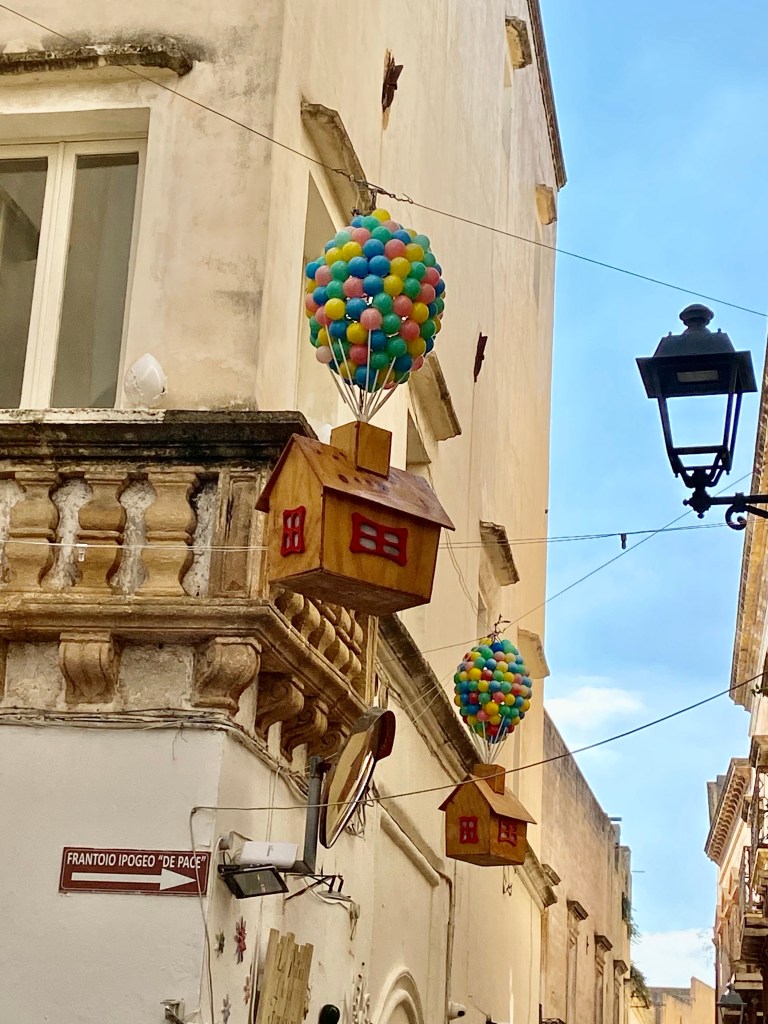
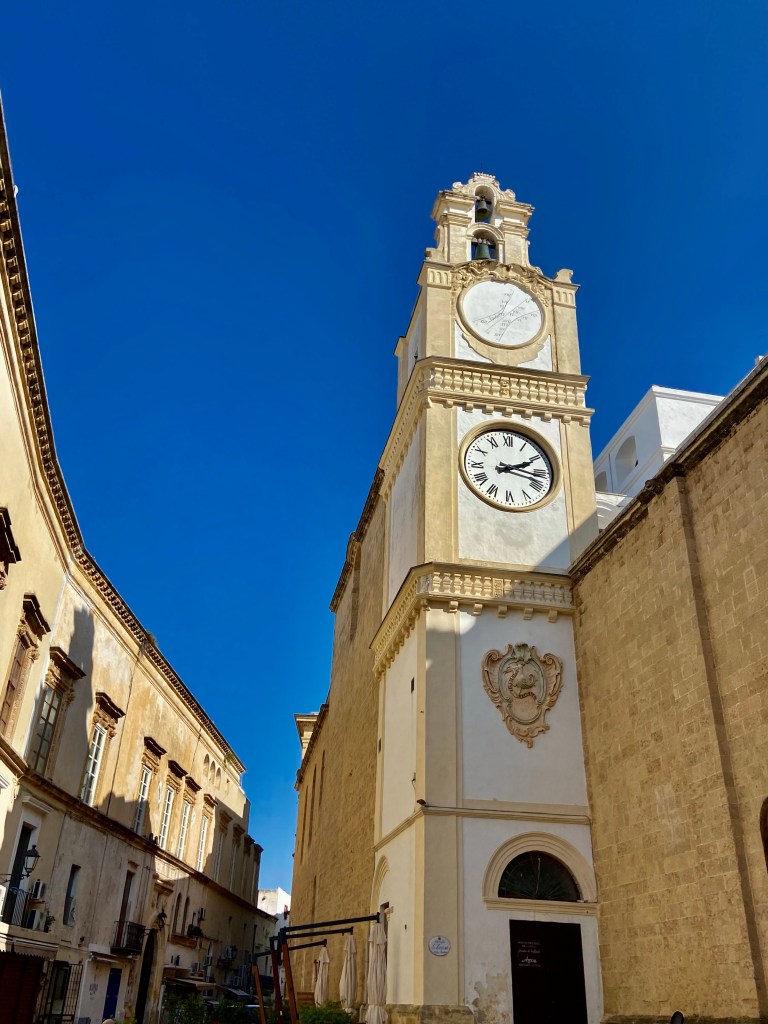

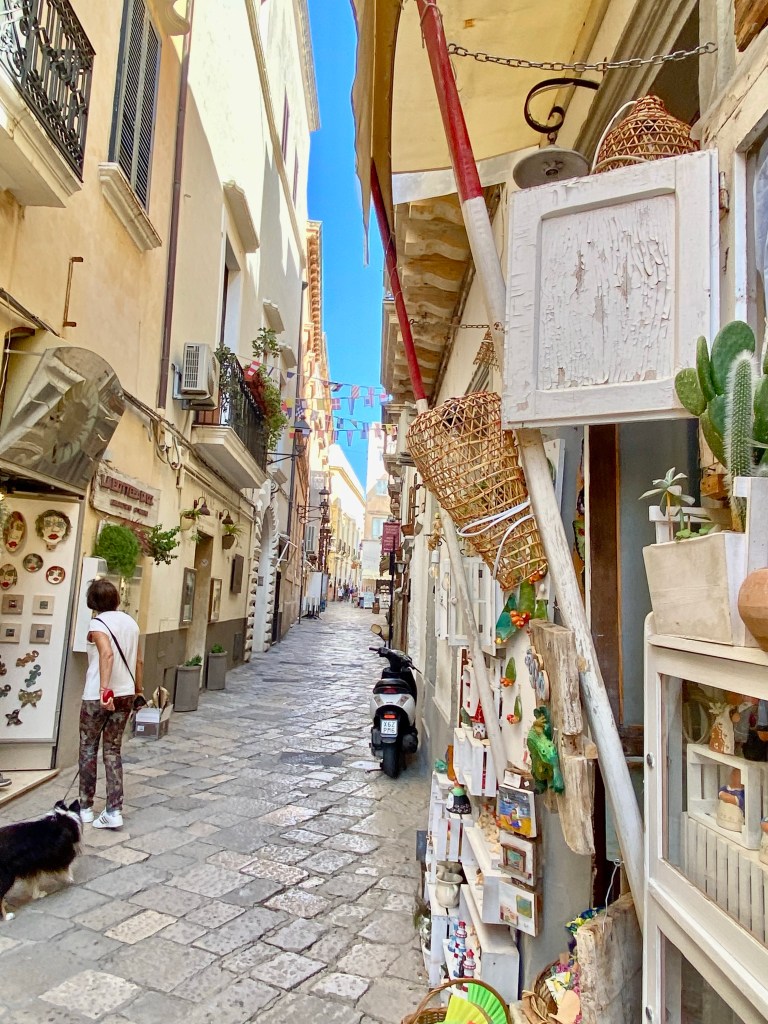
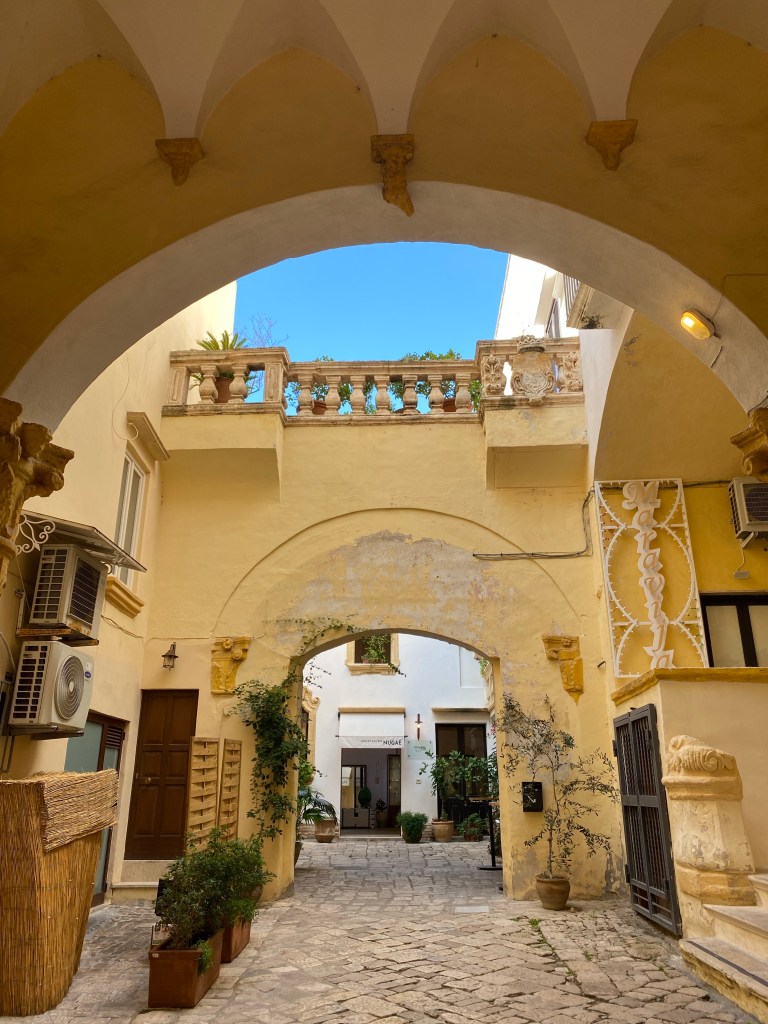
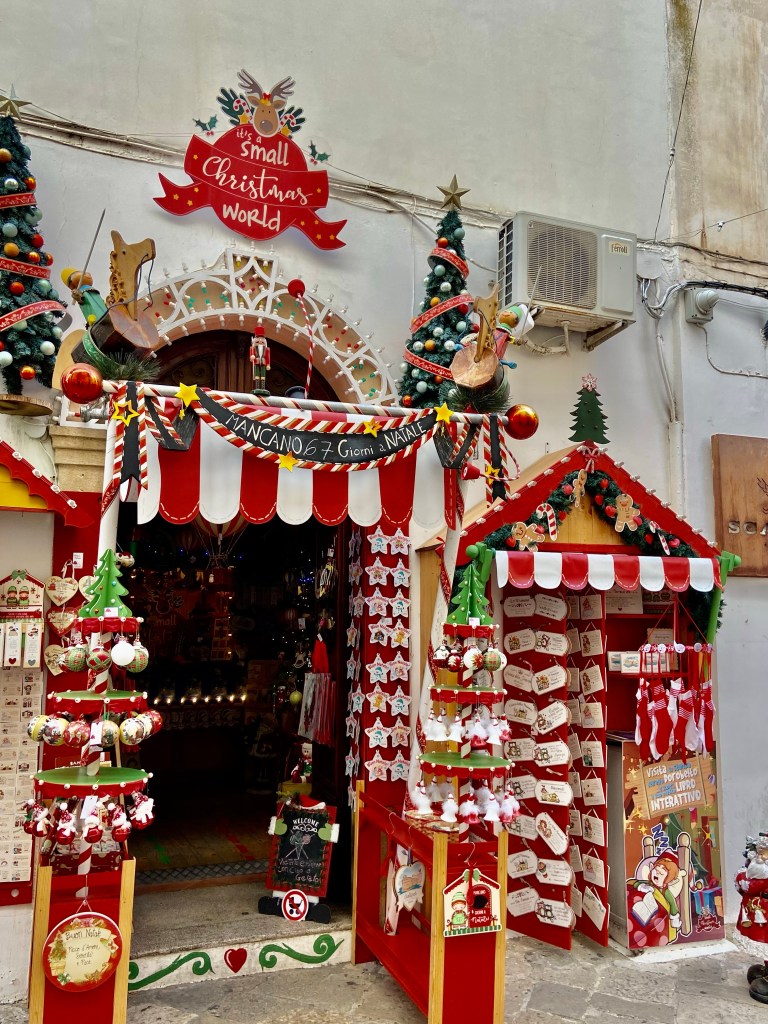
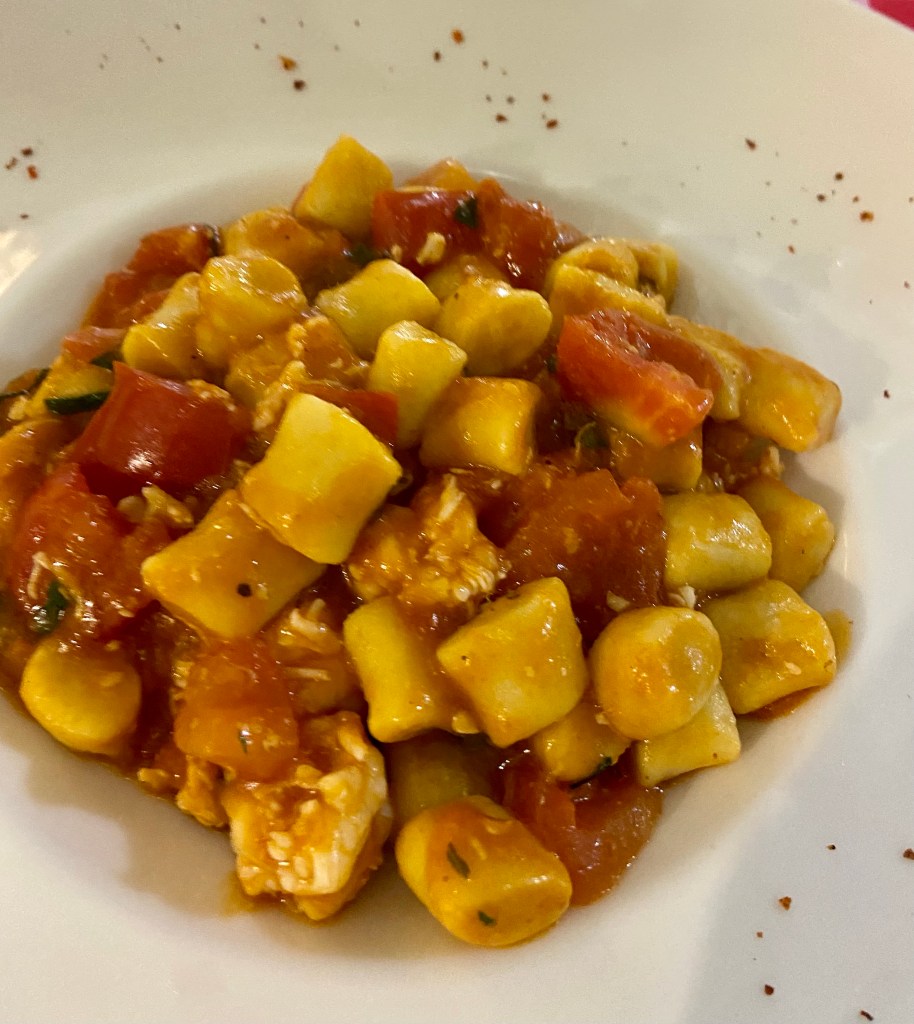
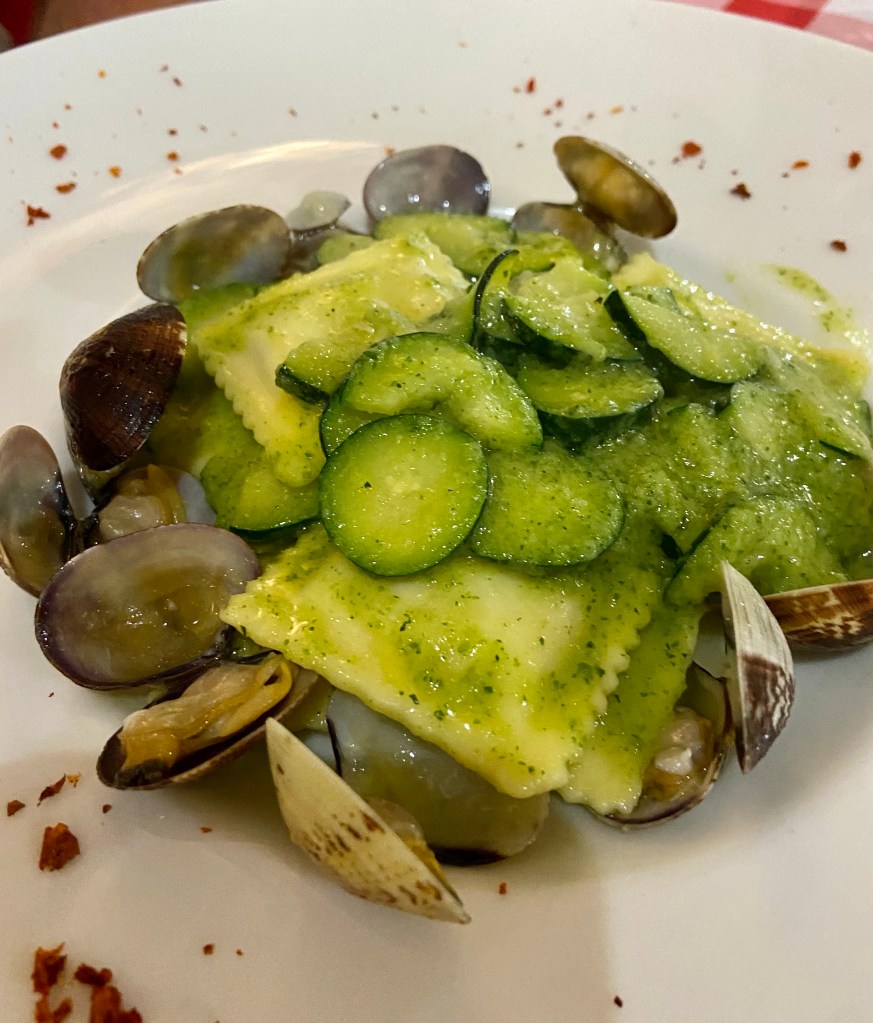

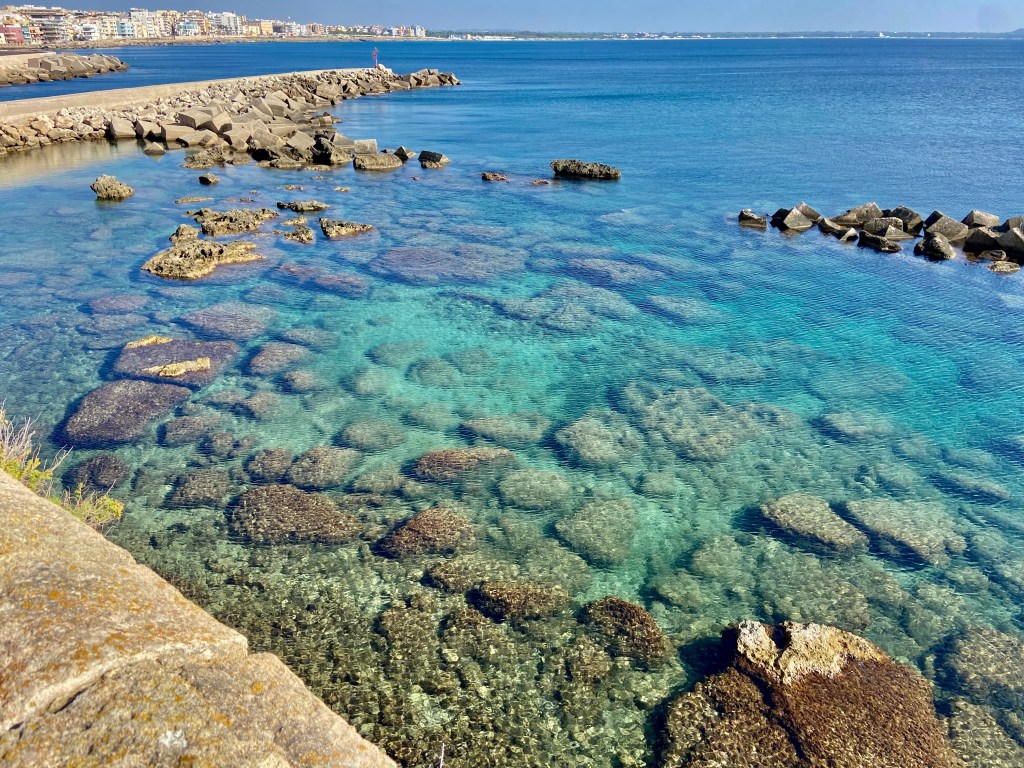
We spent our final few days in Lecce, re-visiting our favorite spots and just taking it all in. We wondered aloud more than once how Lecce wasn’t more well known, but we weren’t complaining. We are just fine keeping this jewel a secret.
For more of our Italian itineraries, click HERE!


Excellent, as usual! You two are lucky to be able to travel extensively at a relatively young age. We didn’t start traveling outside the U.S. until our mid-60s. Want to travel much, much more, until we’re not physically able (maybe 85?).
Vic
LikeLiked by 1 person
We definitely feel very fortunate
LikeLike
Thanks Stephanie
Sent from Yahoo Mail for iPhone
LikeLiked by 1 person
[…] Puglia: We spent a full month in Lecce, exploring the various towns of the heel of the boot. […]
LikeLike
[…] spending a month in the Puglia region of Italy, it was sadly time to move on. We had a wonderful apartment in Lecce, and hoped our […]
LikeLike